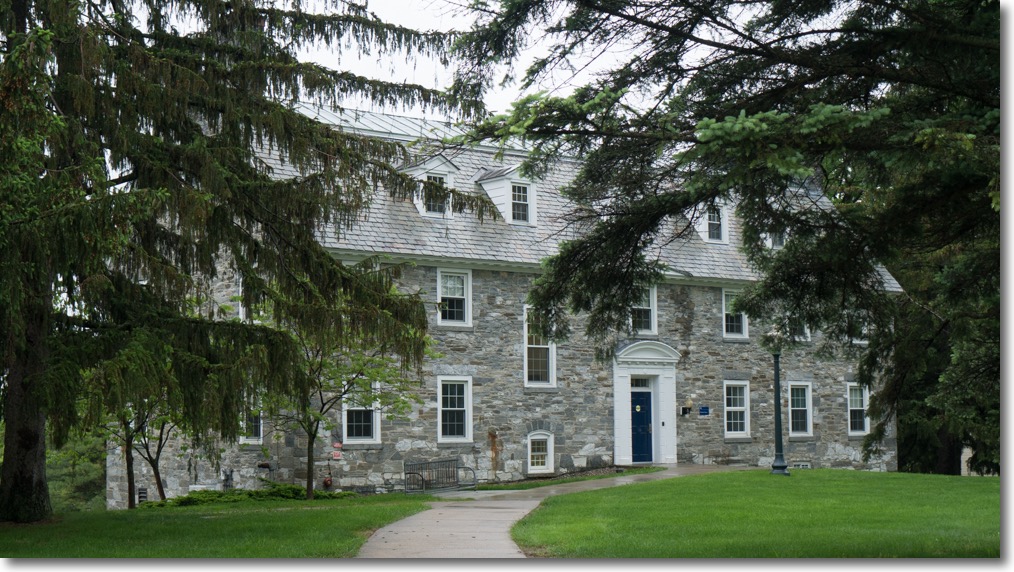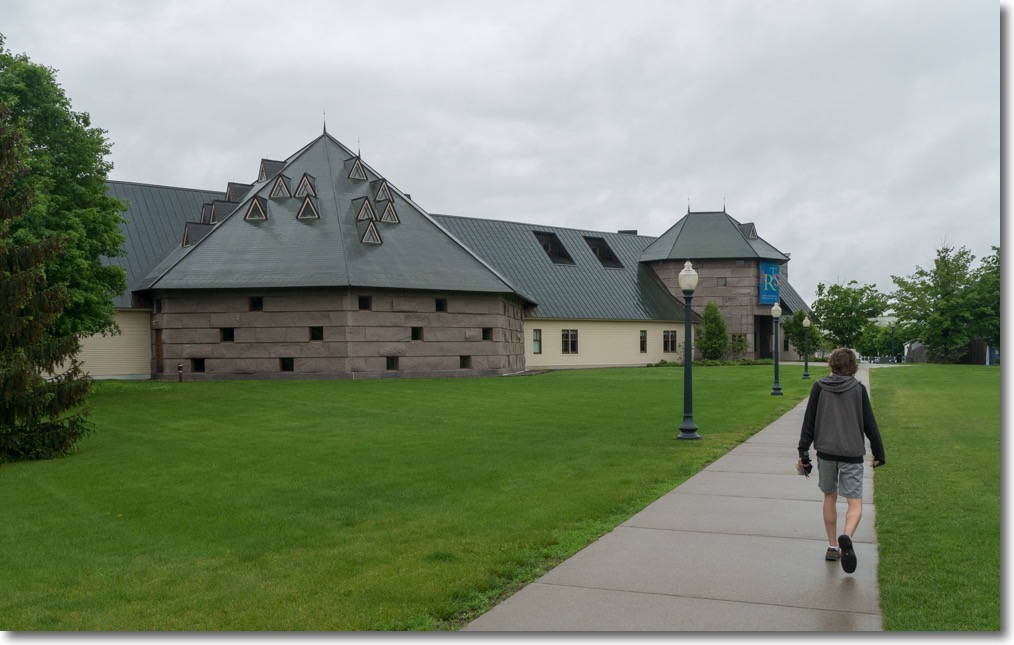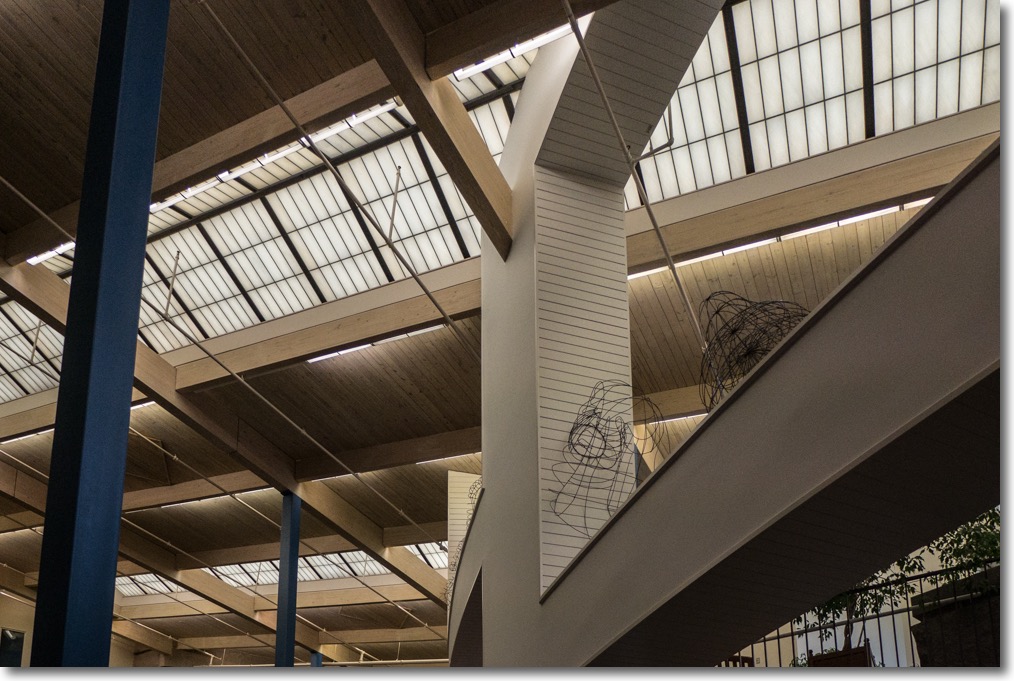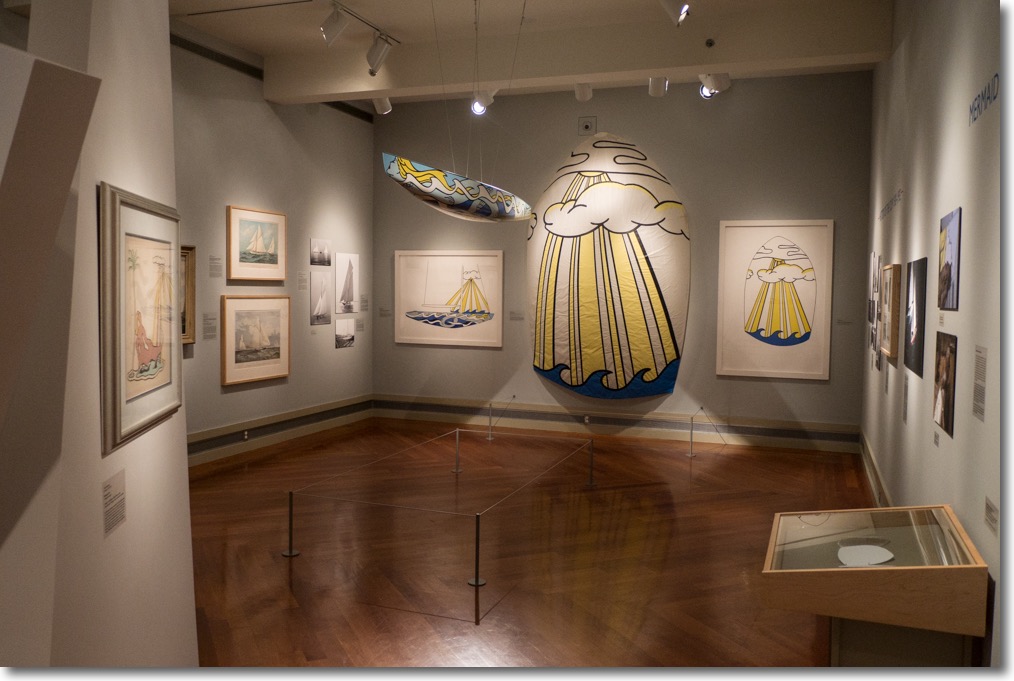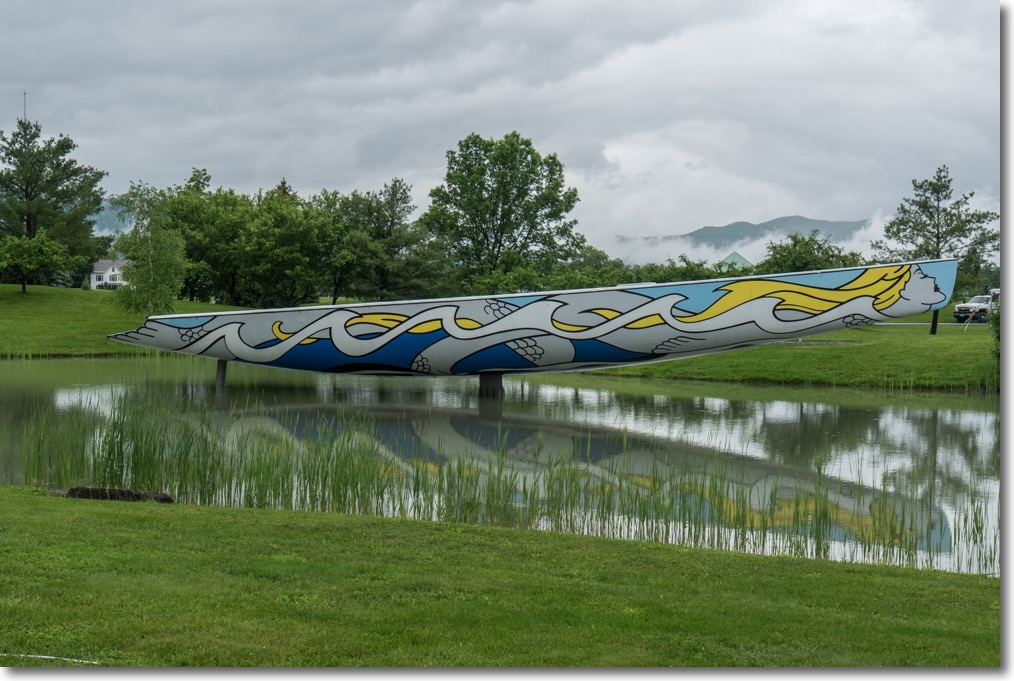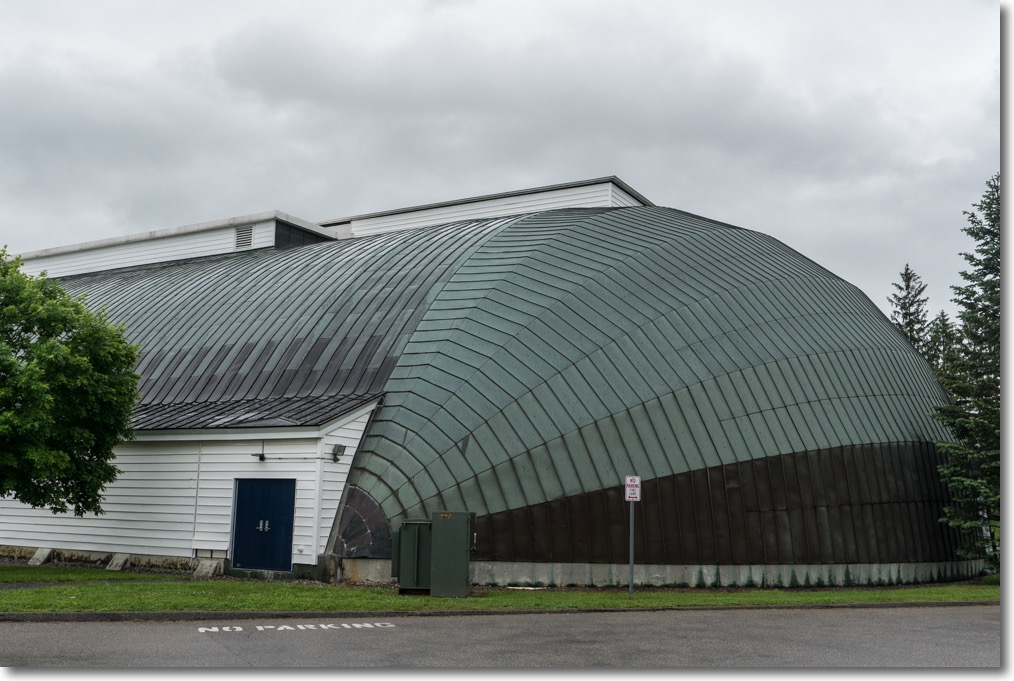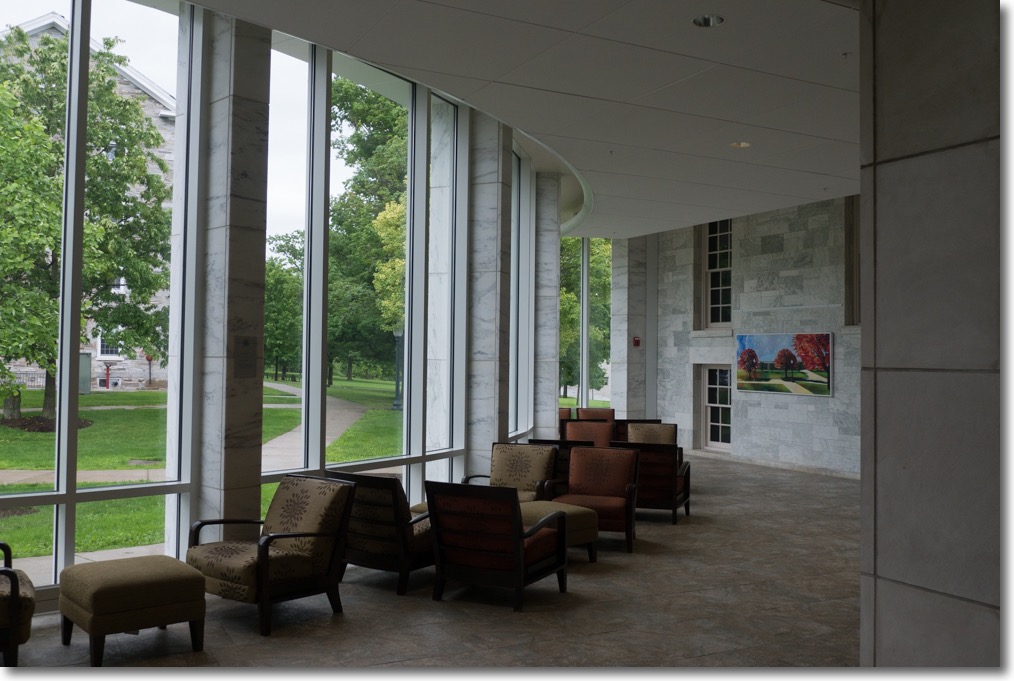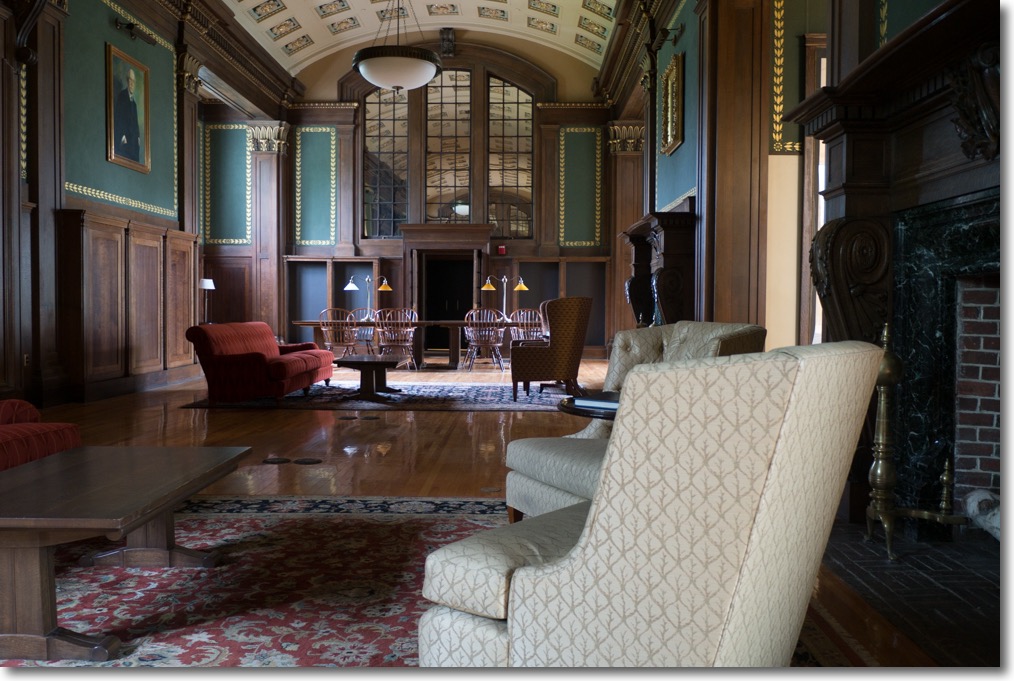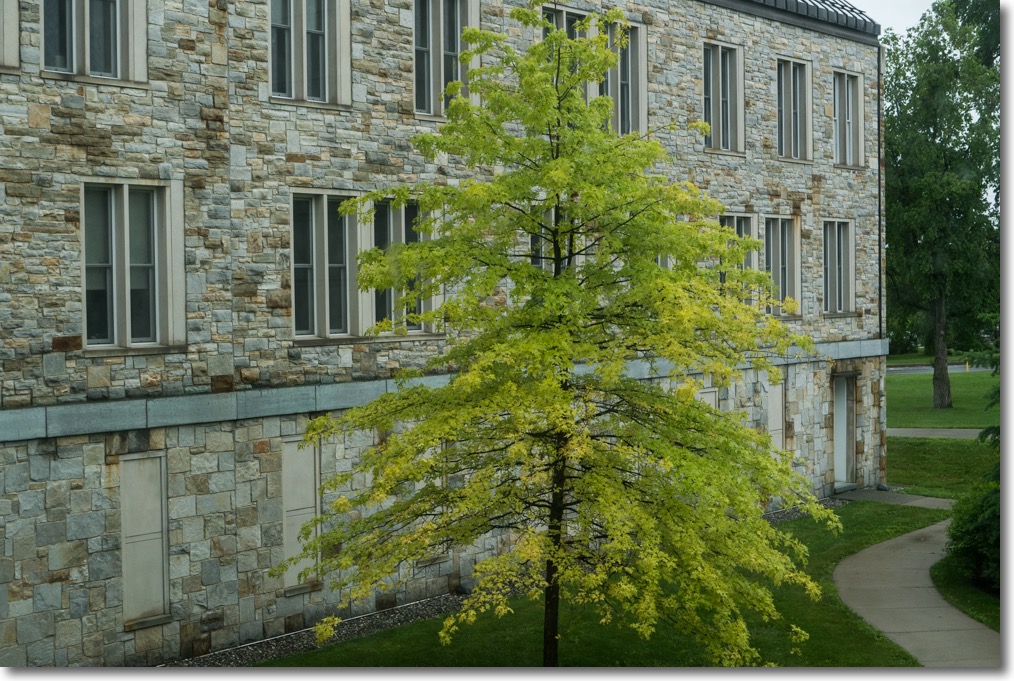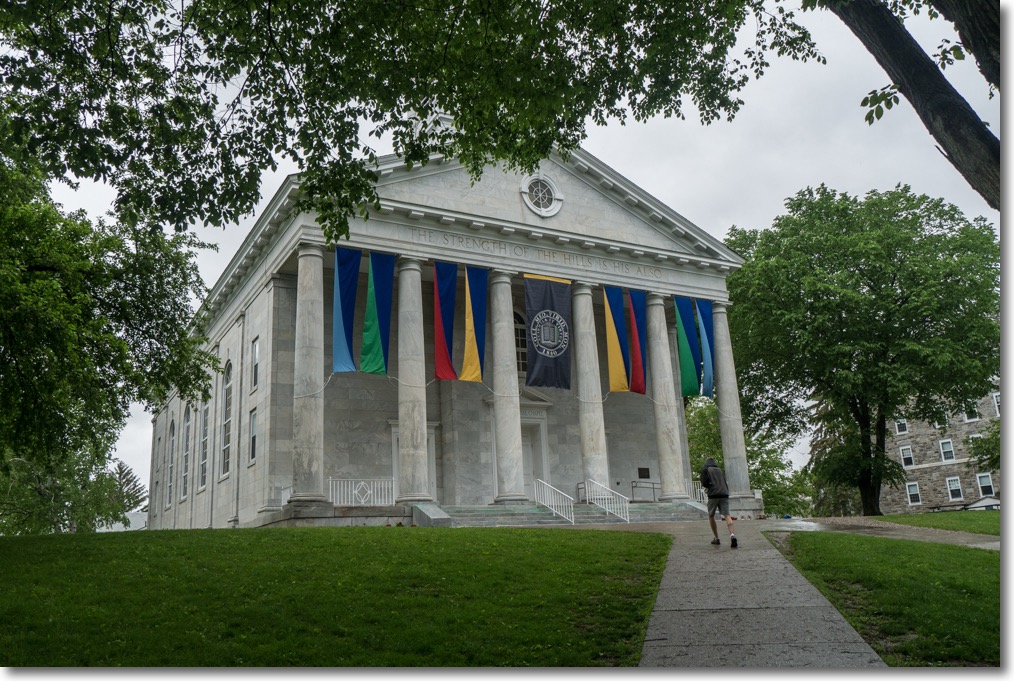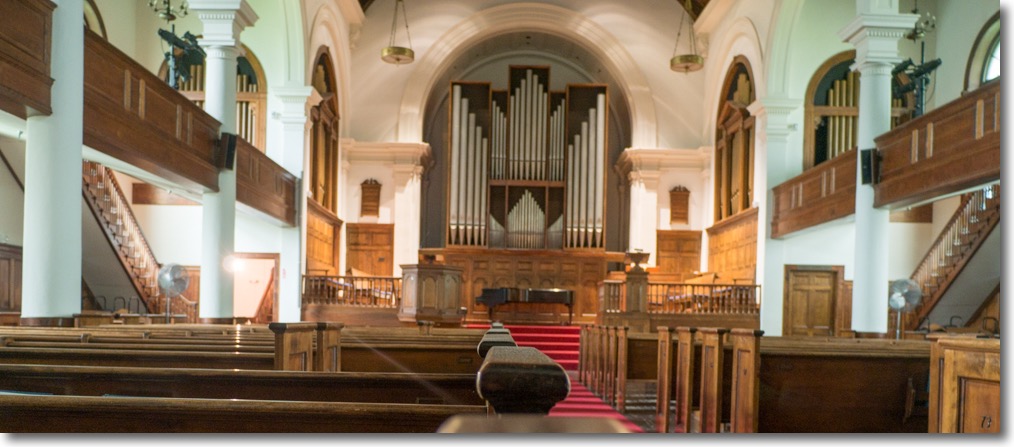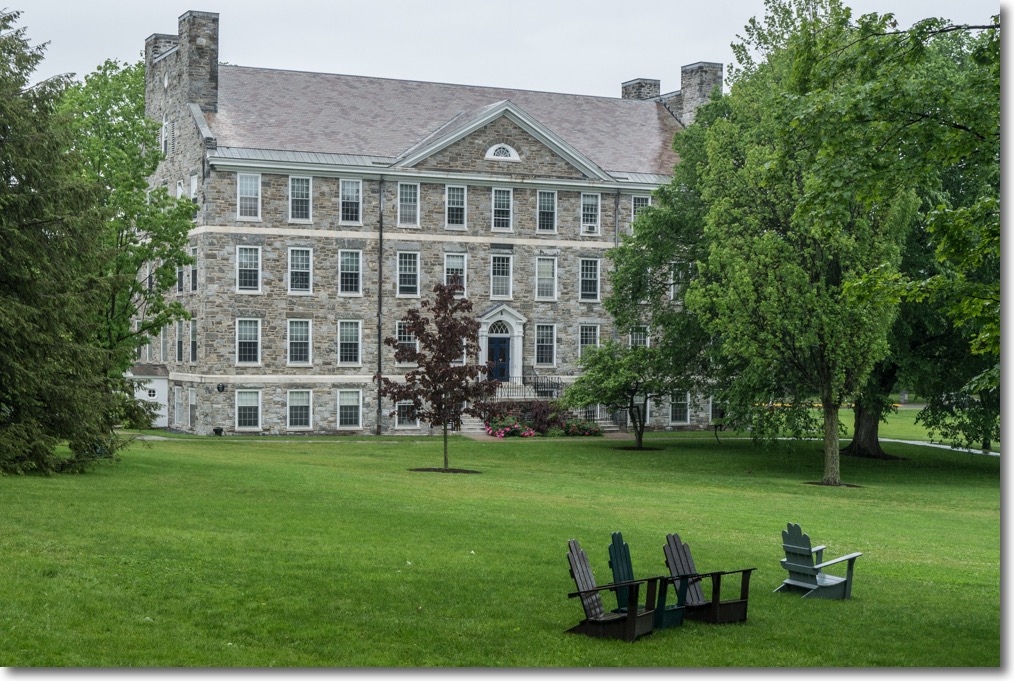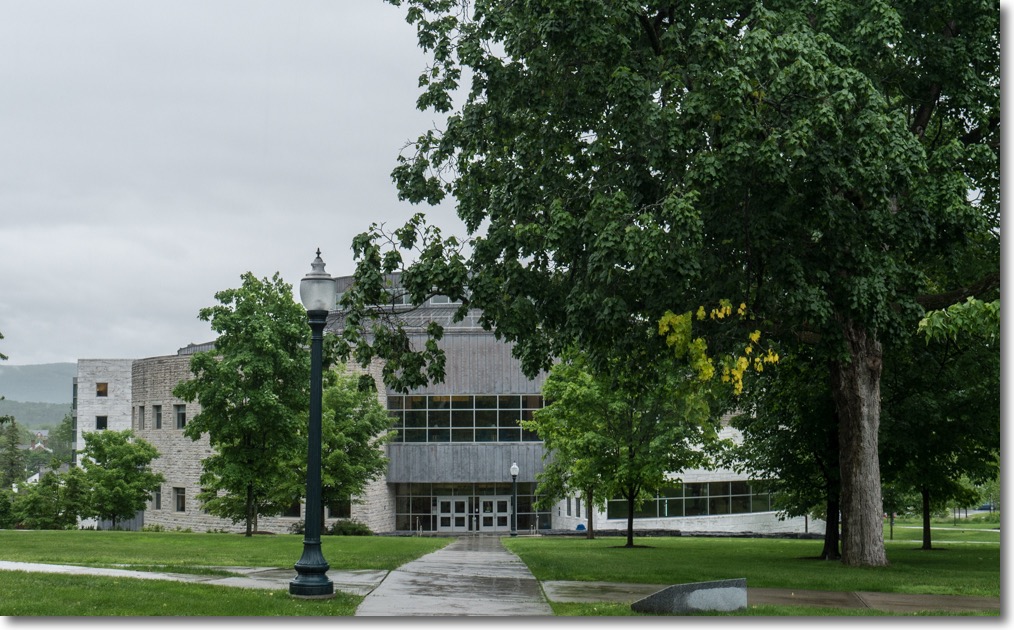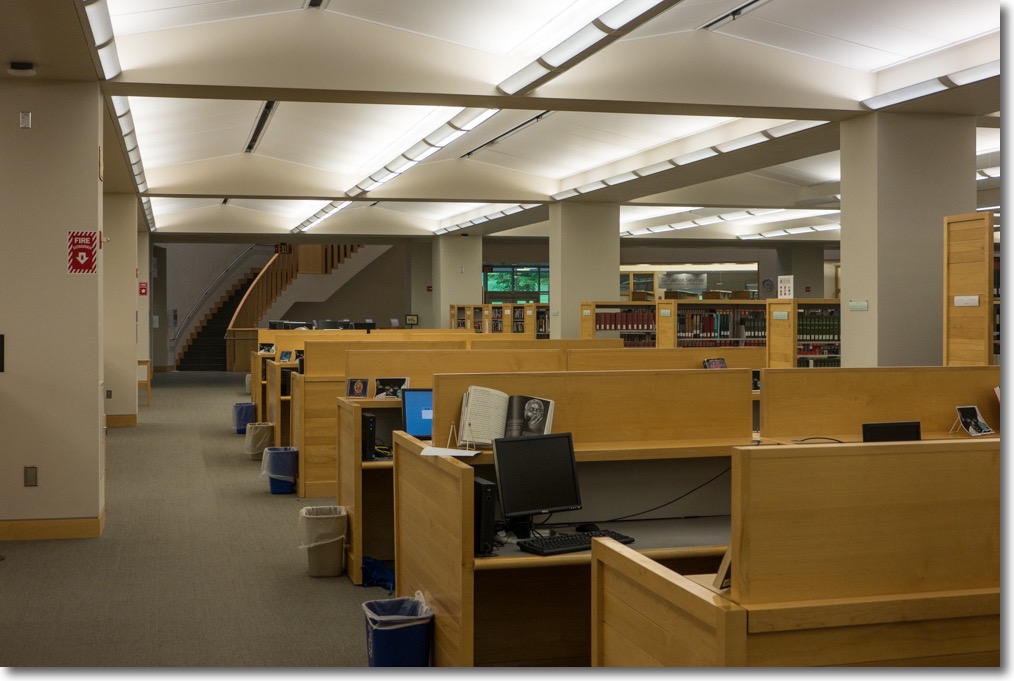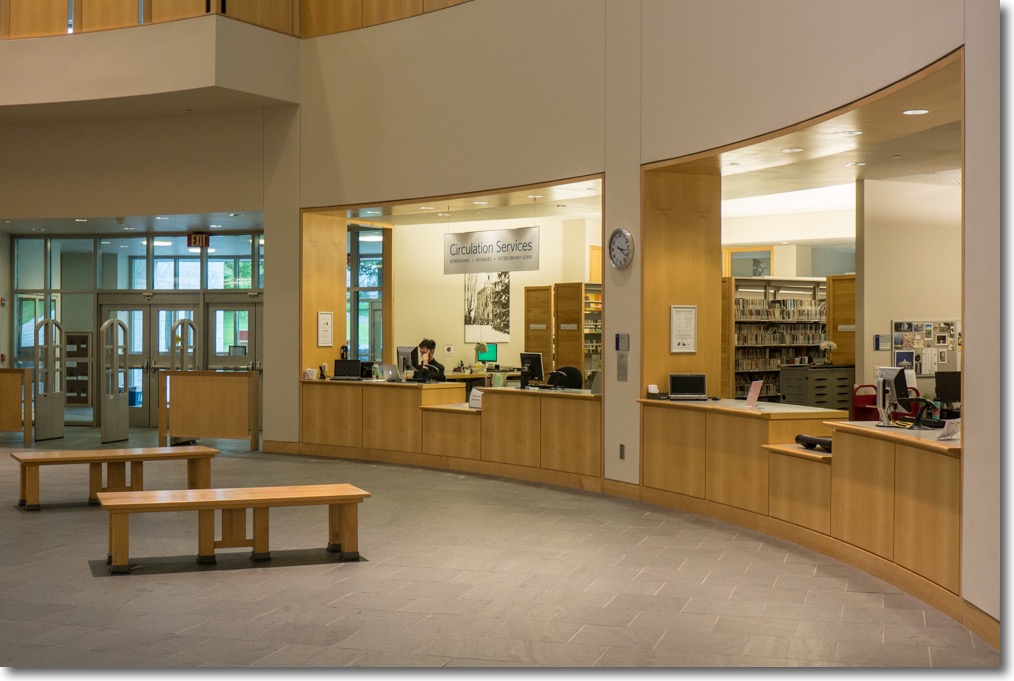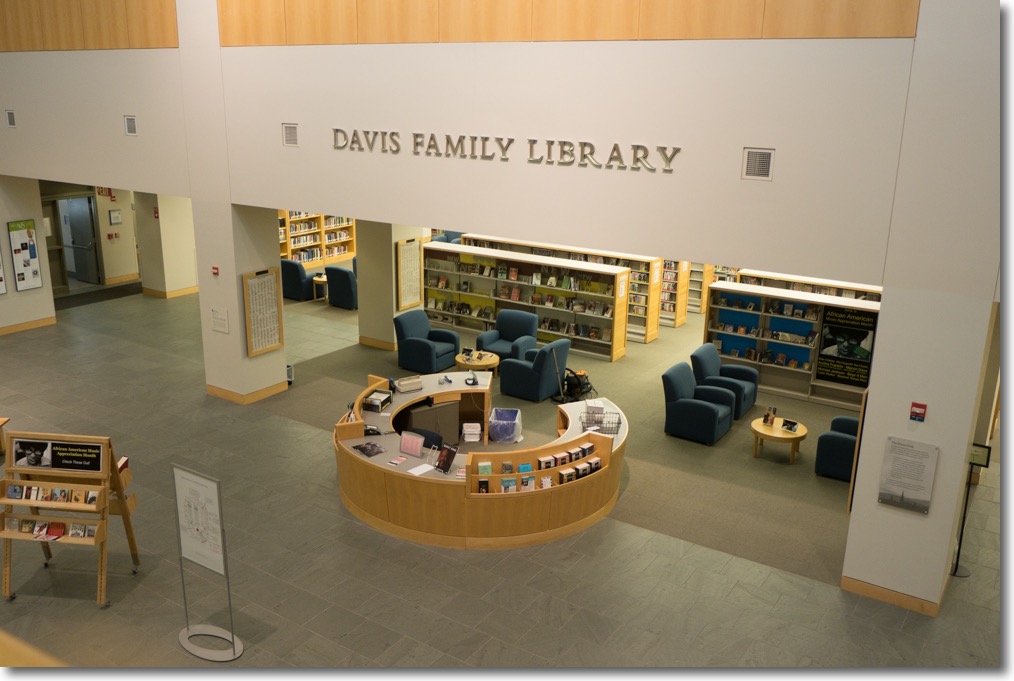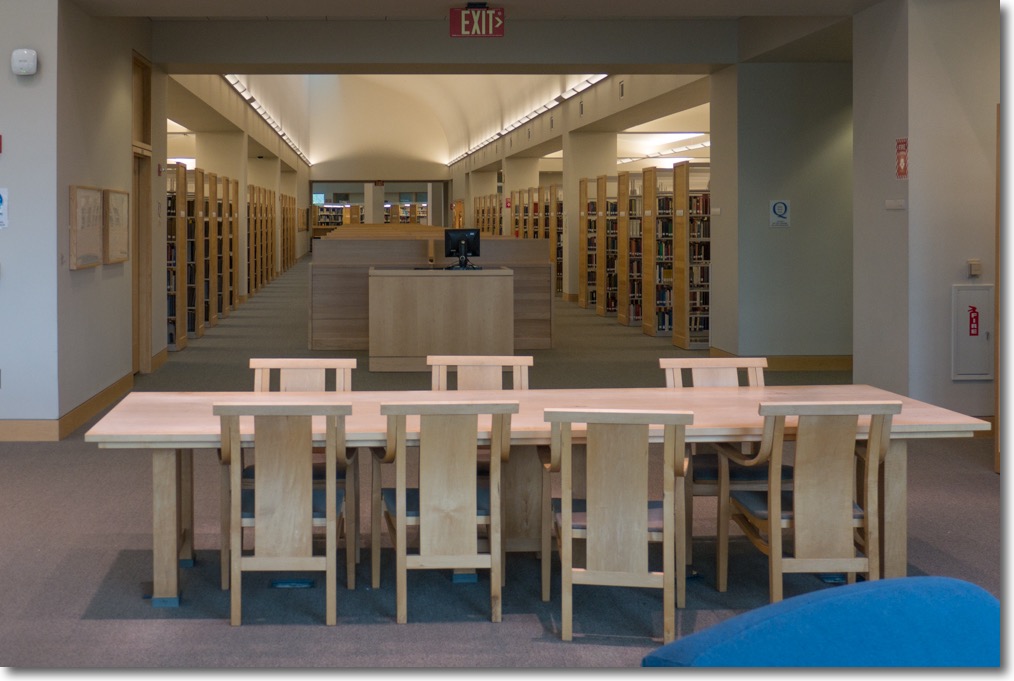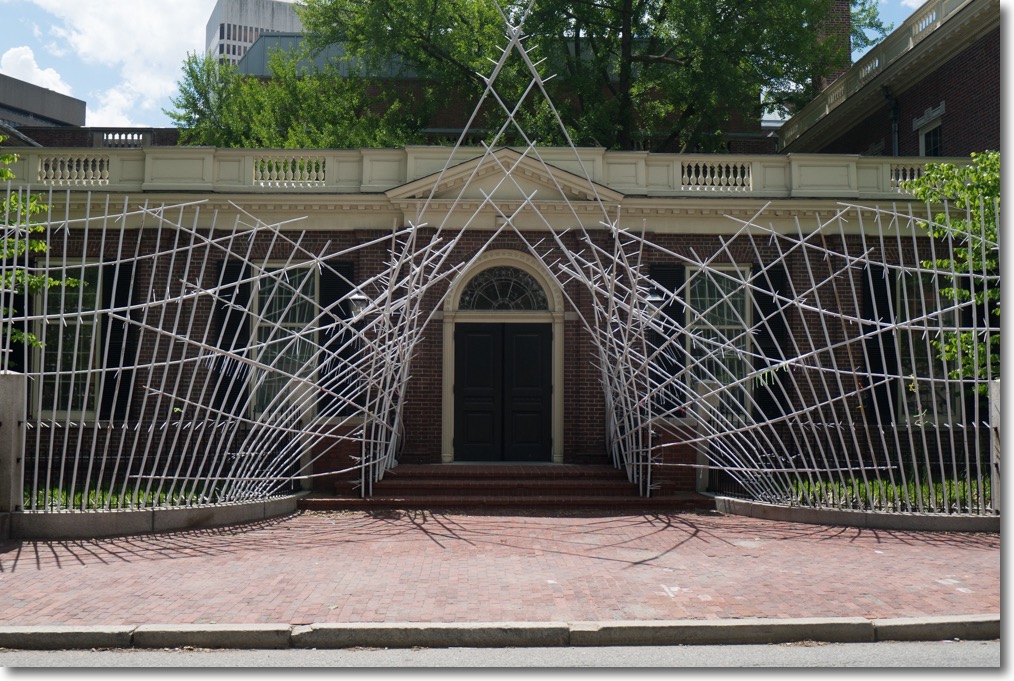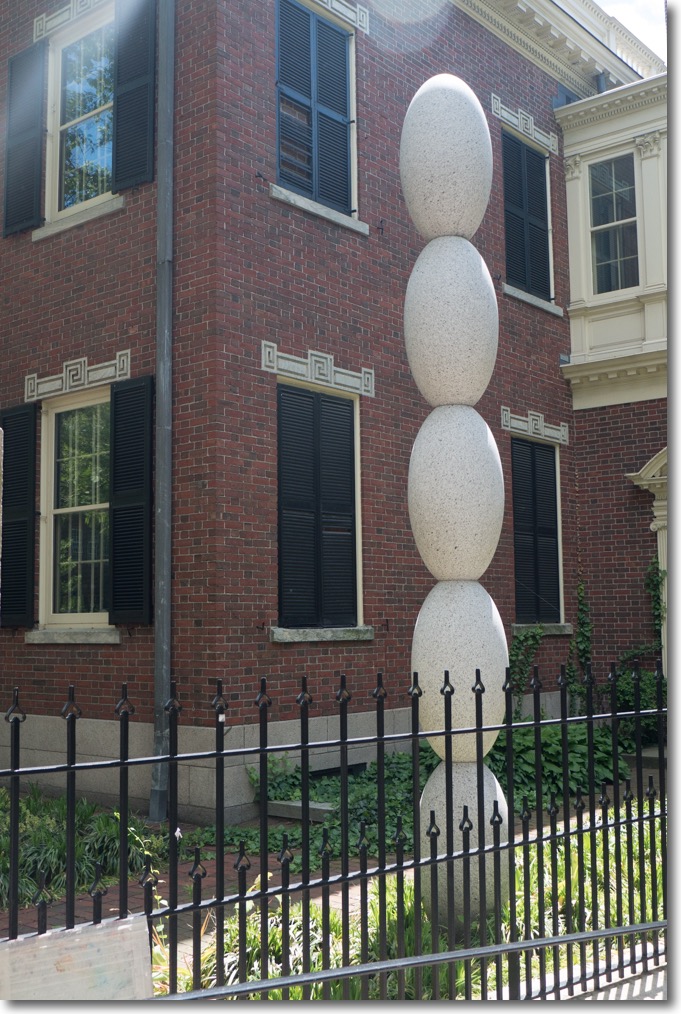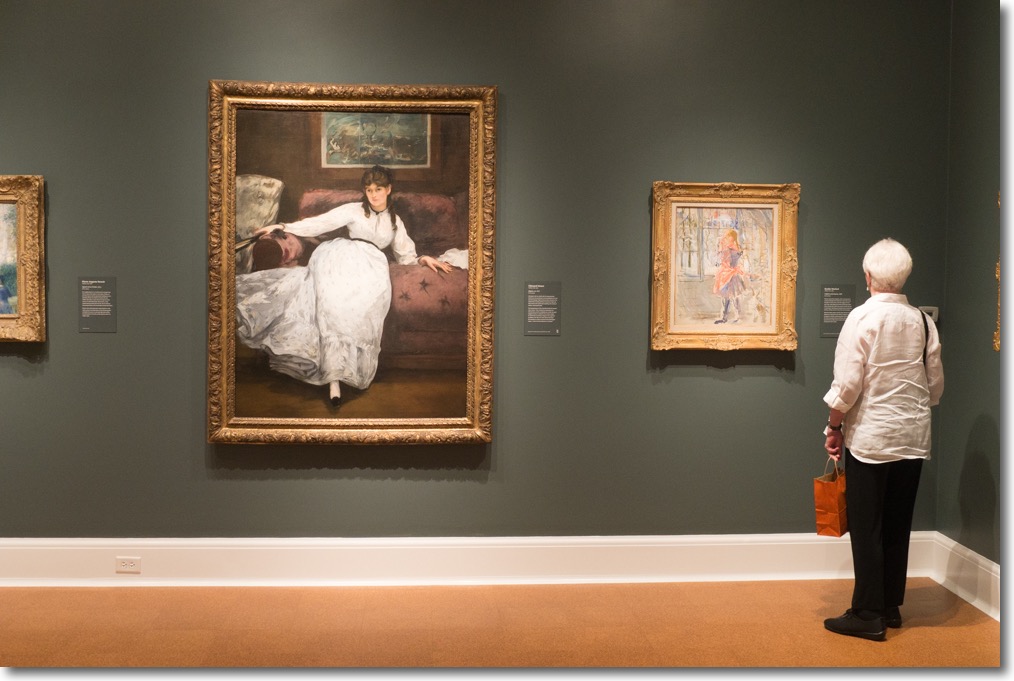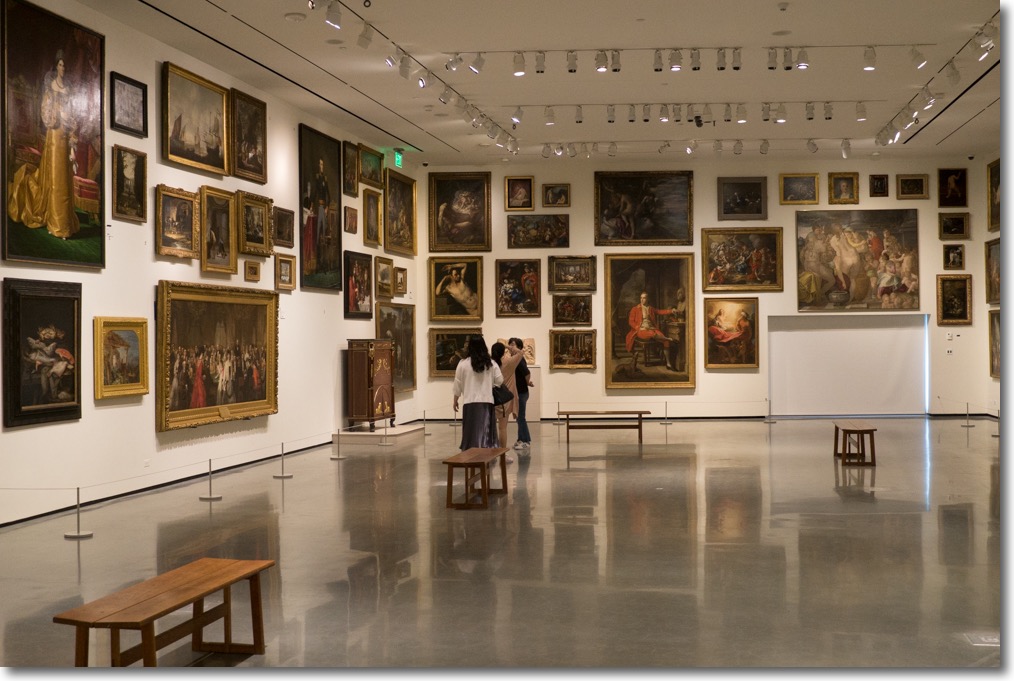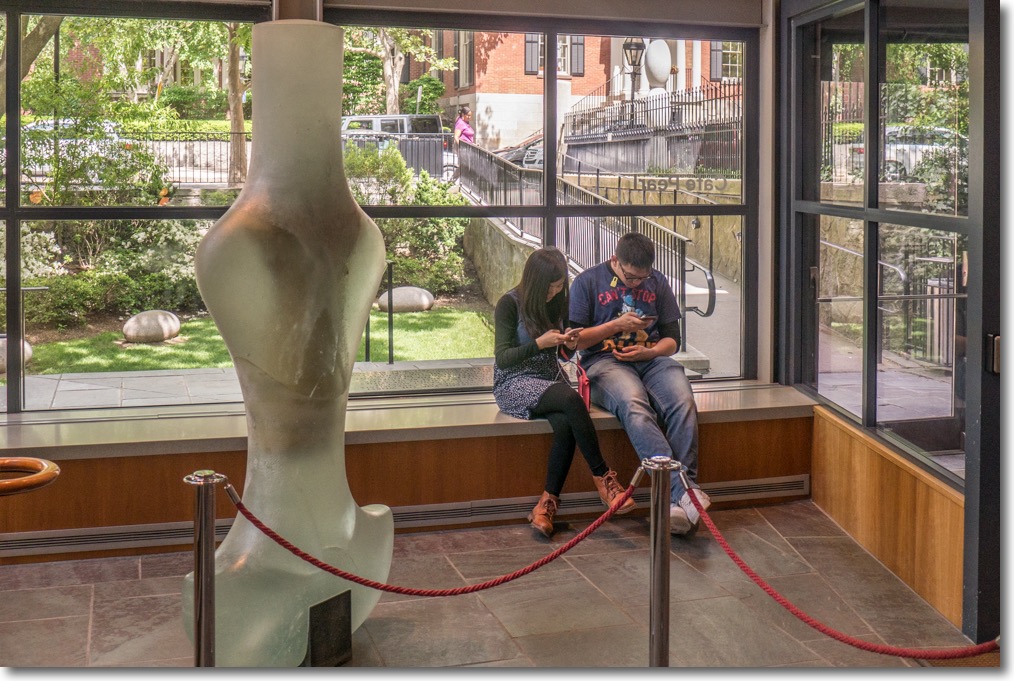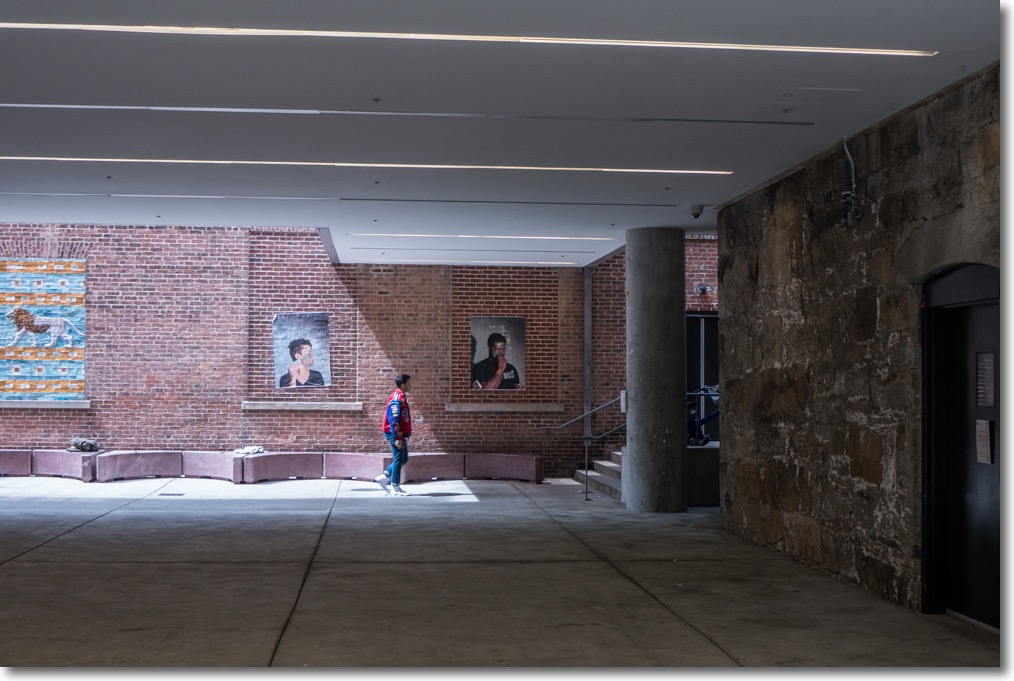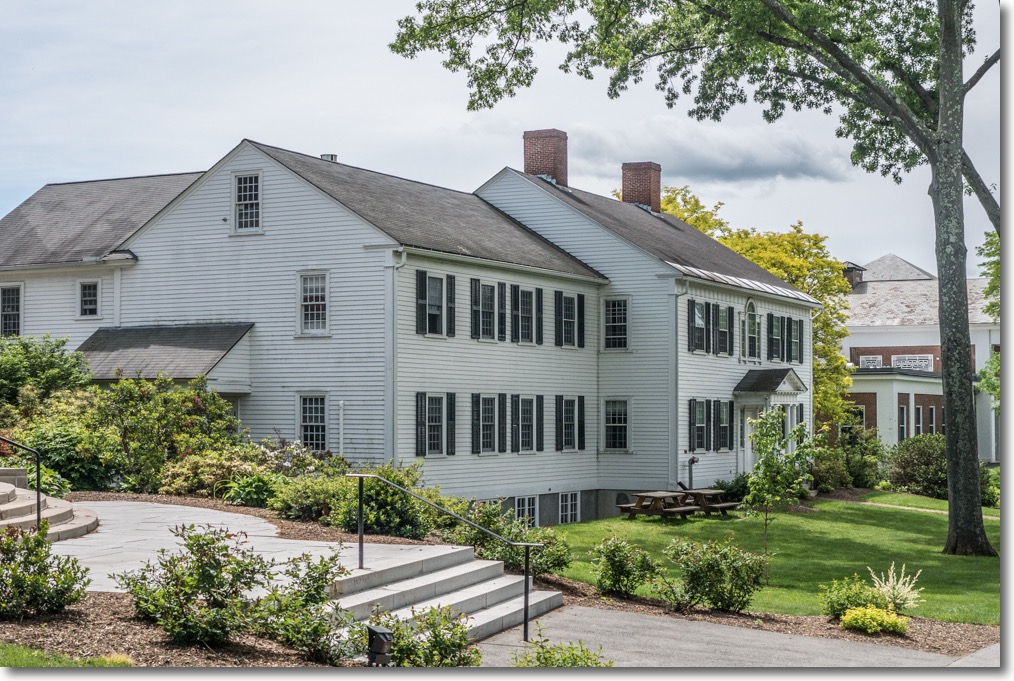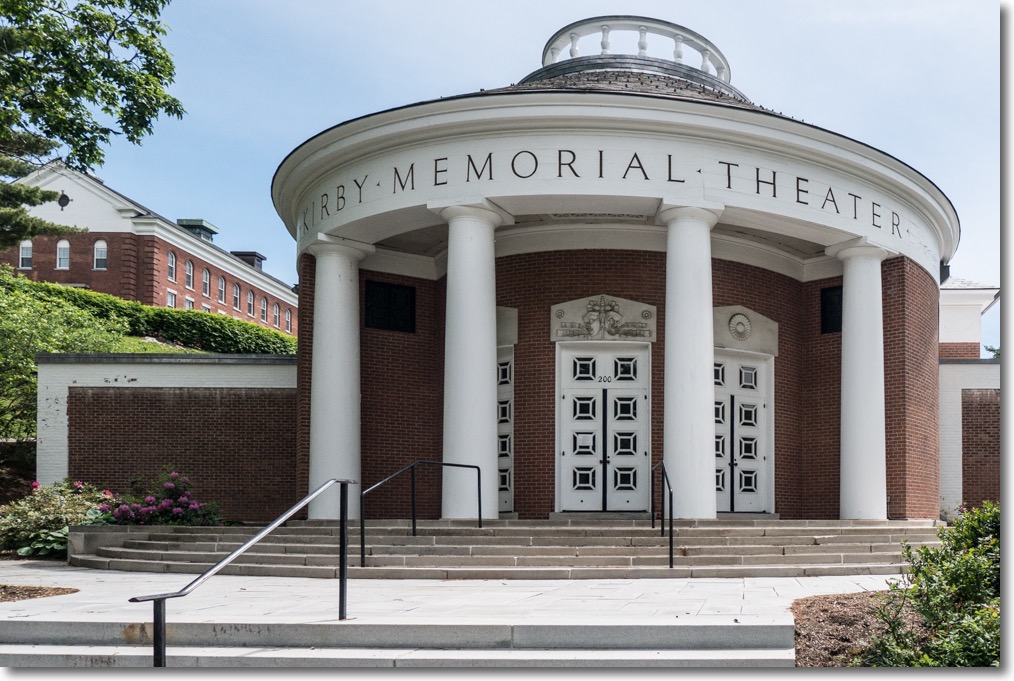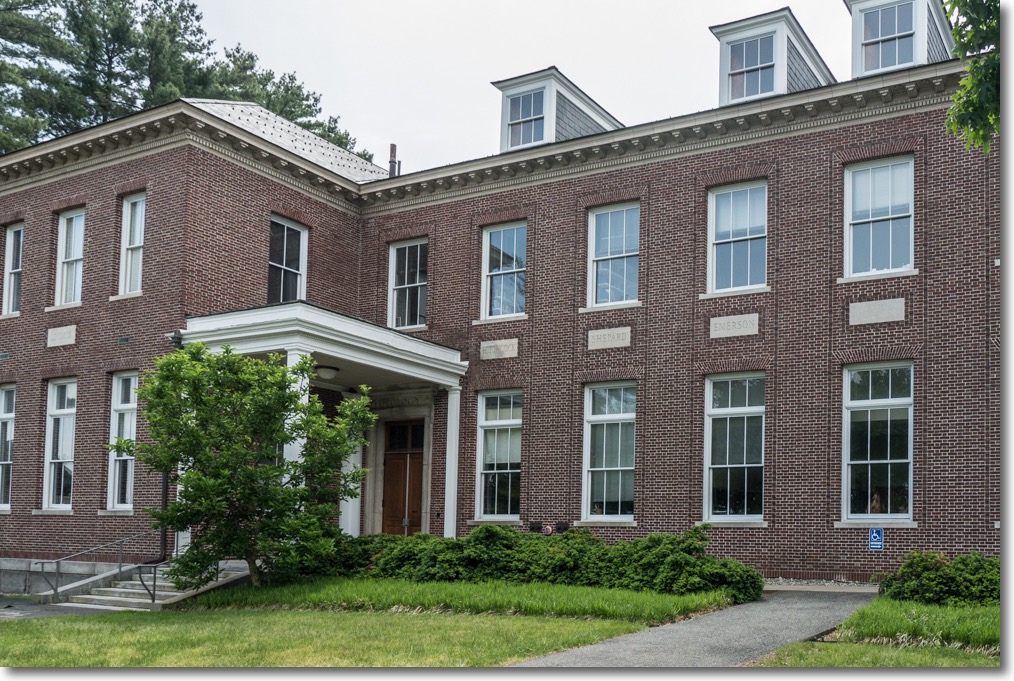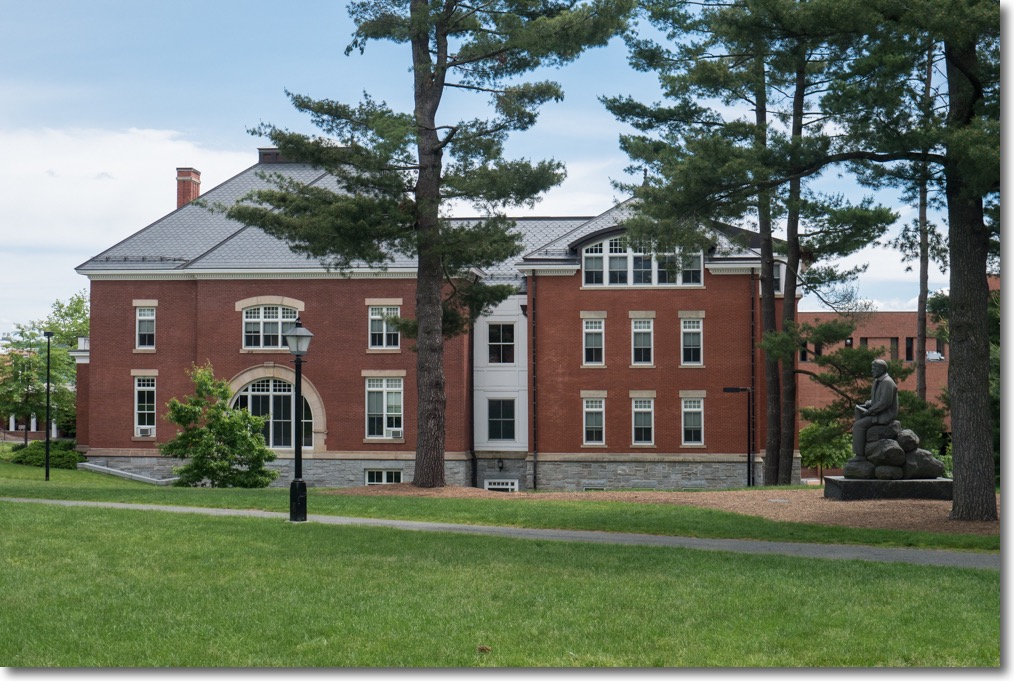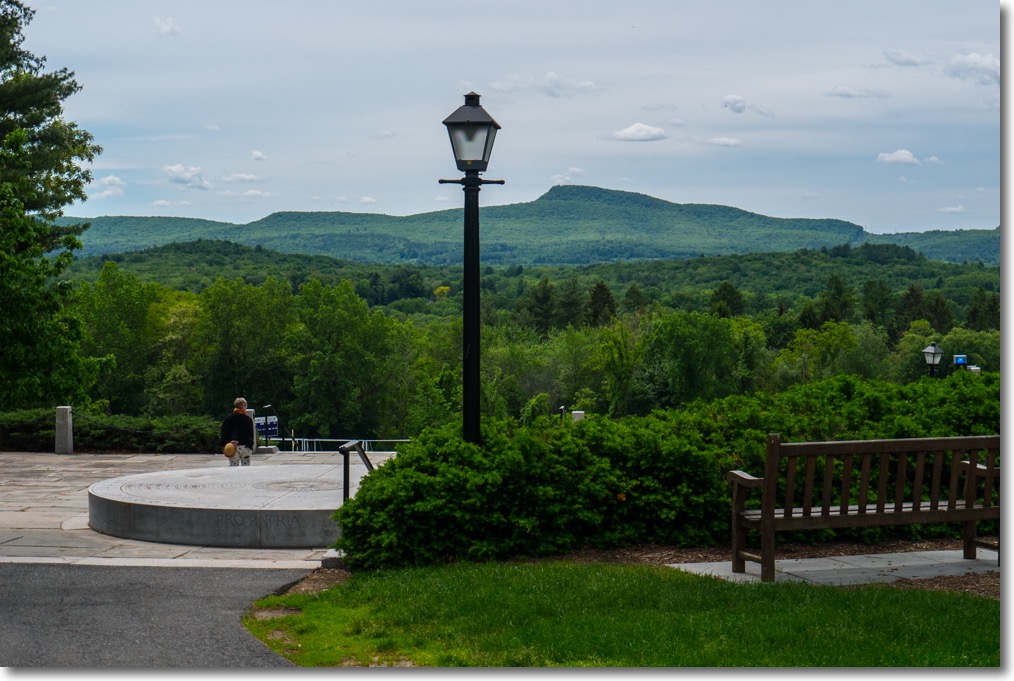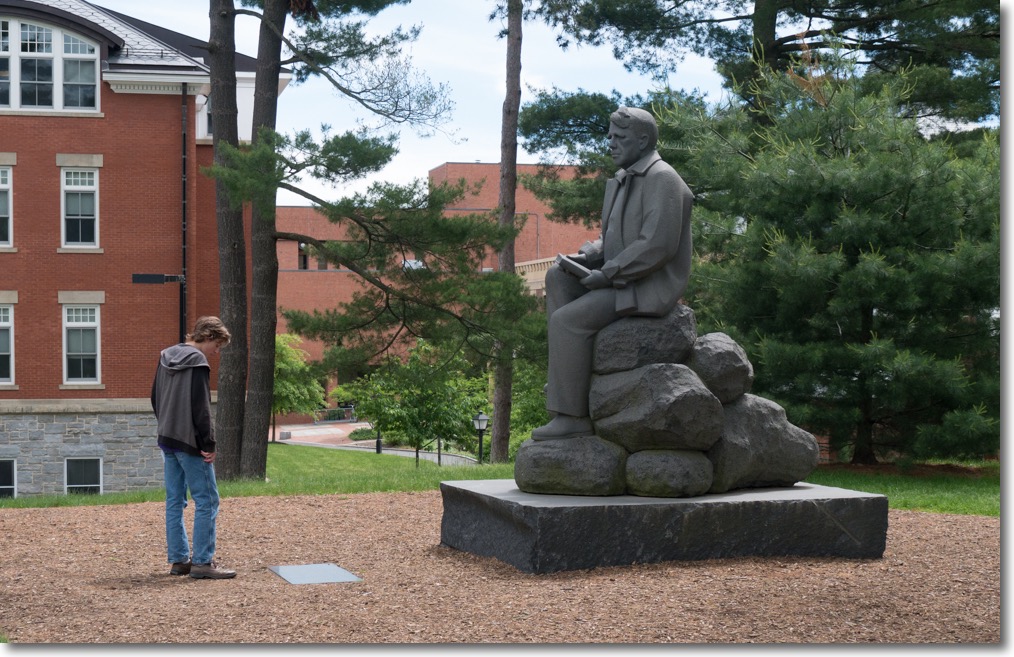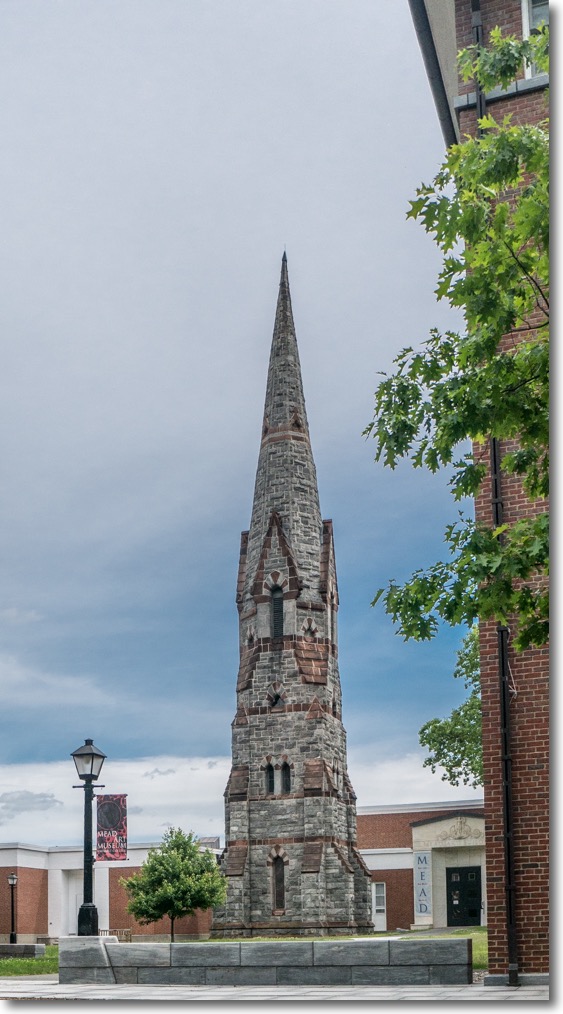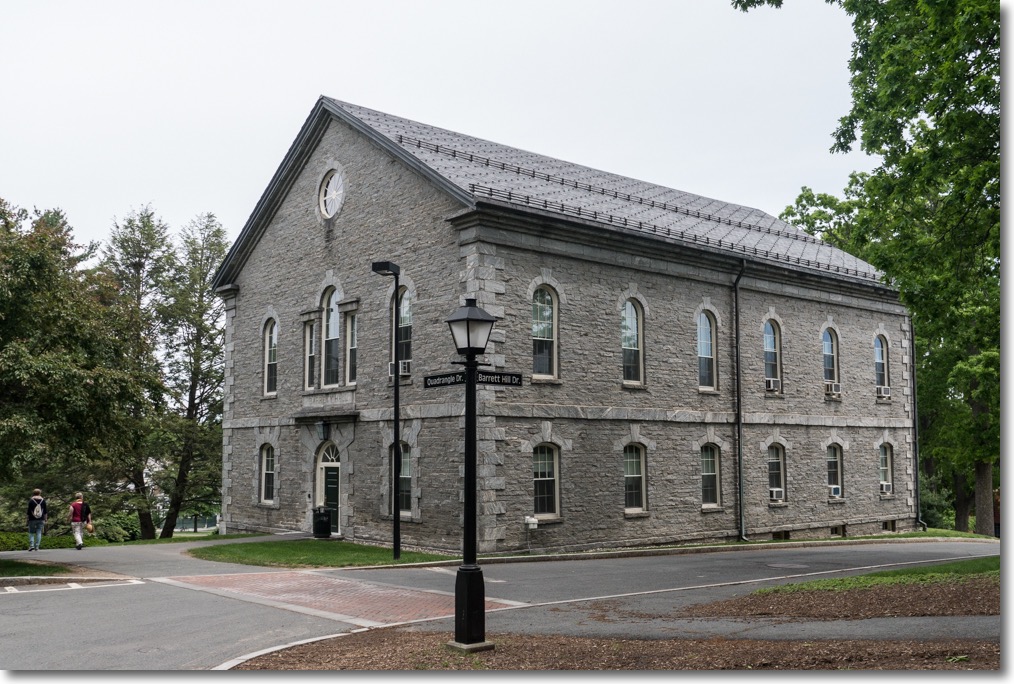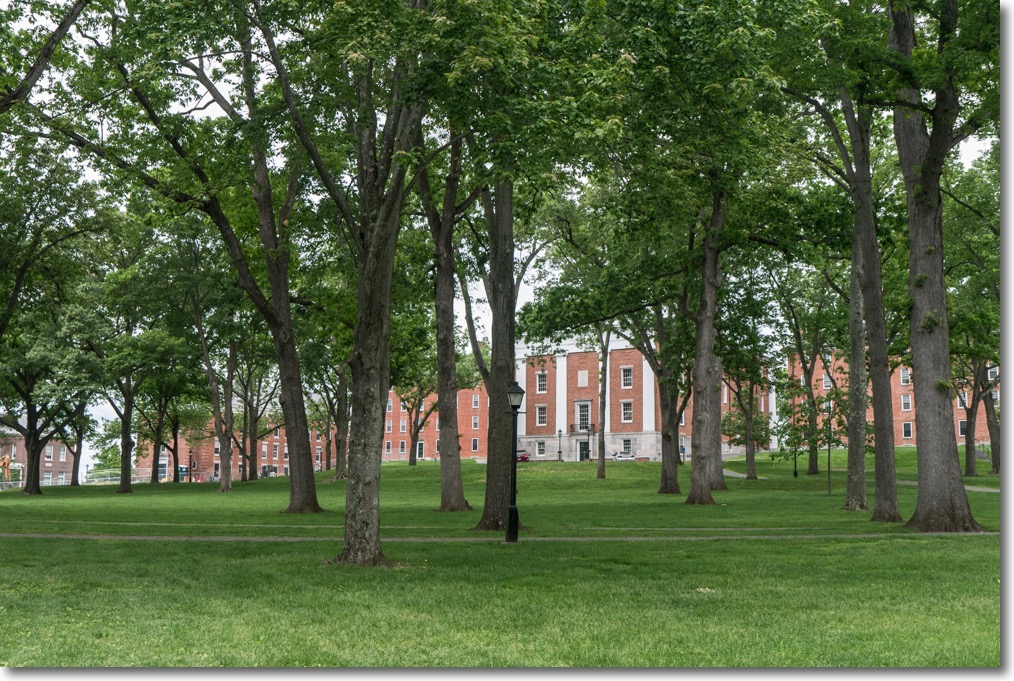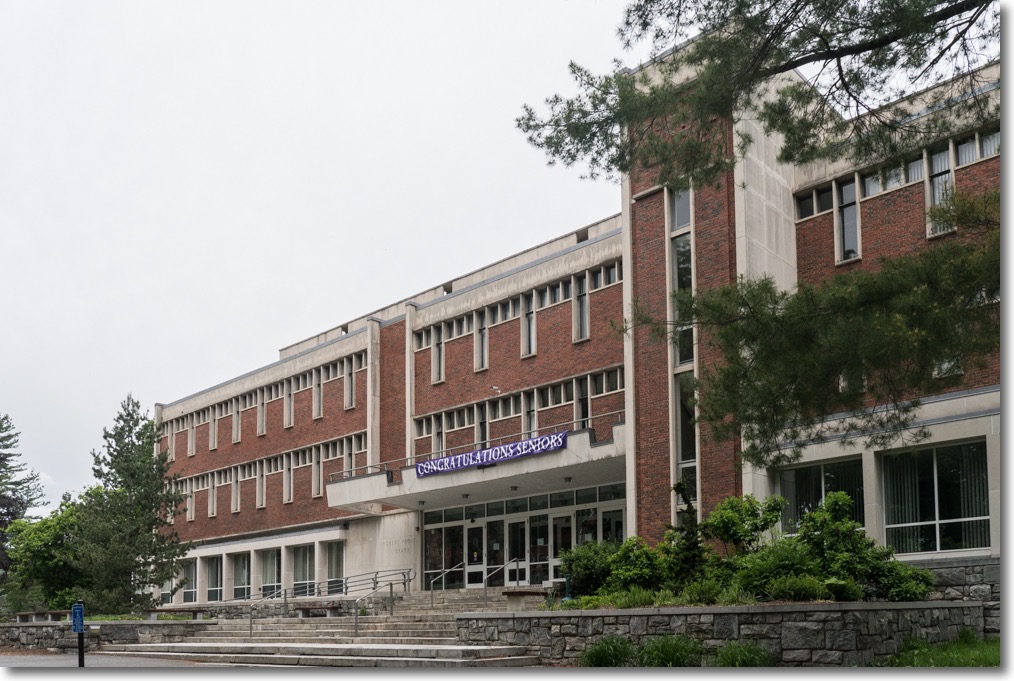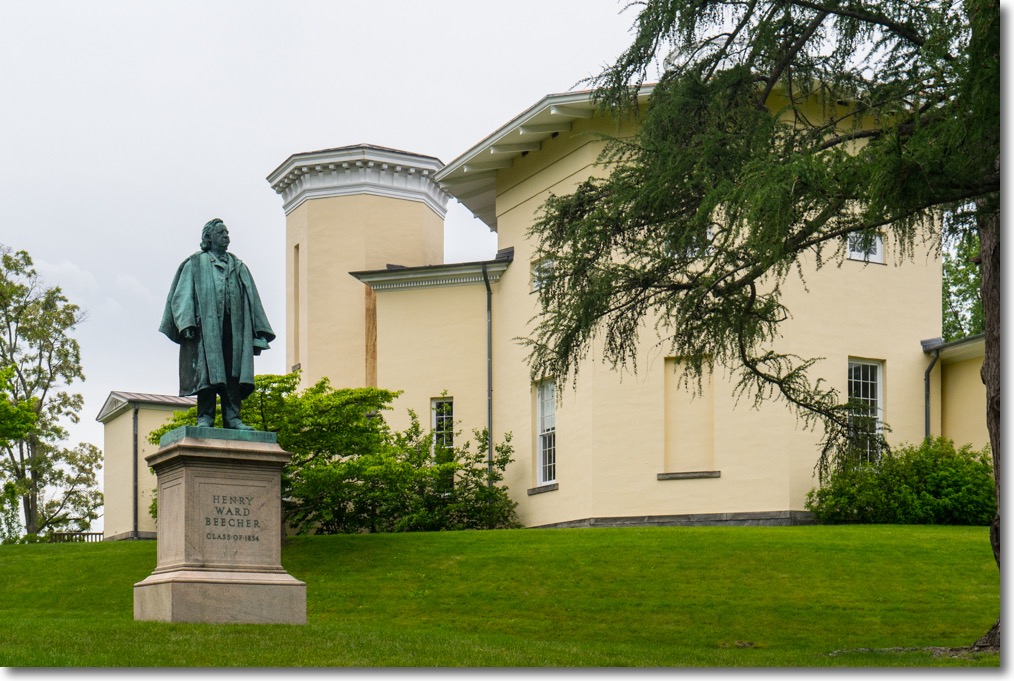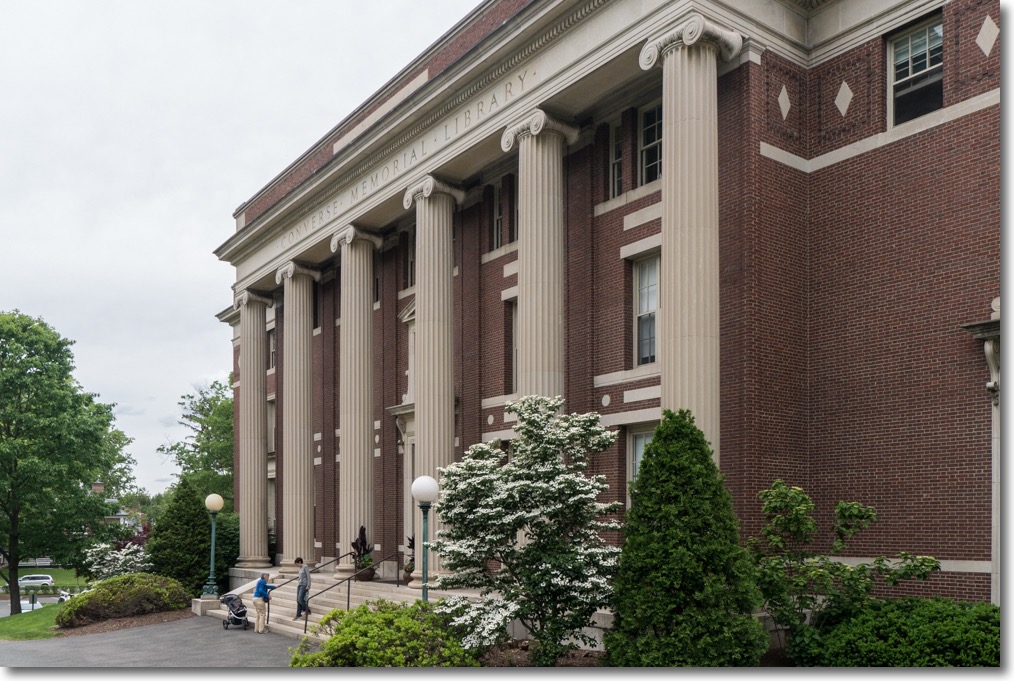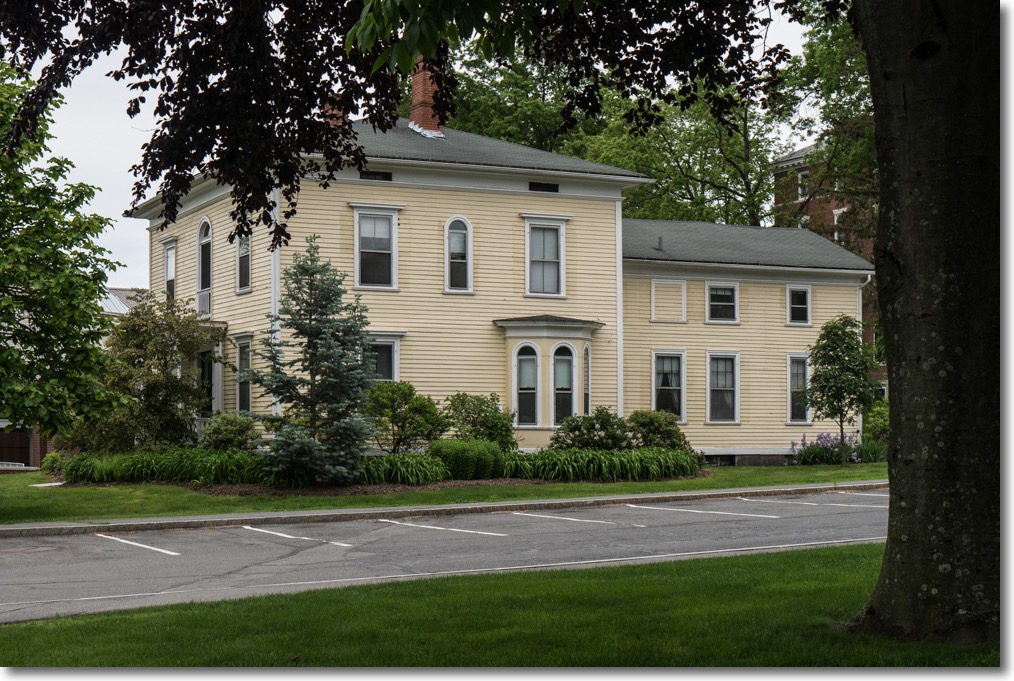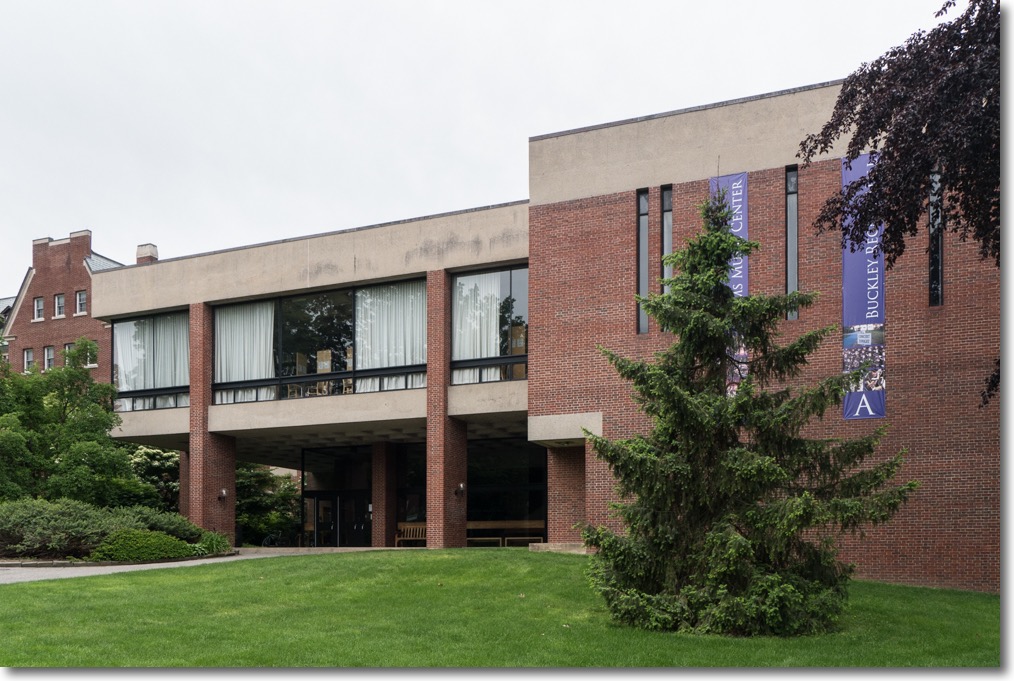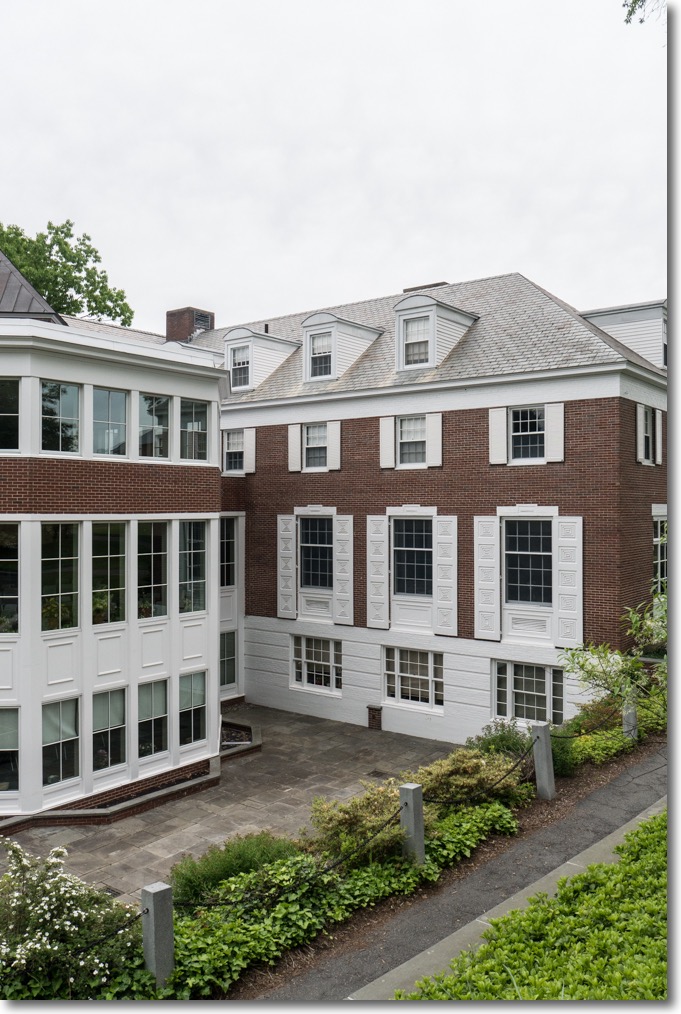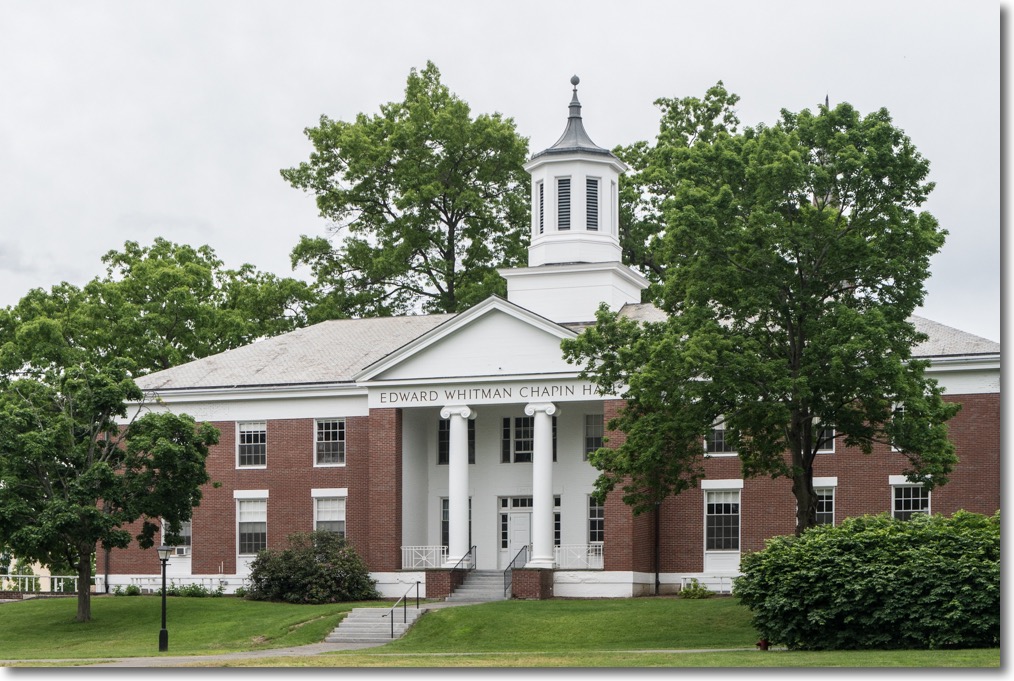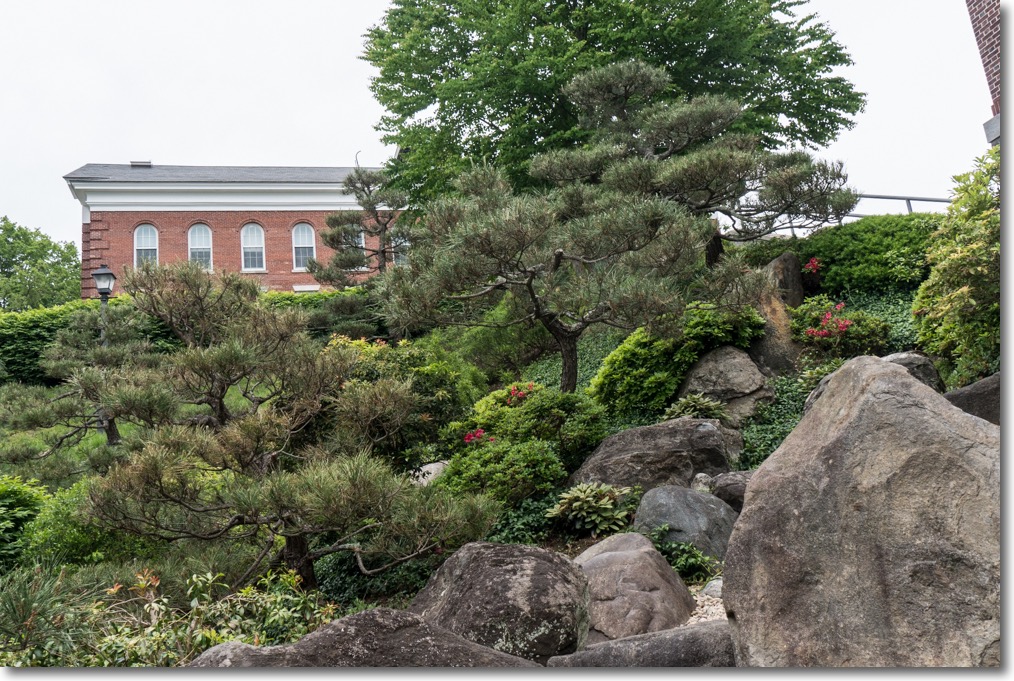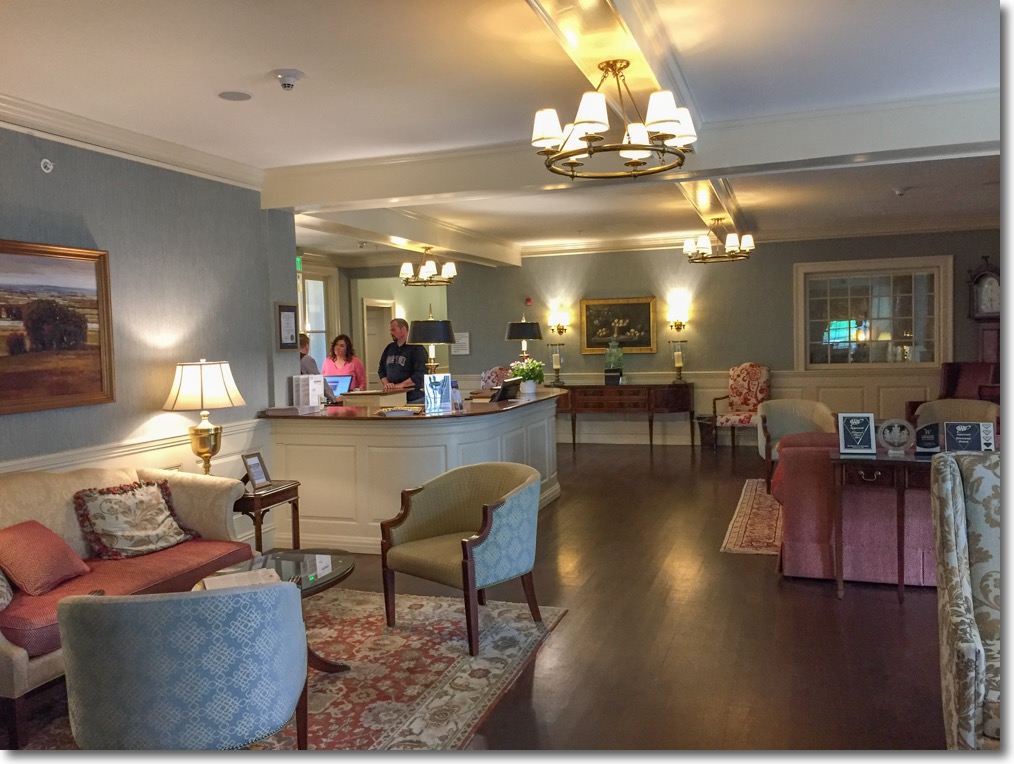Beauties and Beasts.
For an alphabetical index of the New England College series of pieces, click here.
My son came up with sub-title, for Cornell is one of those campuses which mixes classical architecture with Victorian horrors with modern wrecking-ball specials. Yet, if the campus is not all sweetness and light architecturally, our two days there were overwhelming and we came away bedazzled.
The campus is very large indeed with 14,300 undergraduates and 7,600 postgraduates, many of the latter there at the time of our visit. Given Cornell’s pre-eminence in hotel management studies it was only fitting that we stay at the Statler Hotel in the center of the 745 acres comprising the core and, befitting the school’s expertise, the experience was perfect. Our visit coincided with the annual alumni reunion, this year for graduation years ending in 2 or 7 and we had the great joy of speaking with many alumni of the class of 1952. One elderly lady confirmed this was her year and when I stated I was born in 1951 she riposted with “I was born in 1930”. Just so special.
Cornell, along with MIT, is one of the very few private land grant universities, the beneficiaries of 1862 legislation which permits them to sell land to fund operation and expansion. Most such schools are large public schools. Cornell dates from 1865 and its goal is to be “…. an institution where any person can find instruction in any study” in the words of founder Ezra Cornell. However it came to be, this school is of such breadth and the campus so large that it is hard to convey its scale, which likely explains the large number of images below. While we did a great deal of walking, I doubt we managed to see more than one third of this glorious campus on our two day visit.
Be warned, there is some awful architecture on display, with the Bill and Melinda Gates Hall computer science building easily the worst (Sorry, Bill!). But all can be forgiven when you look at the breadth of academic choice here and the quality of faculty and the number of prominent alumni. This really is the best of the best.
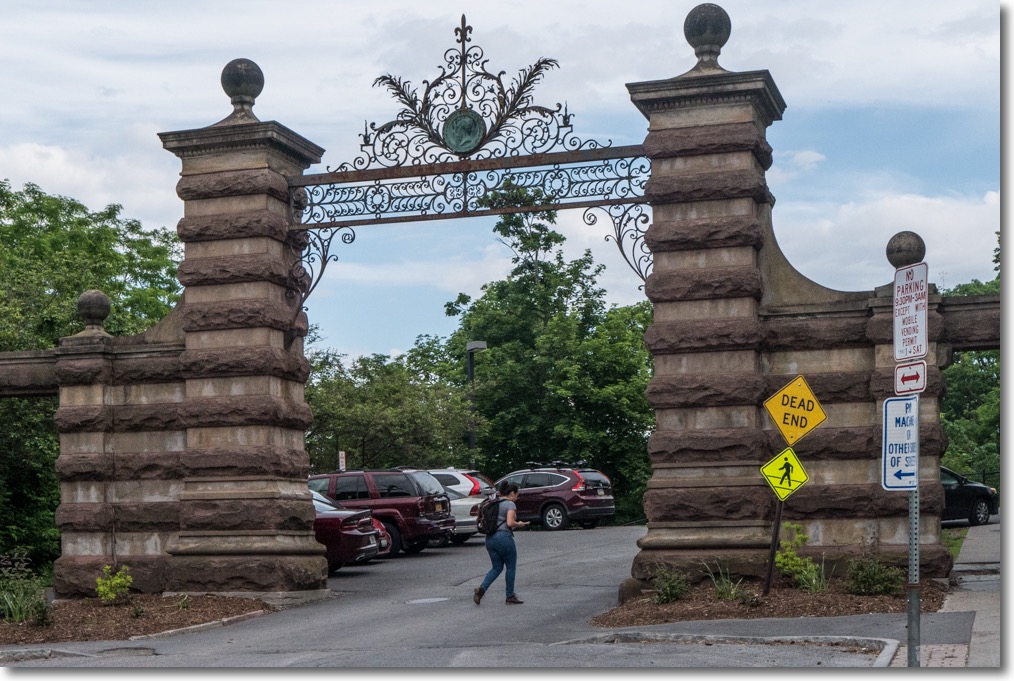
Cornell University.
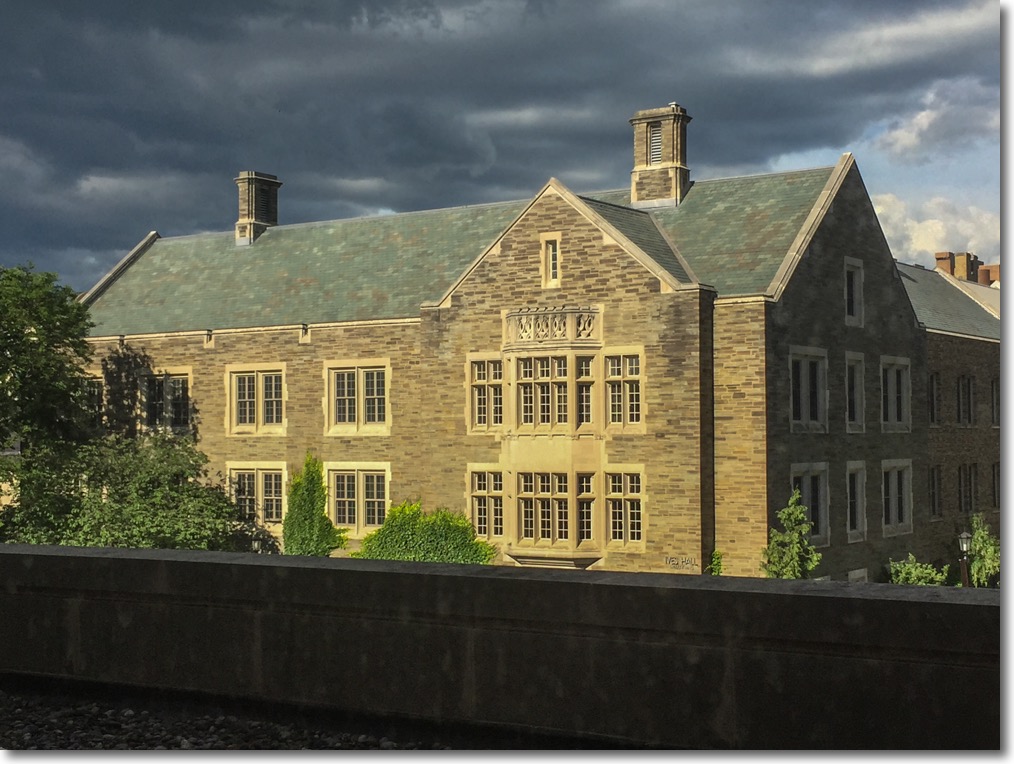
The view from our hotel room at the Statler. This is Ives Hall.
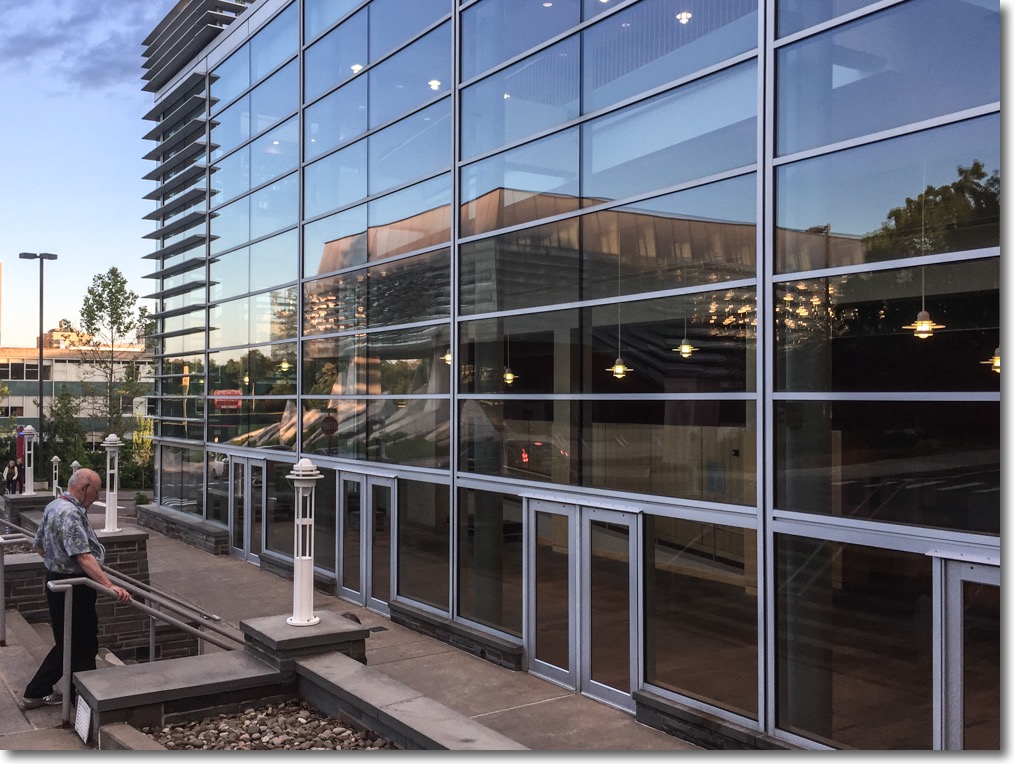
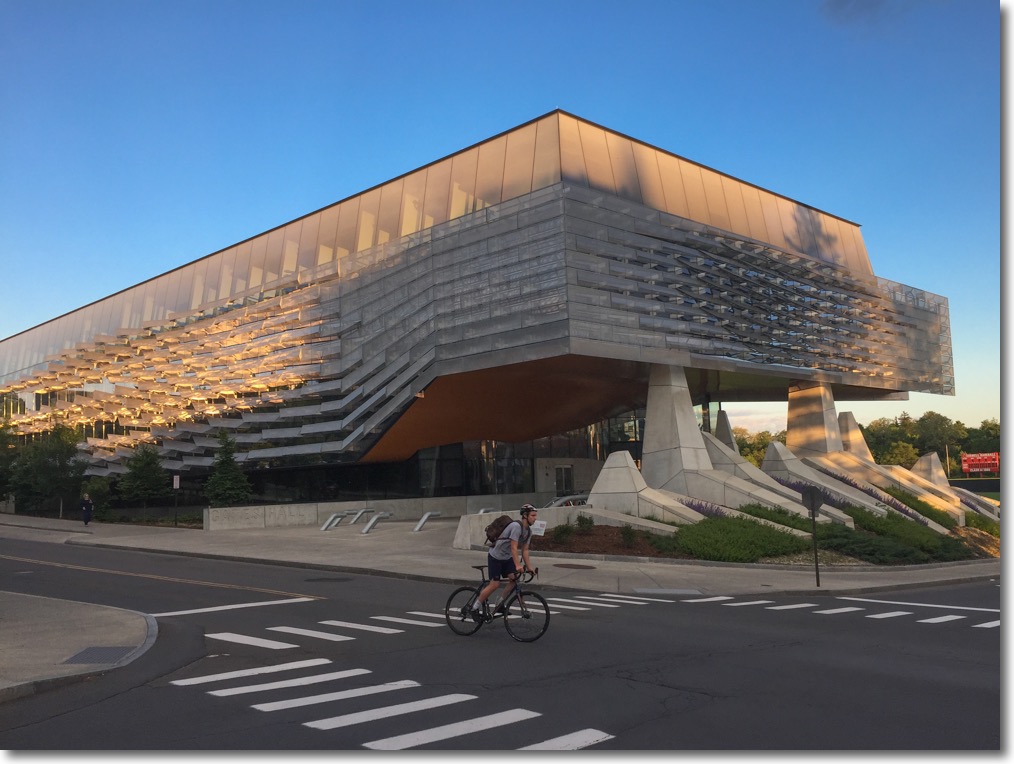
The Bill and Melinda Gates Computer Science building. What were they thinking of?
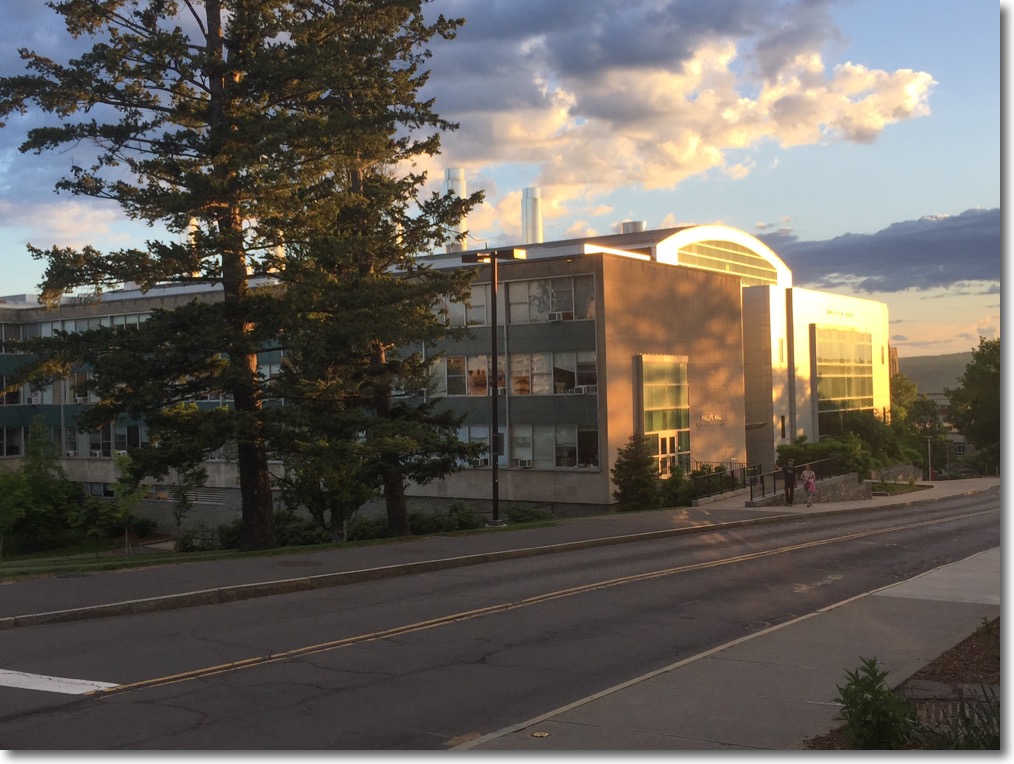
By contrast, this works well.
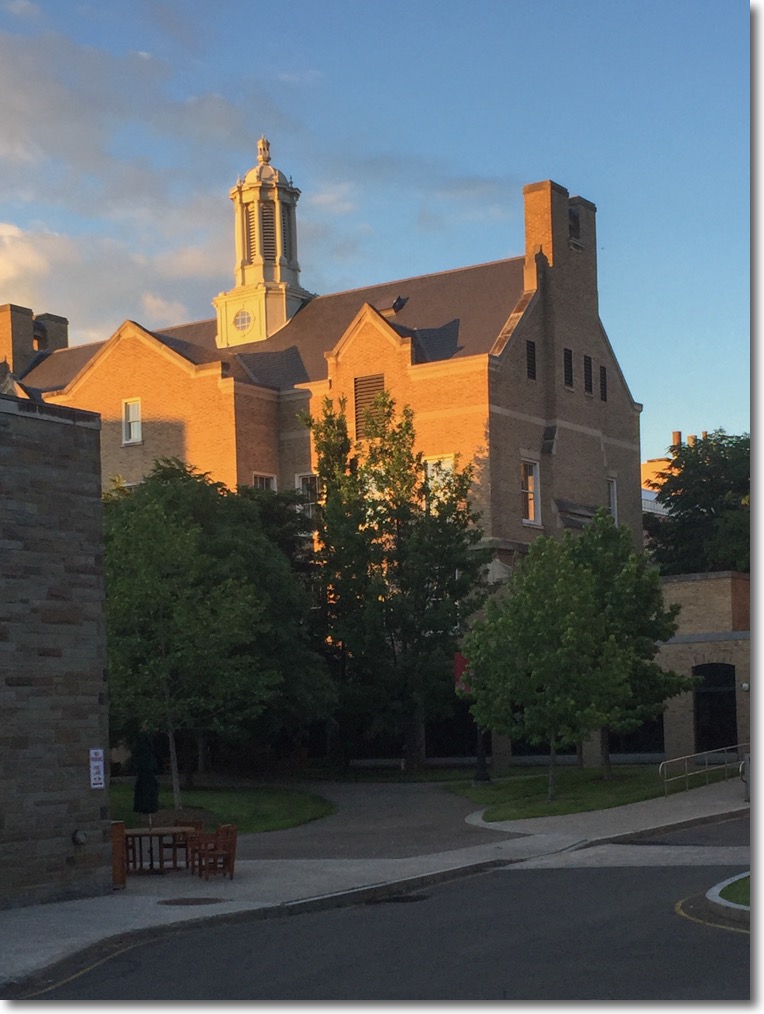
As does this.
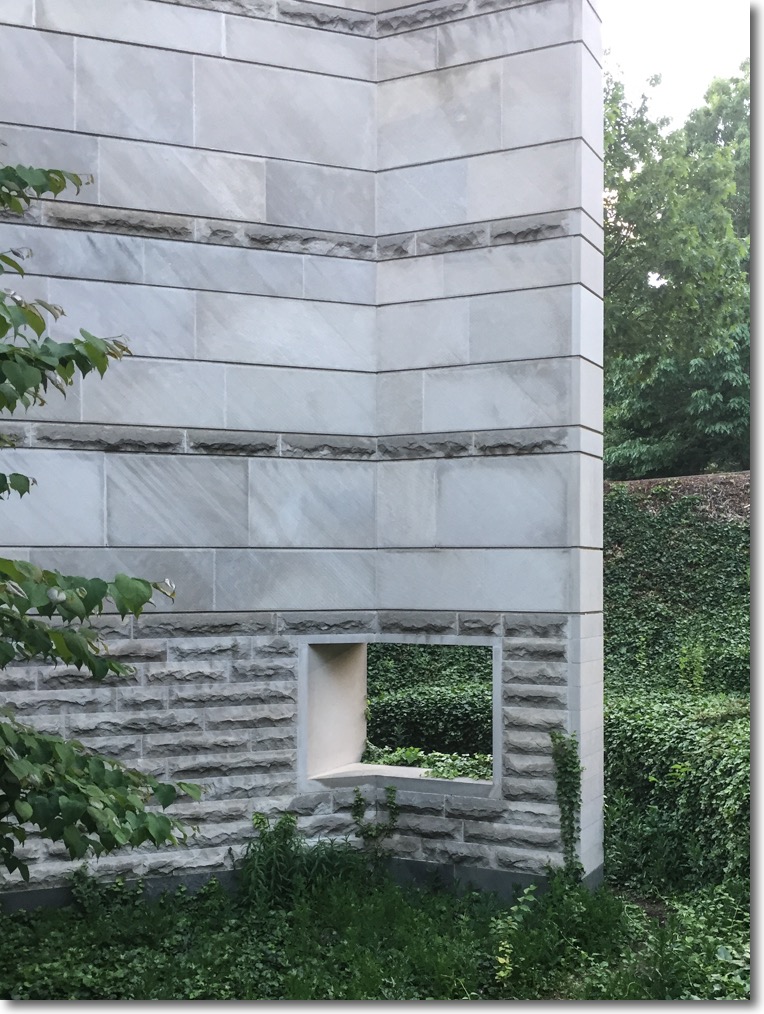
Not even this bit of whimsy can save this one.
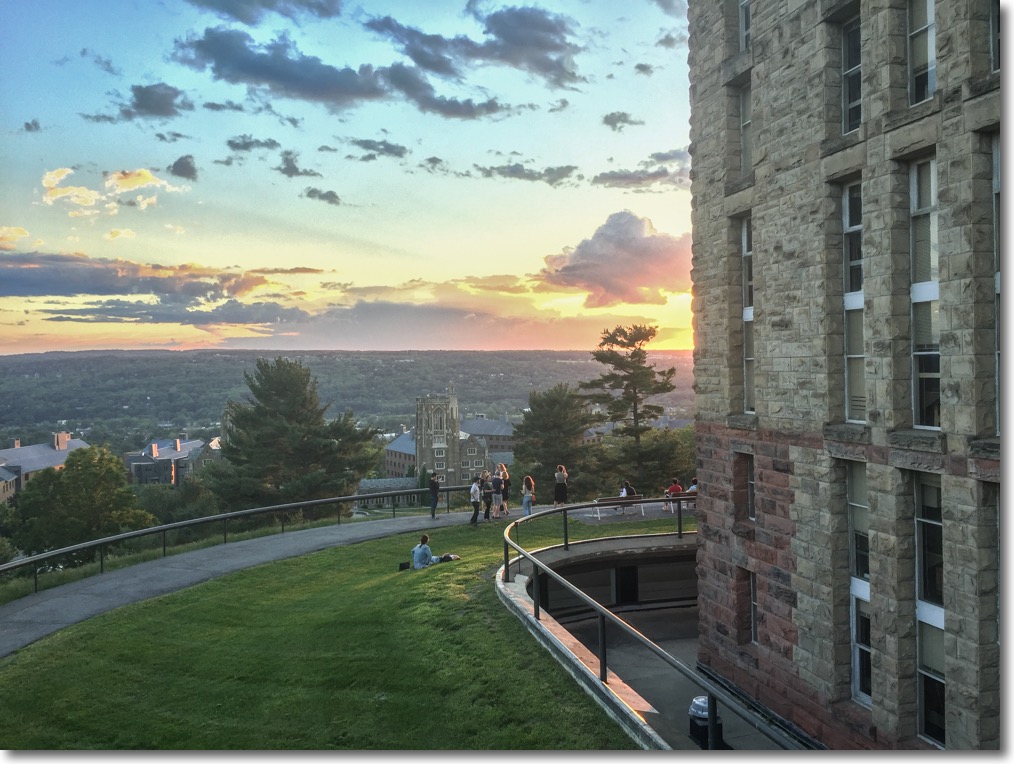
Ithaca at sunset from the McGraw Tower.
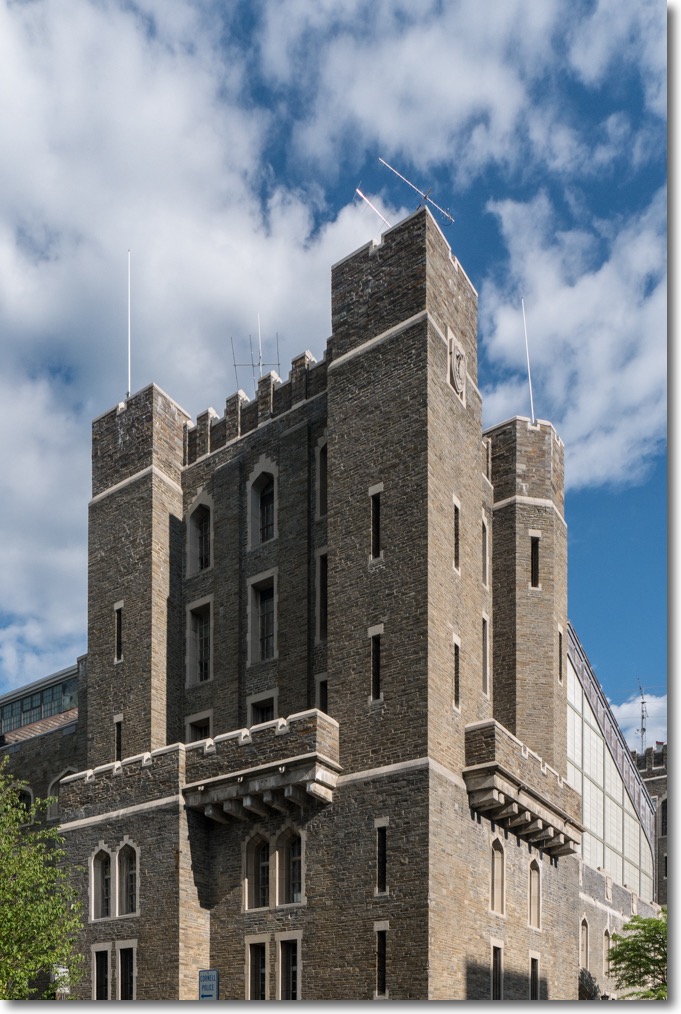
Barton Hall, now the HQ for campus police, formerly a military research center in WW2.
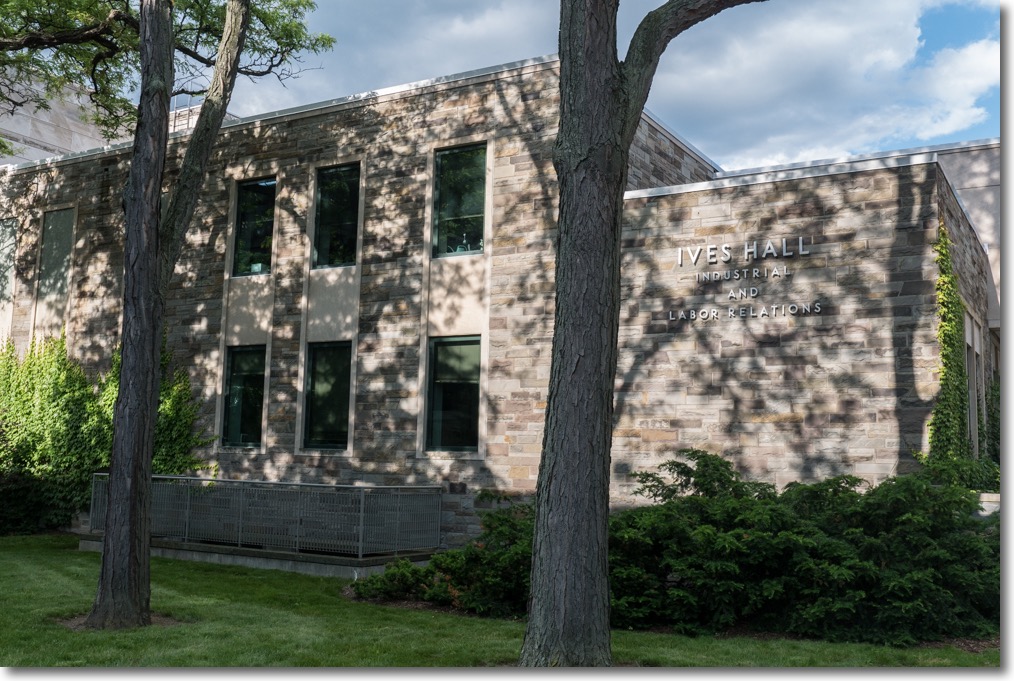
Ives Hall, office of the Registrar.
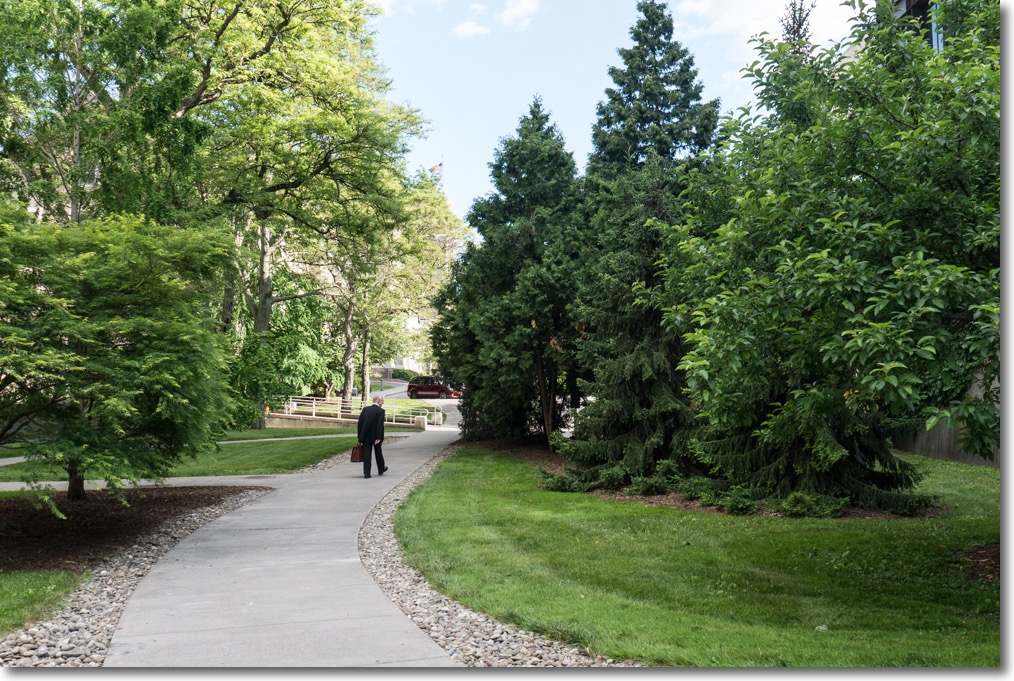
The large campus offers many beautiful spots like this.
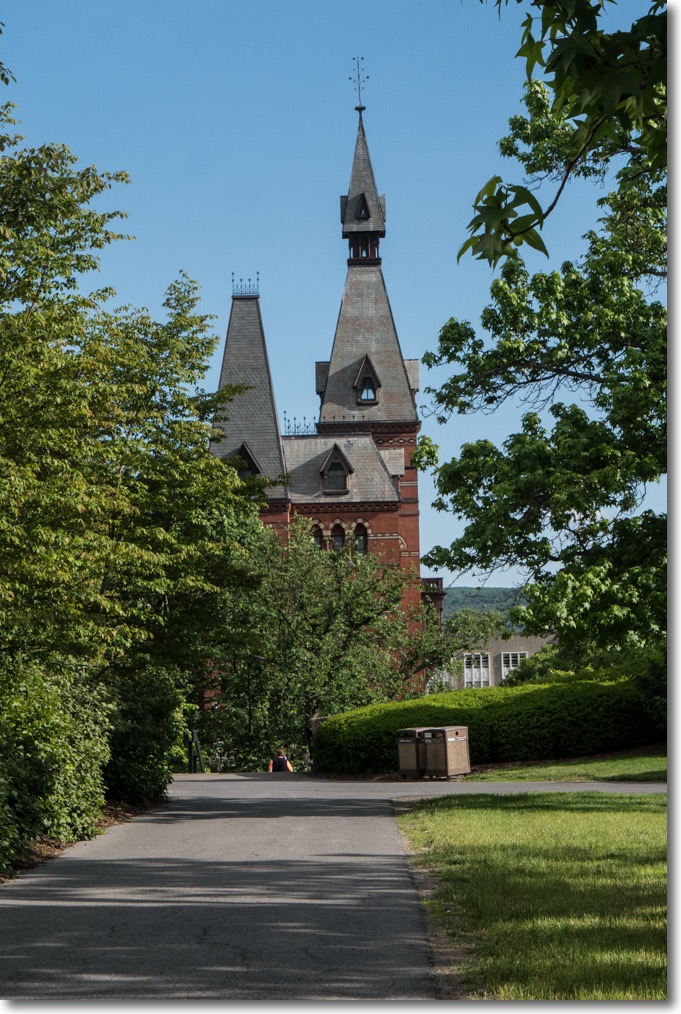
Proof that Victorian architecture can be every bit as bad as its modern counterpart. This is Sage Hall which dates from 1875 and houses the Graduate School of Management. Maybe HBS would be a better alternative?
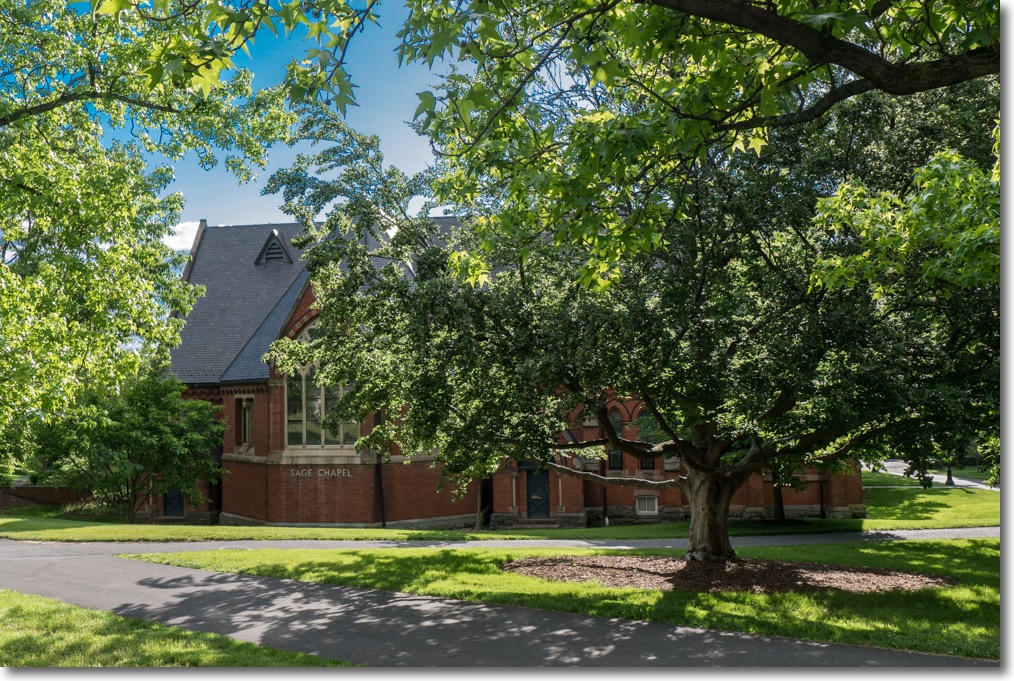
Just gorgeous.
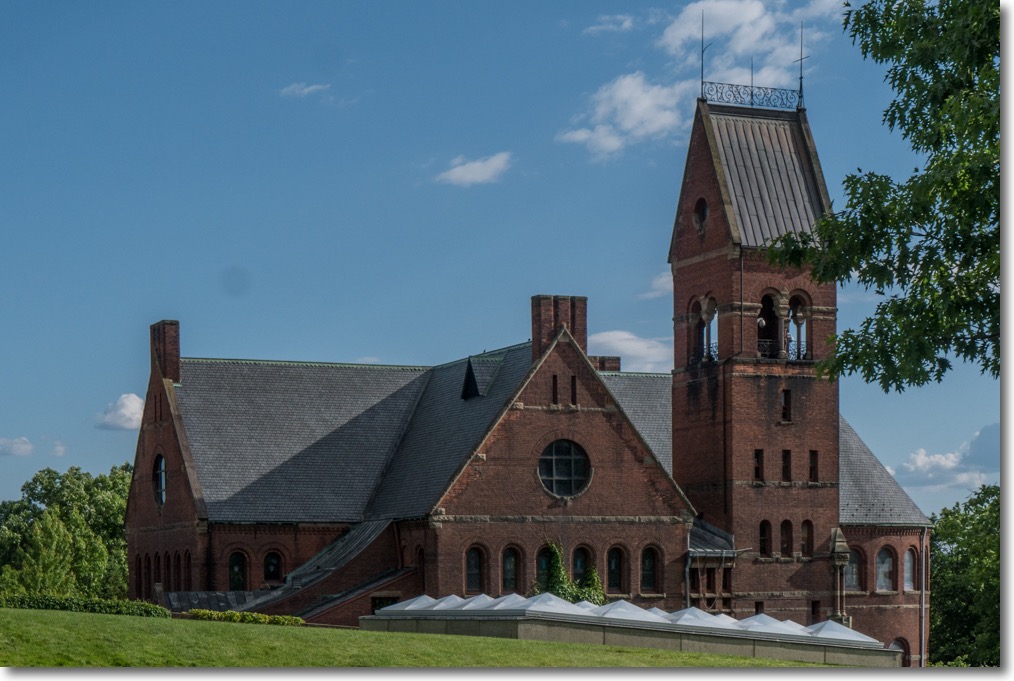
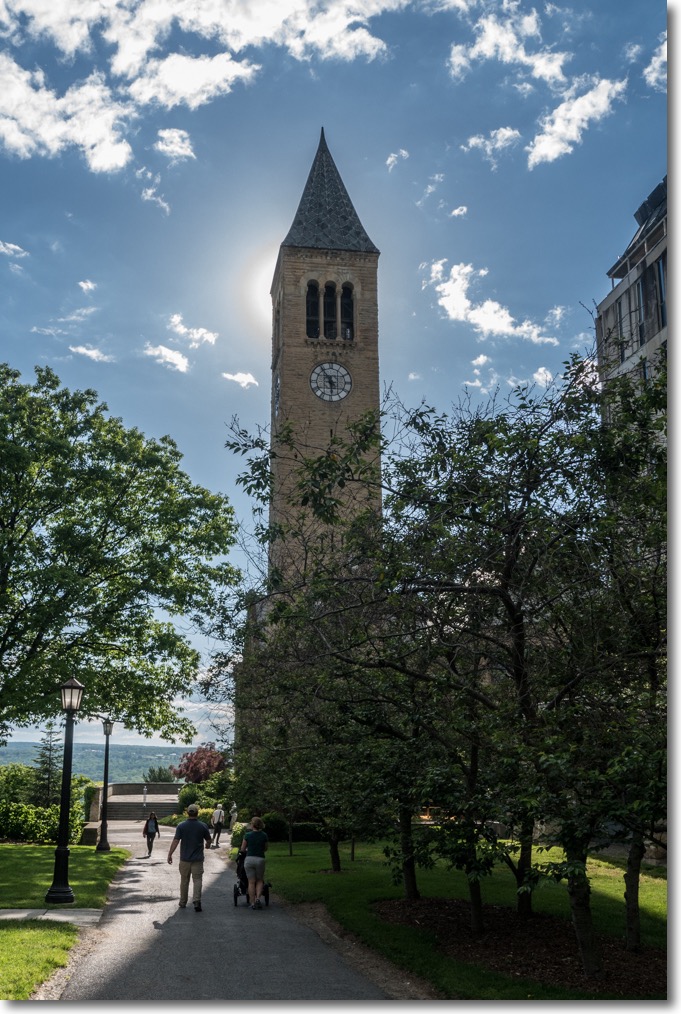
The McGraw Tower at sunset.
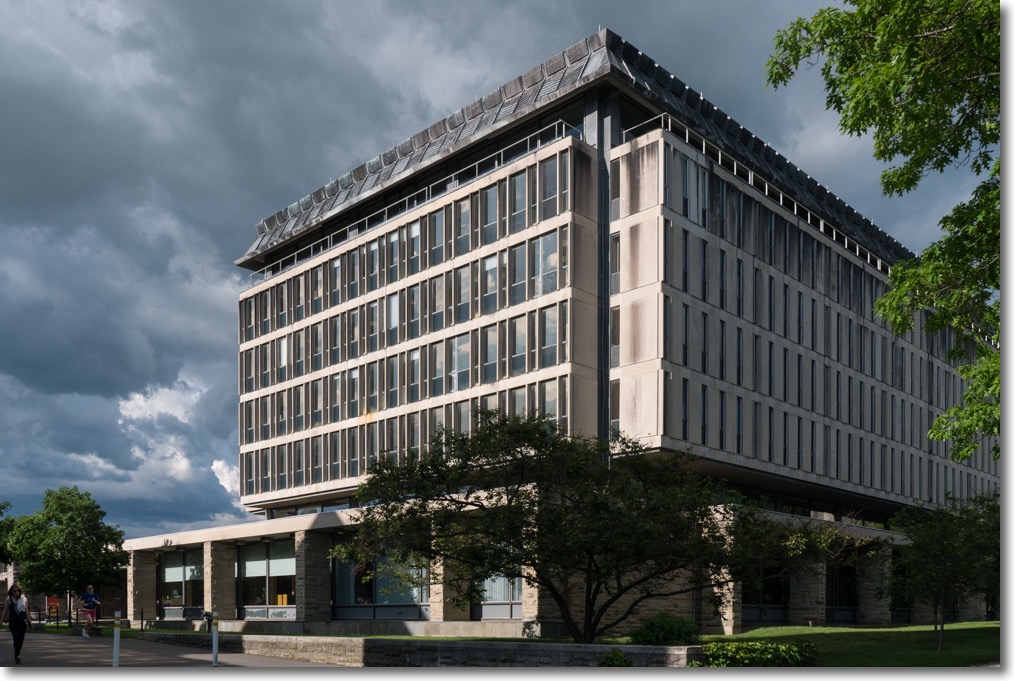
The (obligatory) John M. Olin Library.
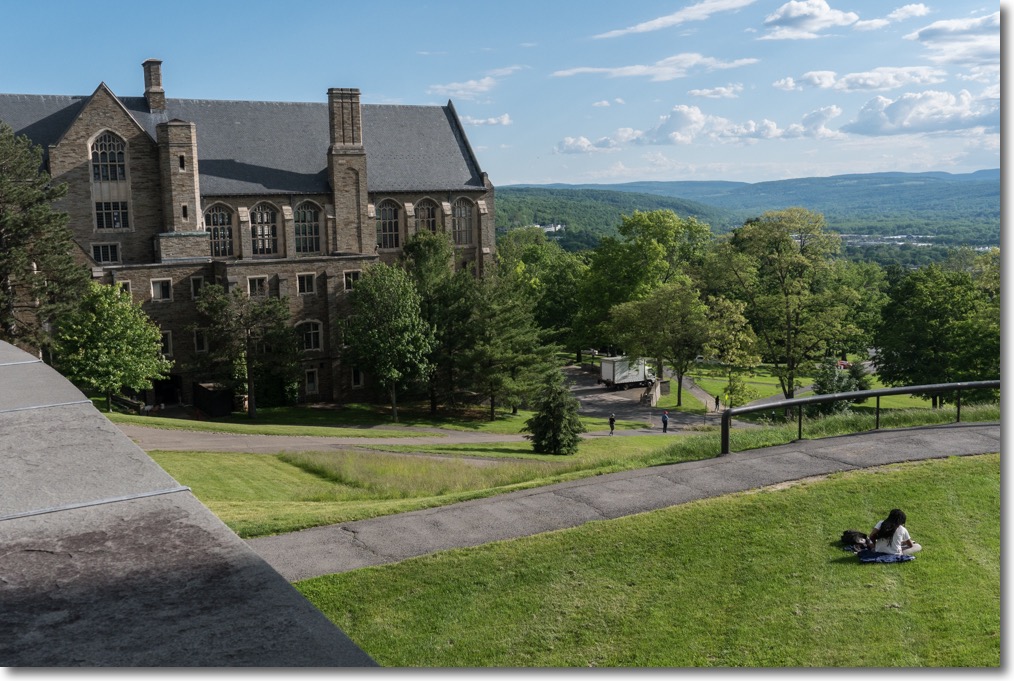
A place to learn.
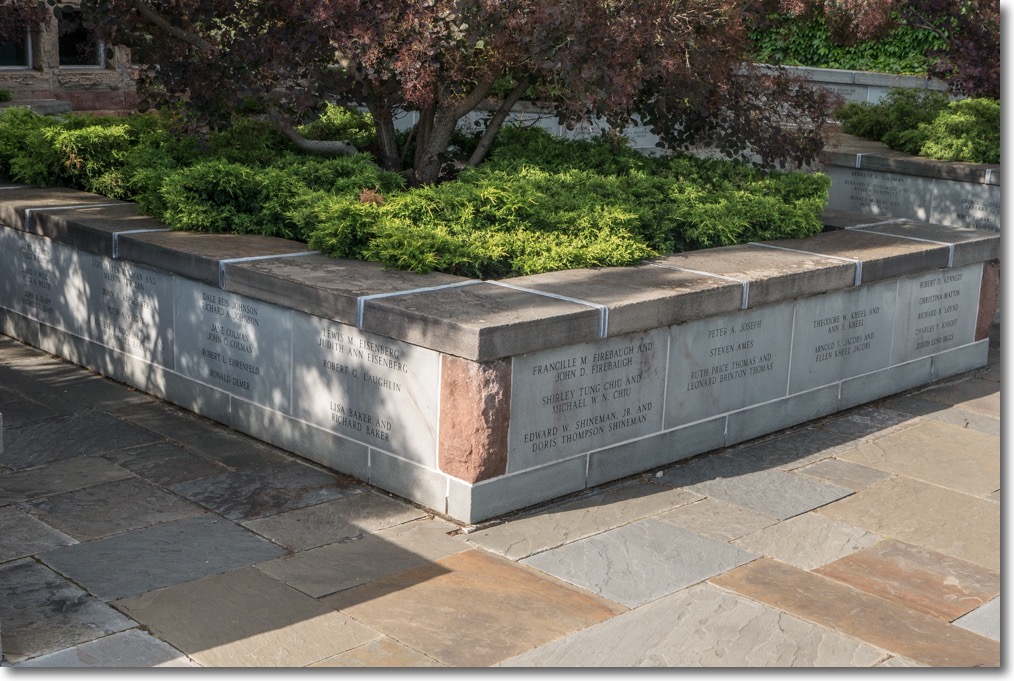
The slabs at the base of the McGraw Tower testify to the generosity of many donors.
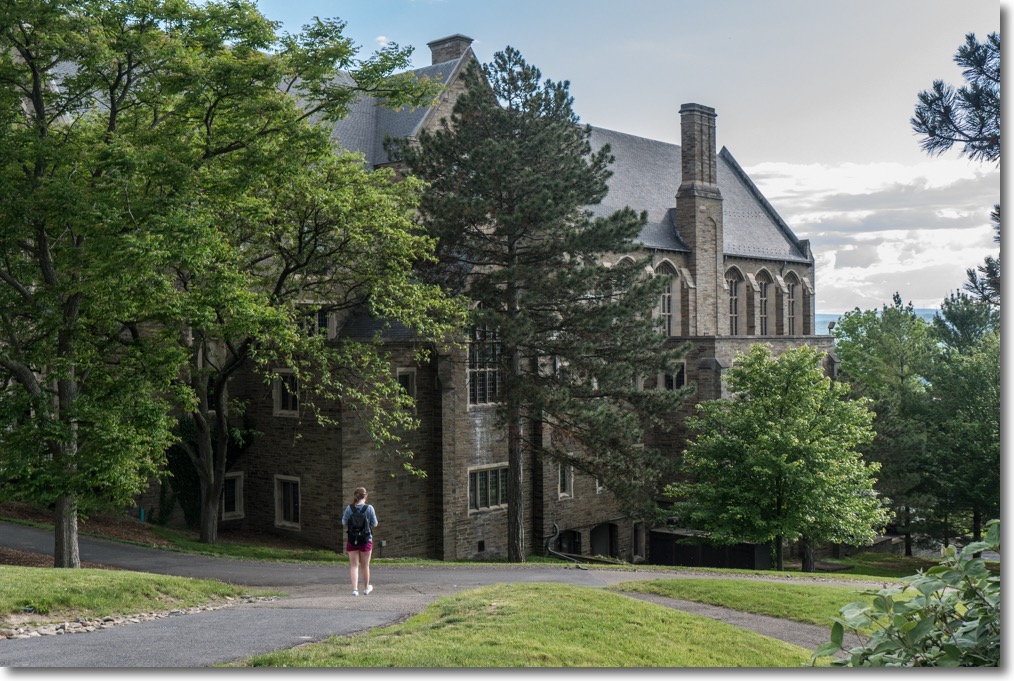
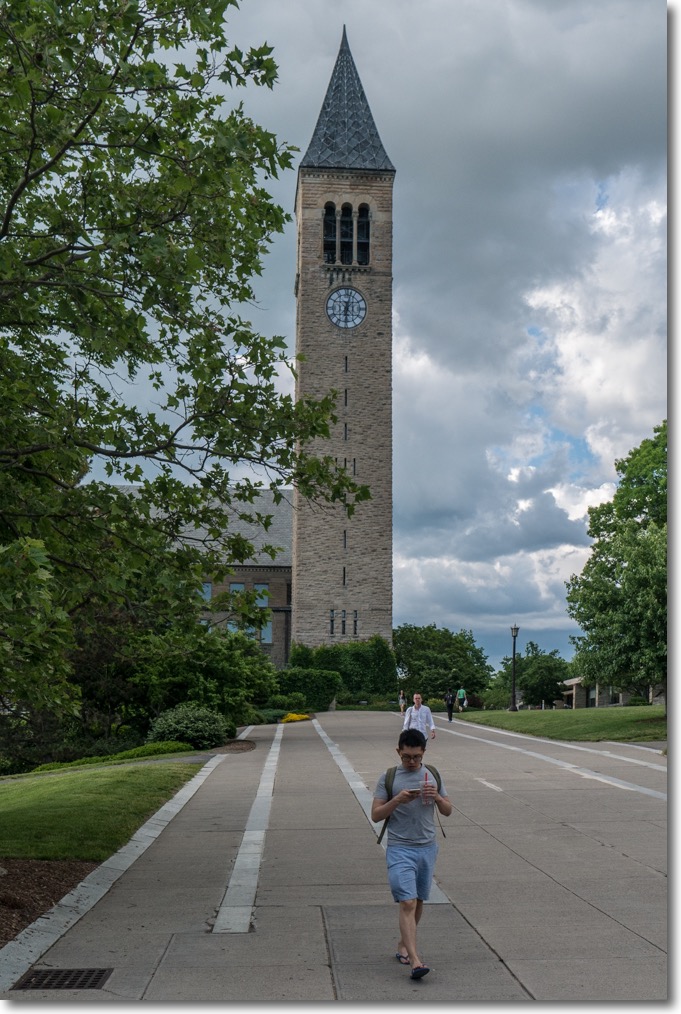
The broad path leading up to the Tower.
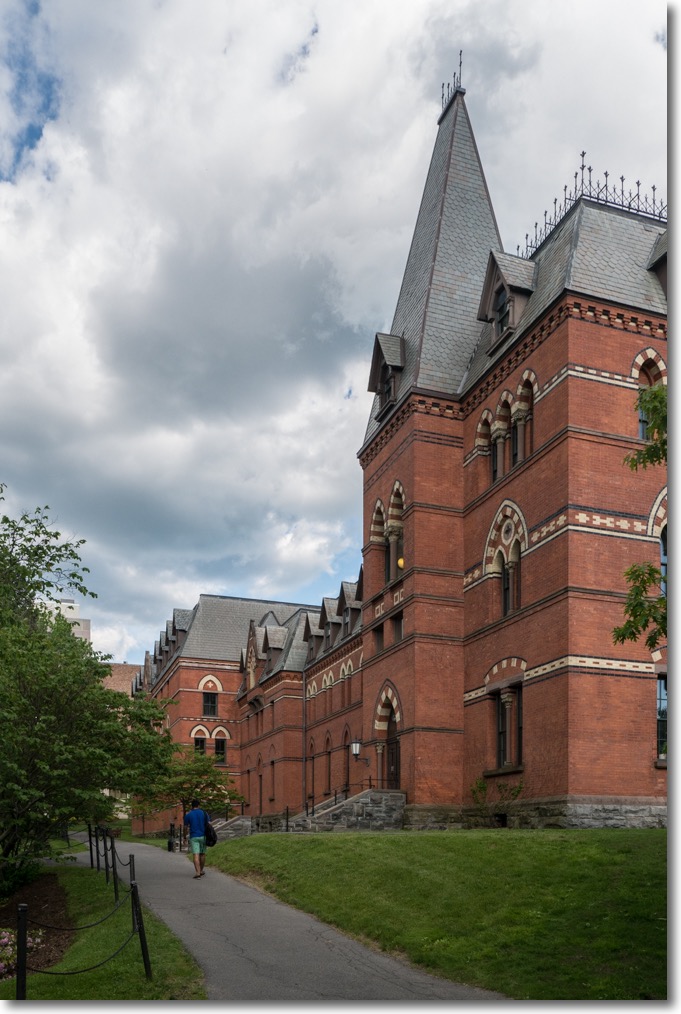
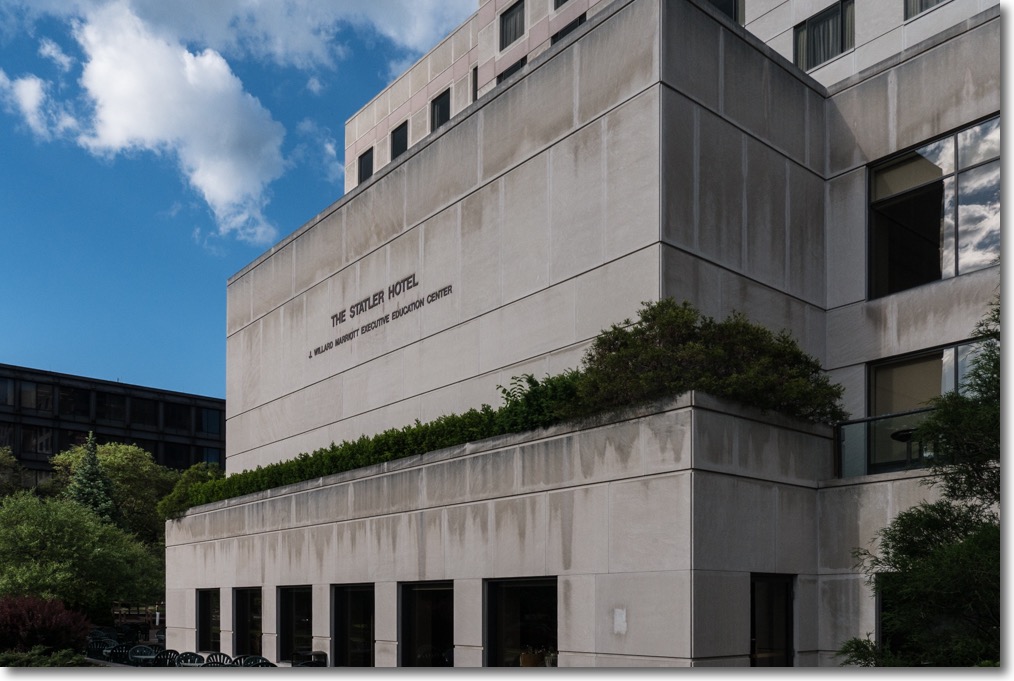
Our hotel on campus. Both hotel and training ground for students of hotel management.
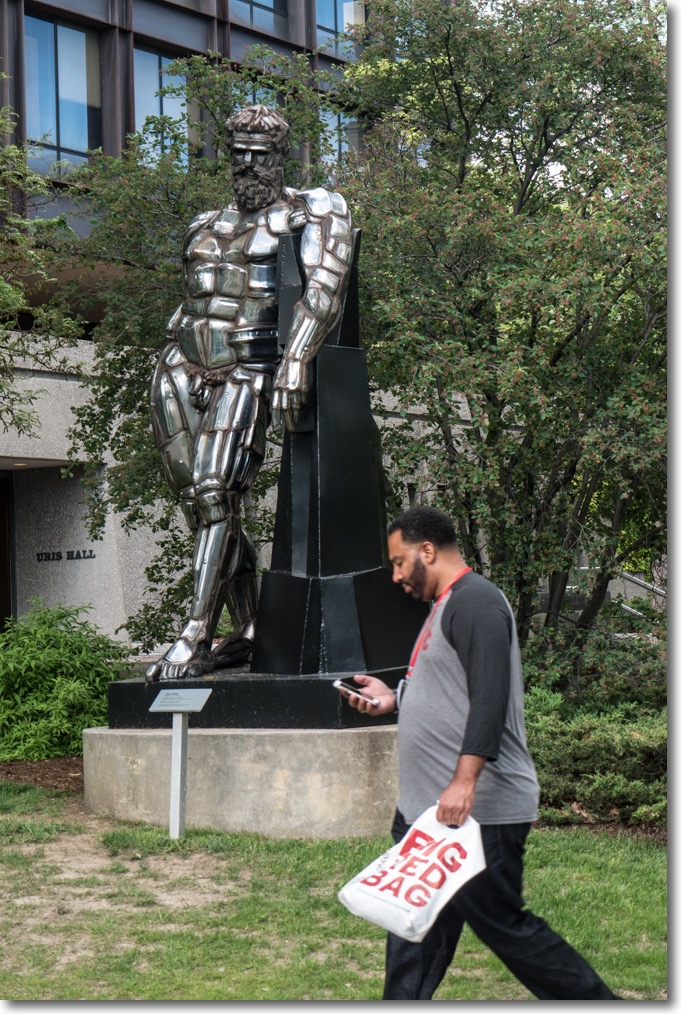
Herakles in Ithaca by Jason Seley, class of 1940. 1980-81.
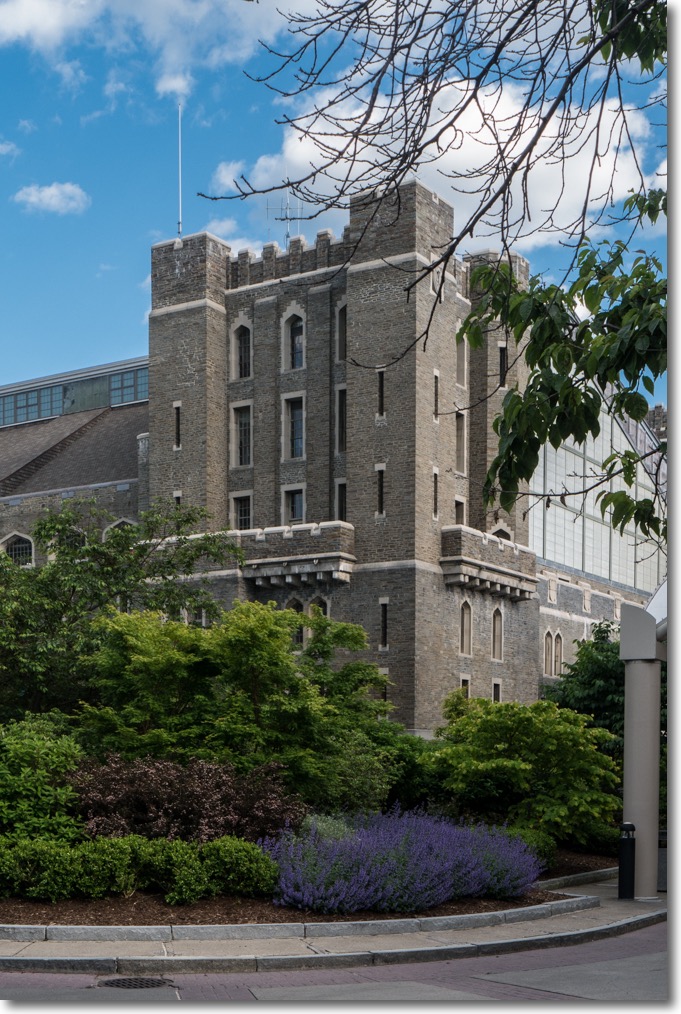
Neo-Norman architecture.
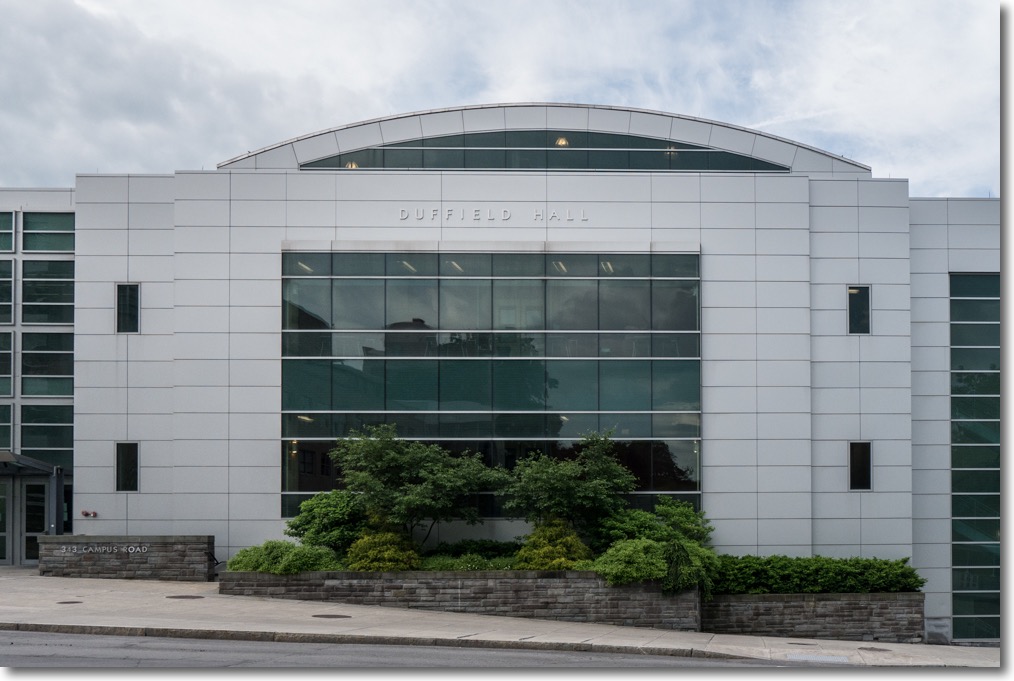
Duffield Hall, donated by David Duffield of PeopleSoft, whom I had the pleasure to meet many years ago. An alumnus of the school, this building houses nanotechnology sciences.
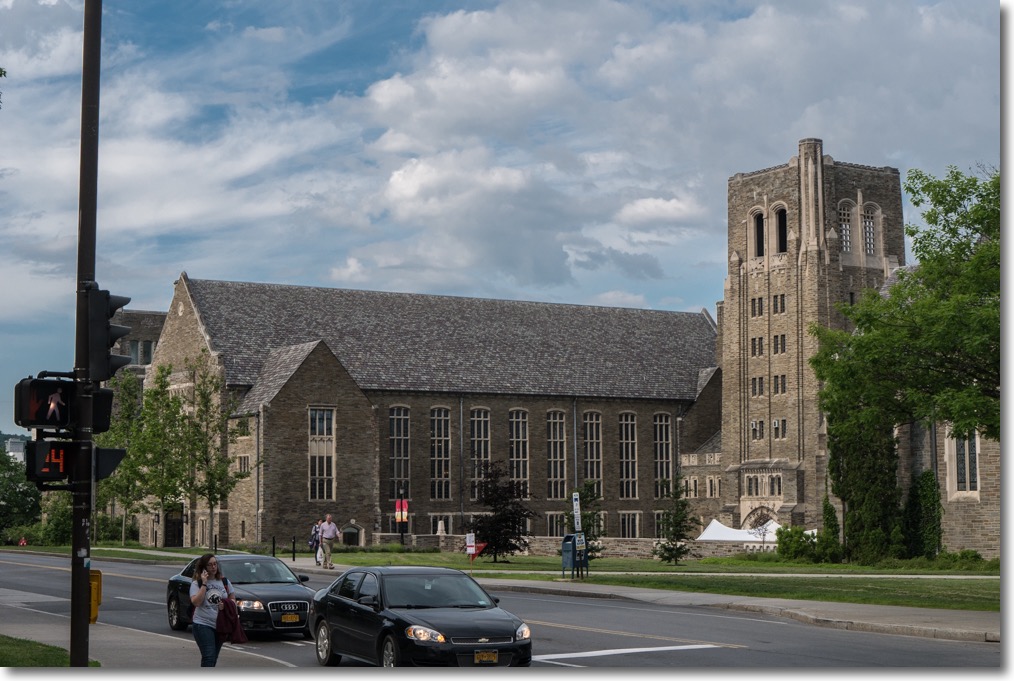
Anabel Taylor Hall is the Interfaith Center.
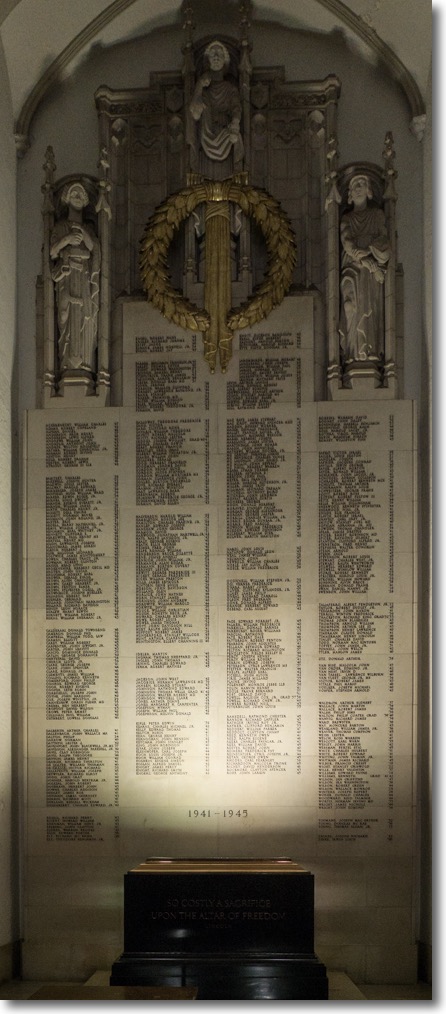
Inside the Hall, honoring the War dead.
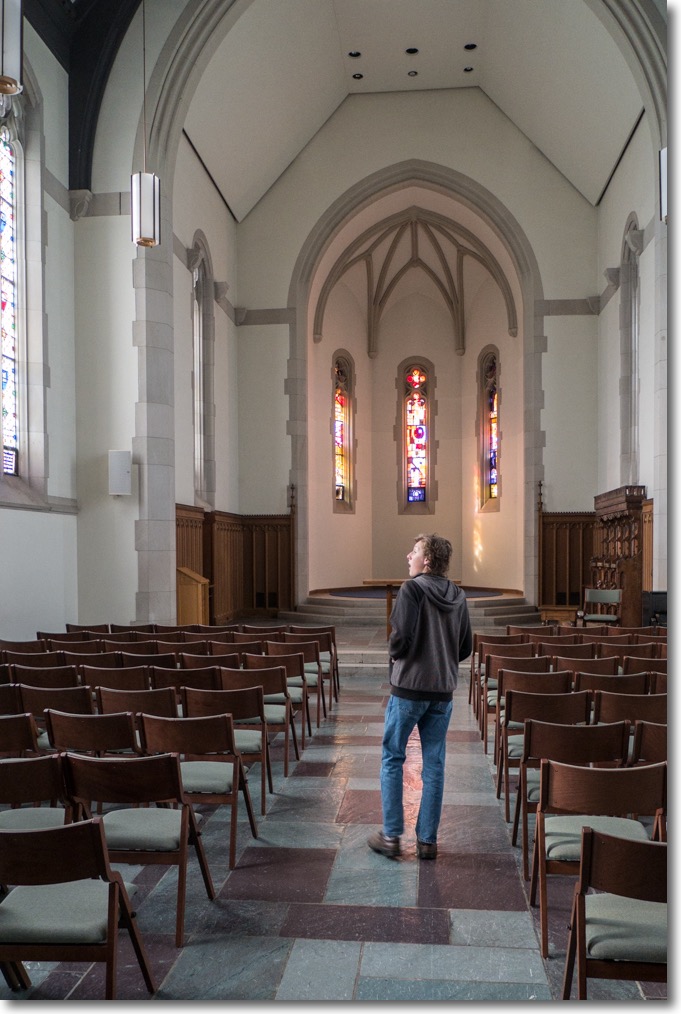
Inside the Memorial Chapel.
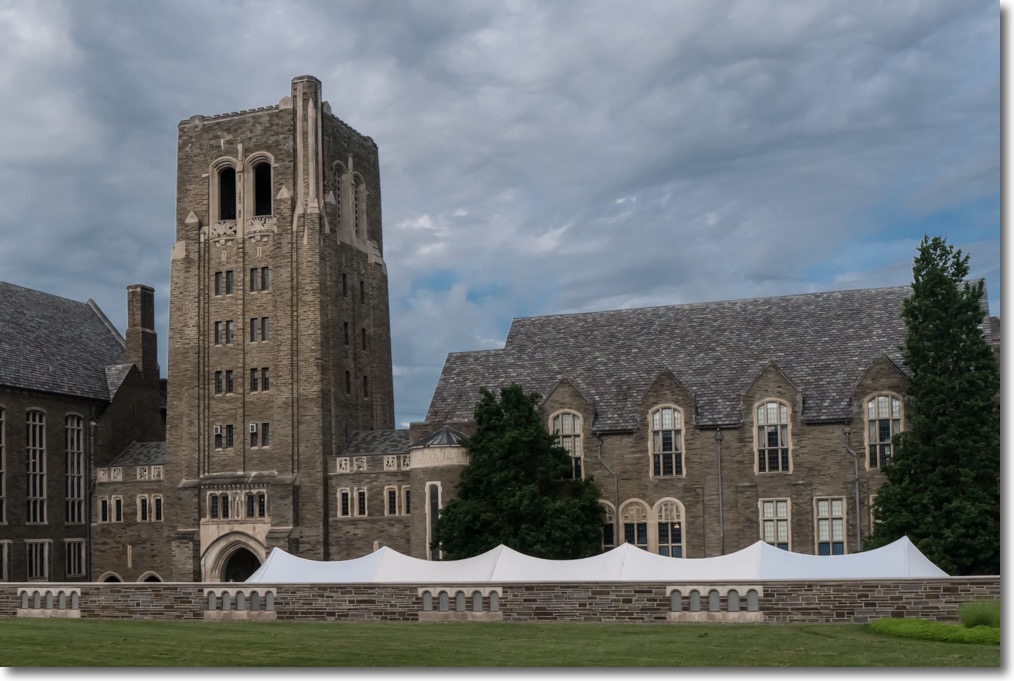
The Arts Quad.
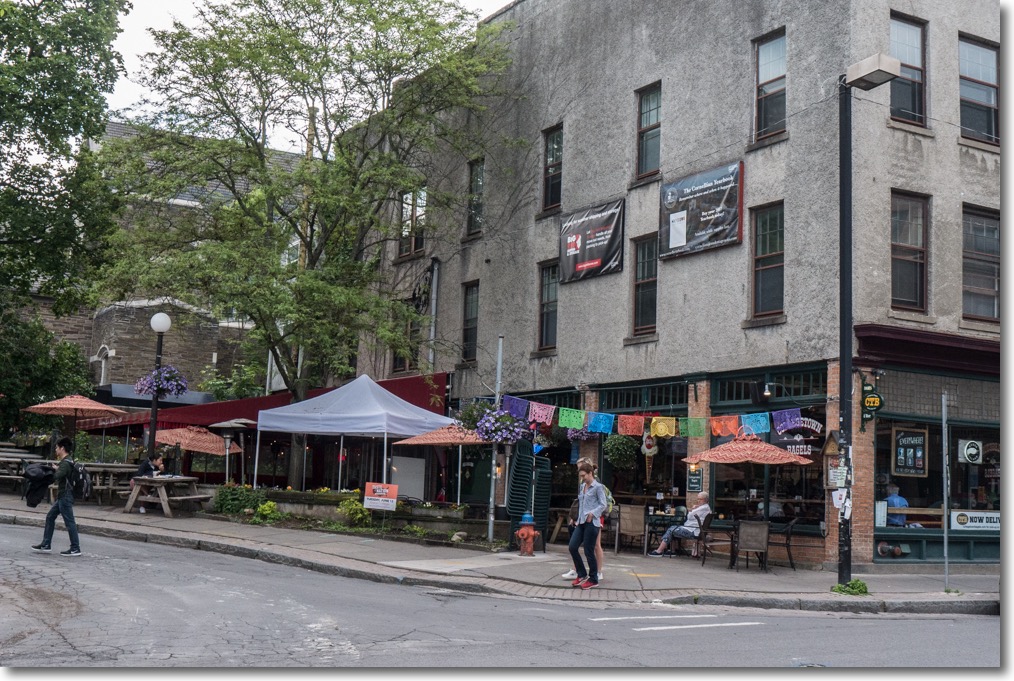
The West Campus has a great many spots at which to hang out, and an abundance of housing for those preferring off-campus dorms.
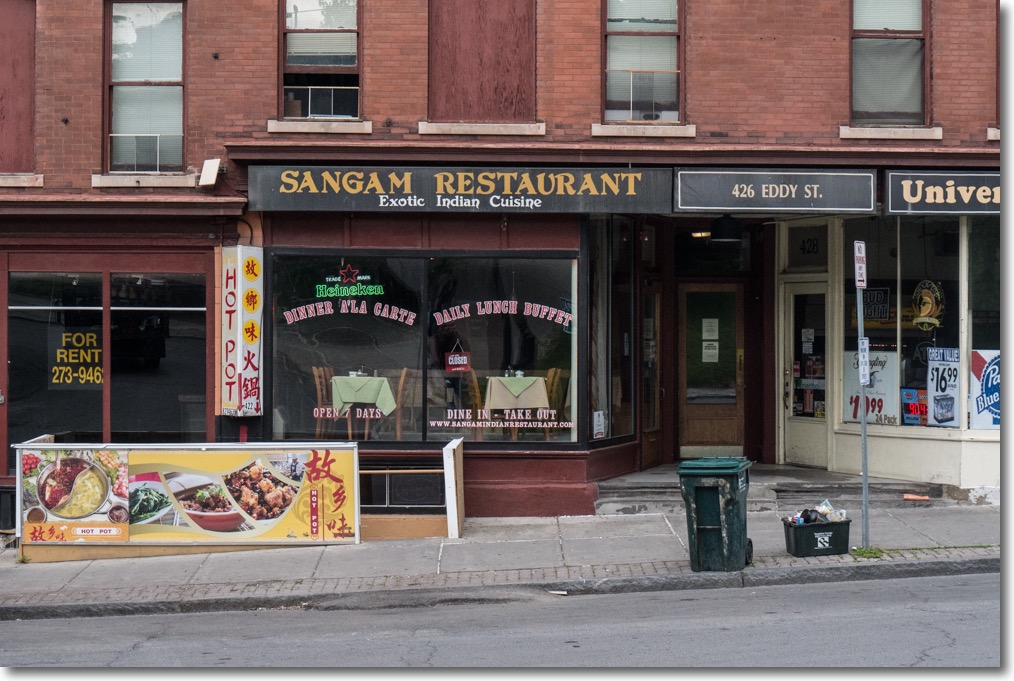
And did I mention high end cuisine?
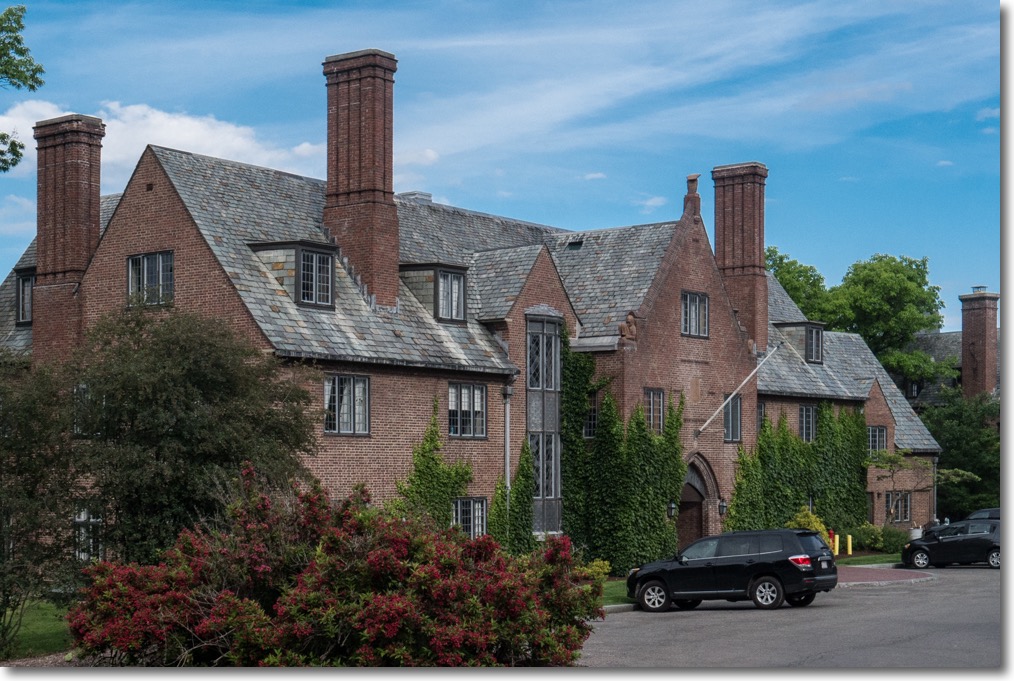
On campus student dorms.
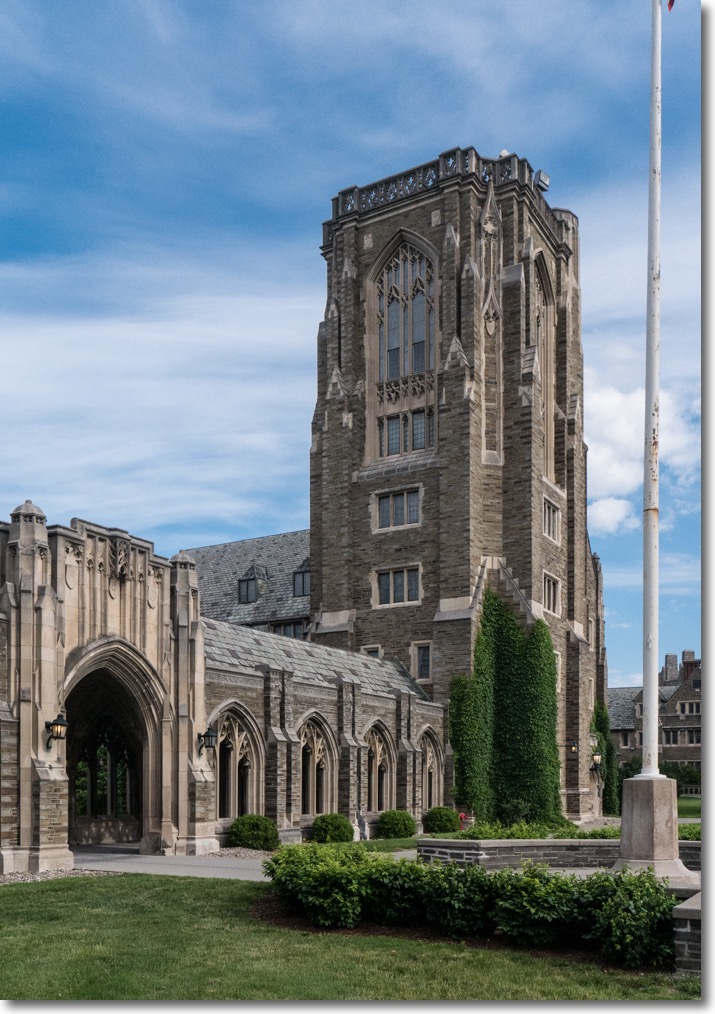
Lyon Hall, an on campus dorm.
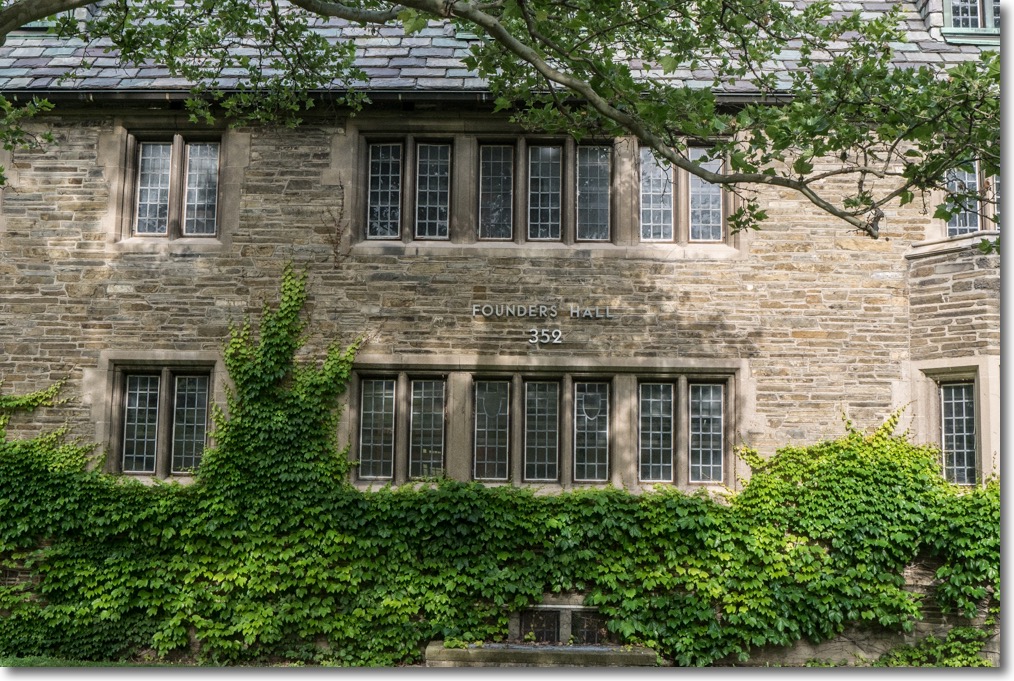
Founders’ Hall.
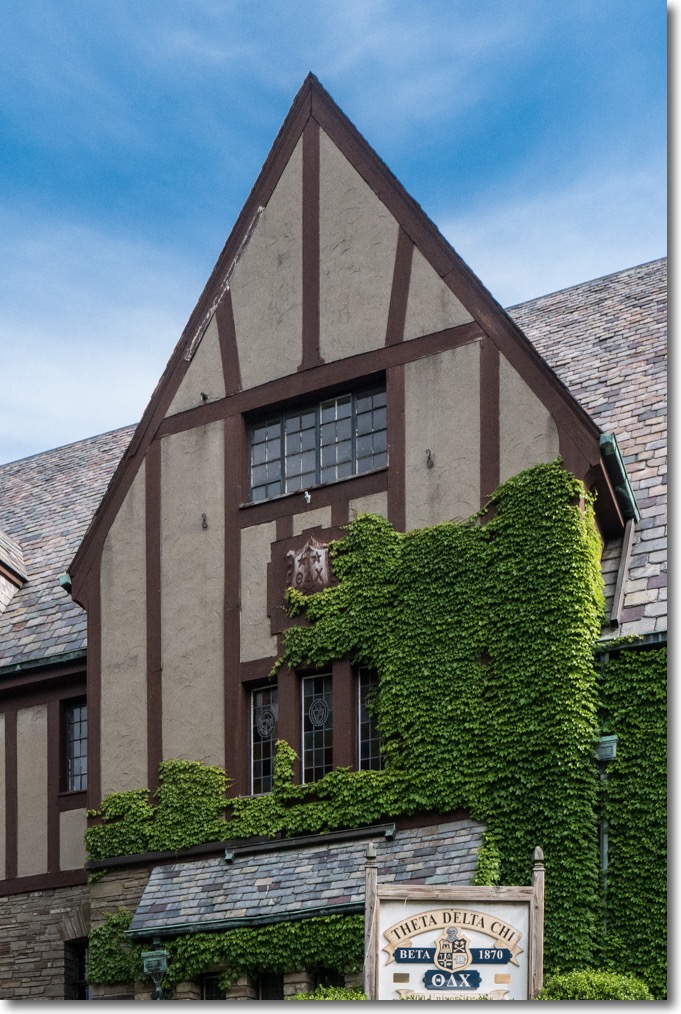
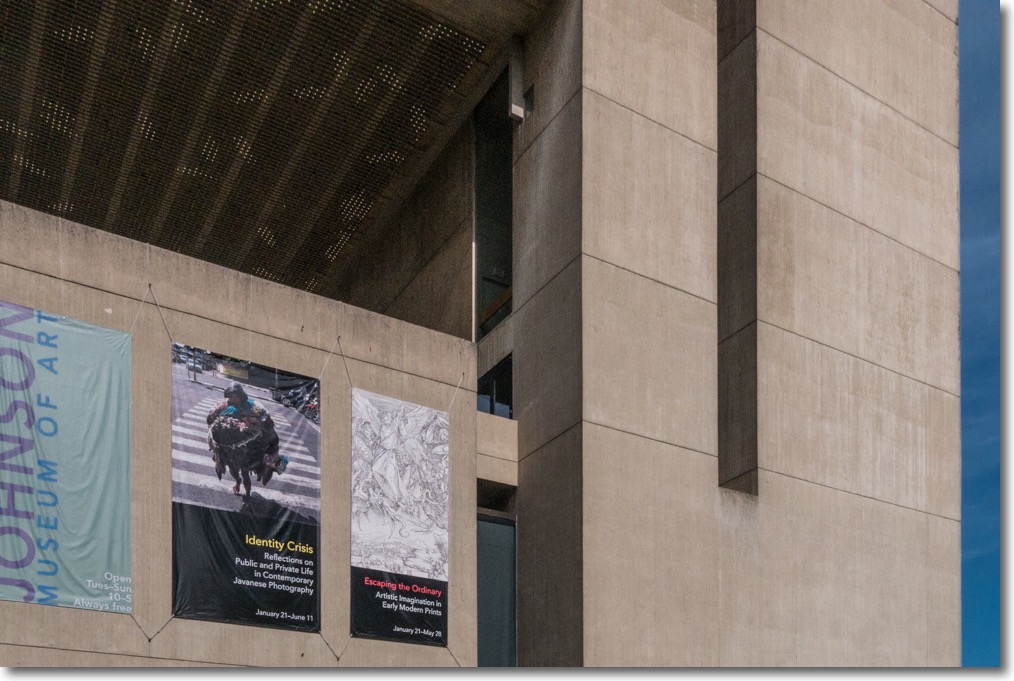
The Johnson Museum of Art atop Liebe Slope.
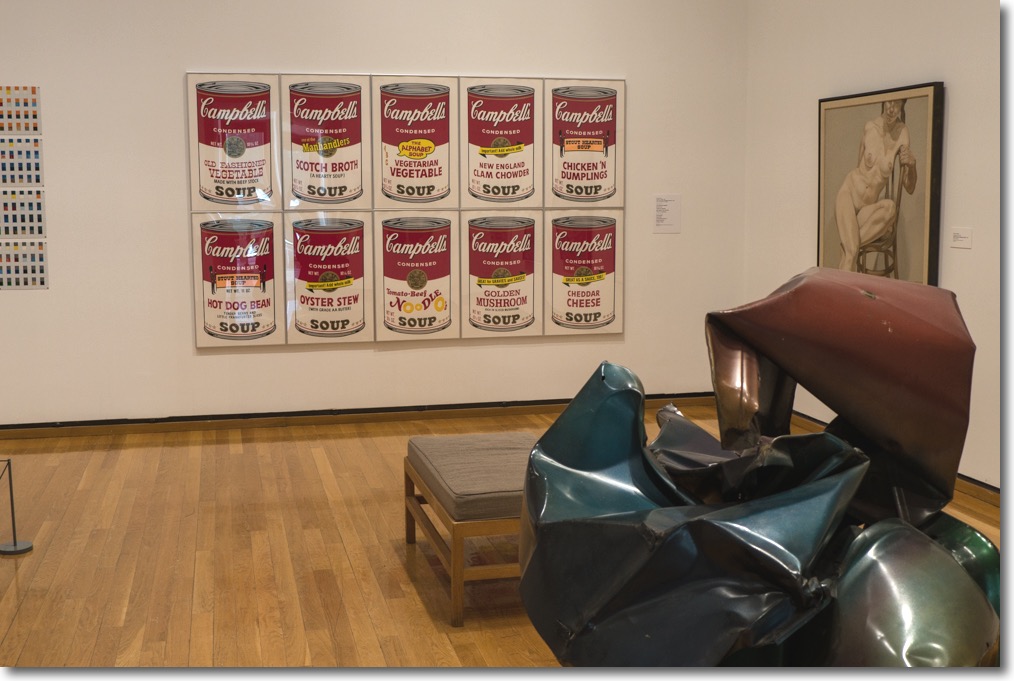
Warhol at the Museum. You could sell this piece of garbage and construct a new building with the proceeds.
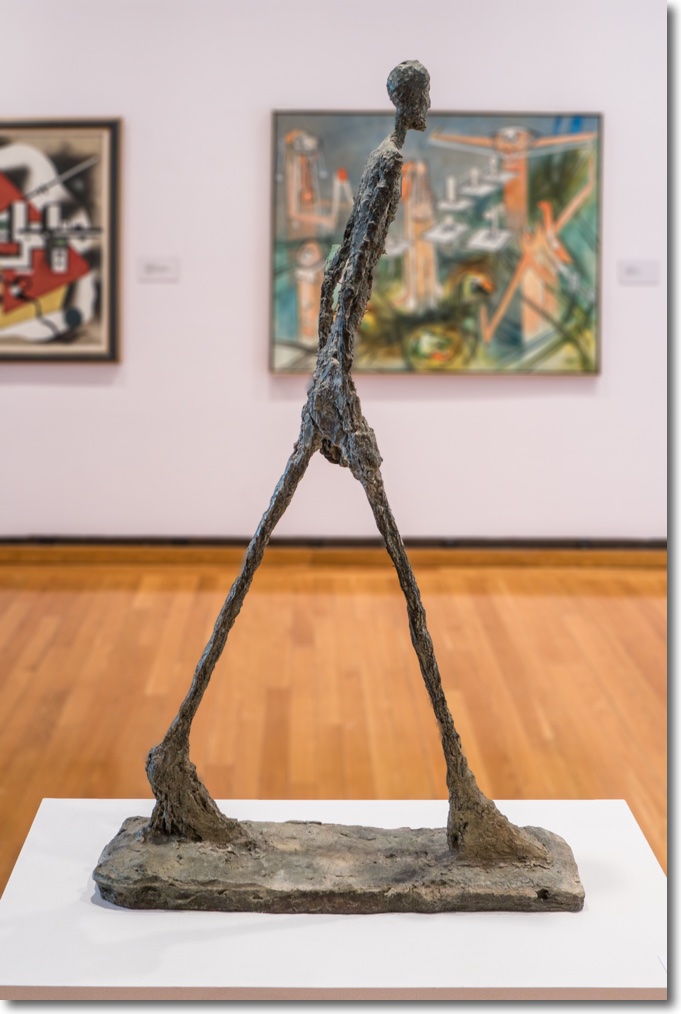
Insanely great Giacometti. This is L’Homme qui marche II of 1959-60. Priceless. I have loved Giacometti since I was in short pants.
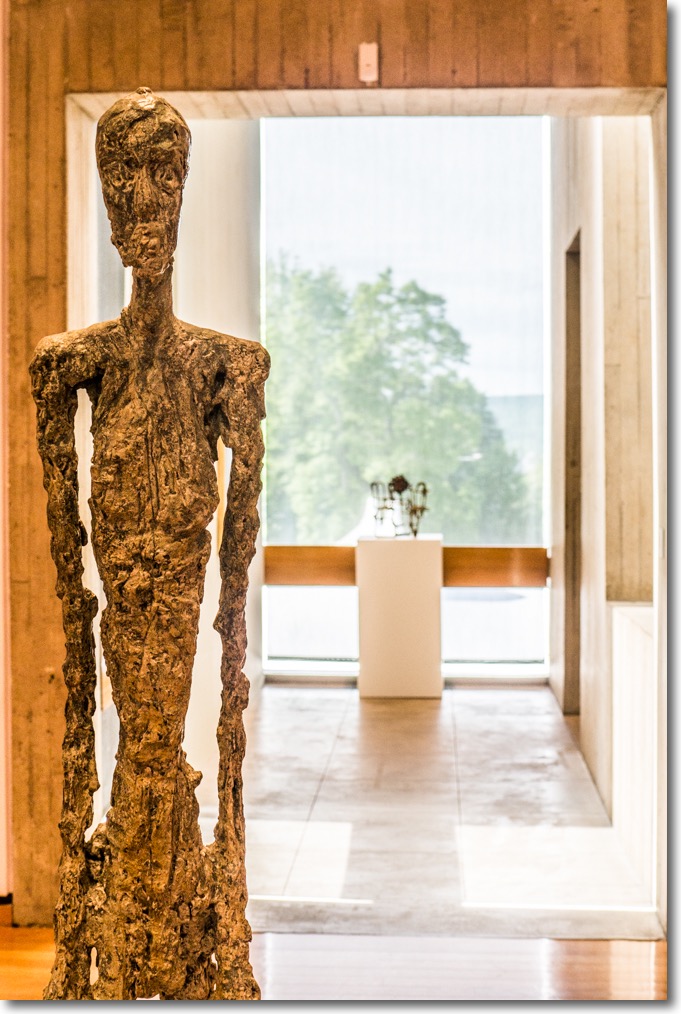
Alberto Giacometti used his brother Diego when modeling the faces of his stick figures.
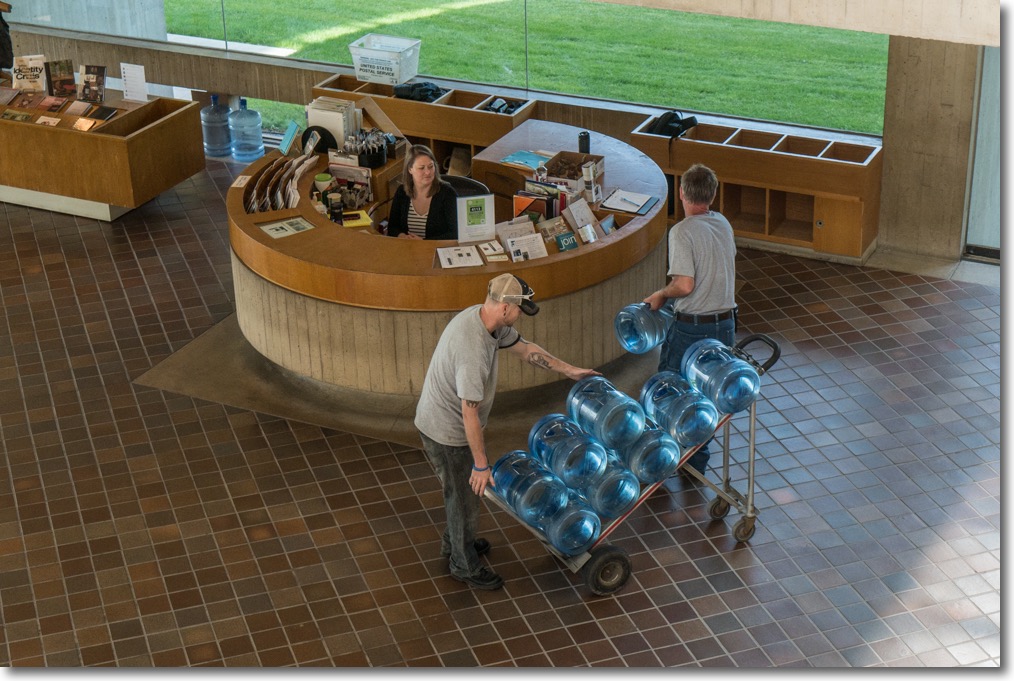
The lobby of the Museum.
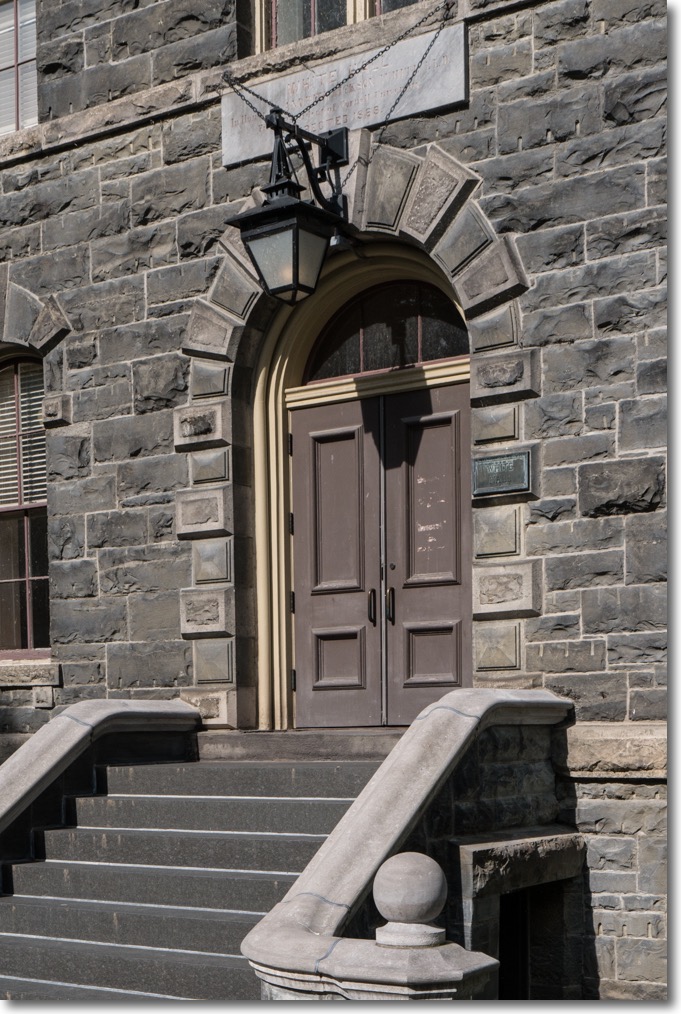
White Hall, 1888. Government, Jewish and near Eastern studies are taught here.
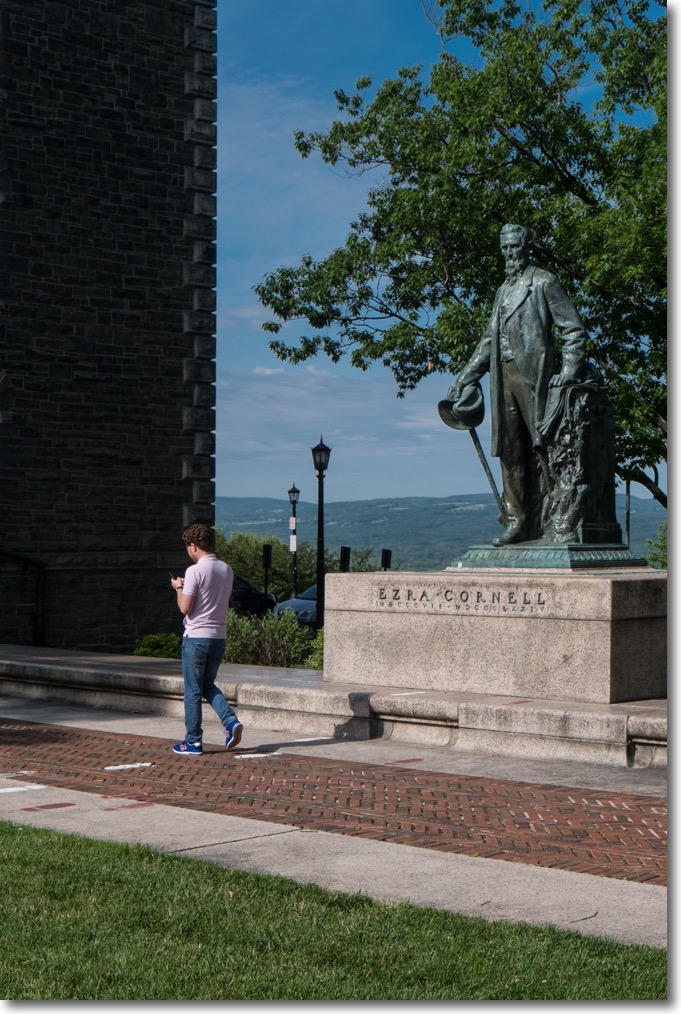
Founder Ezra Cornell.
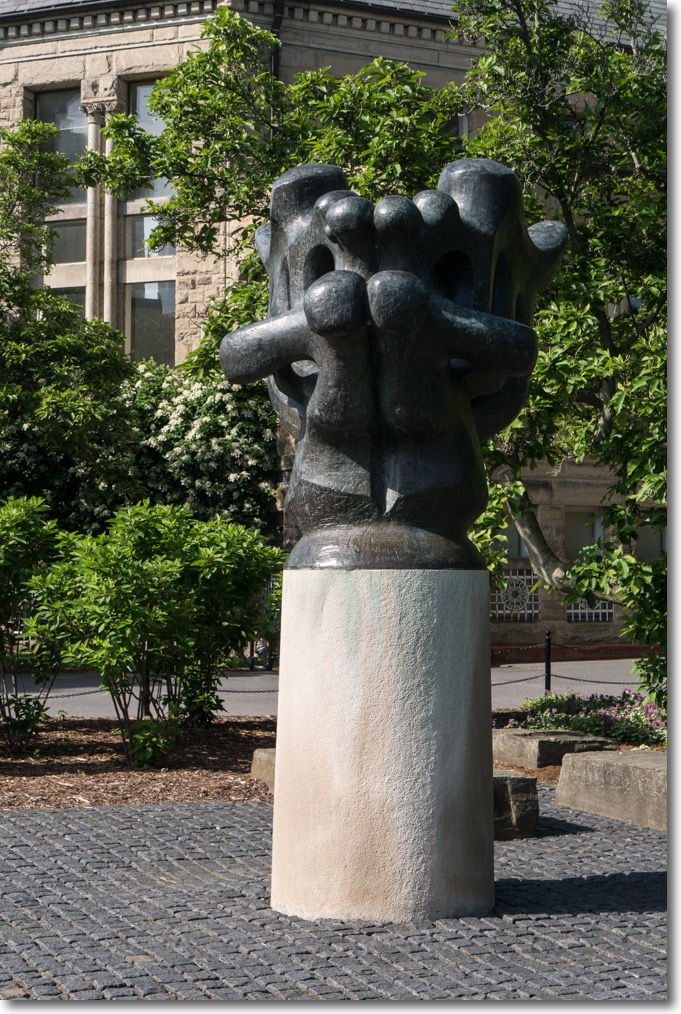
Jacques Lipschitz, Song of the Vowels, 1931-32.
The list of Cornell faculty and alumni is so extensive that only a few need be named here. They include, on the faculty side, John Cleese, Carl Sagan, Frances Perkins (FDR’s Labor Secretary) and Henry Louis Gates, Jr. Alumni include Sandy Weill, Adolph Coors, Irwin M. Jacobs (Qualcomm), Rajan Tata, Robert Atkins of diet fame, Toni Morrison, Pearl S. Buck, Bill Maher, Keith Olbermann, Christopher Reeve, Richmond Shreve (the Empire State Building designer), and on and on.

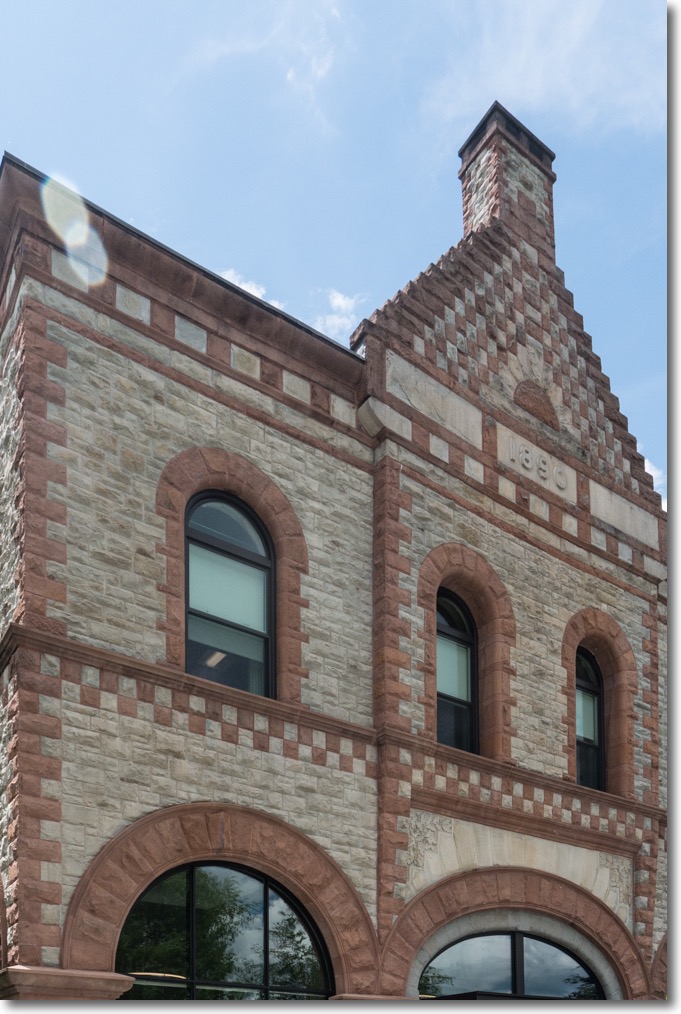
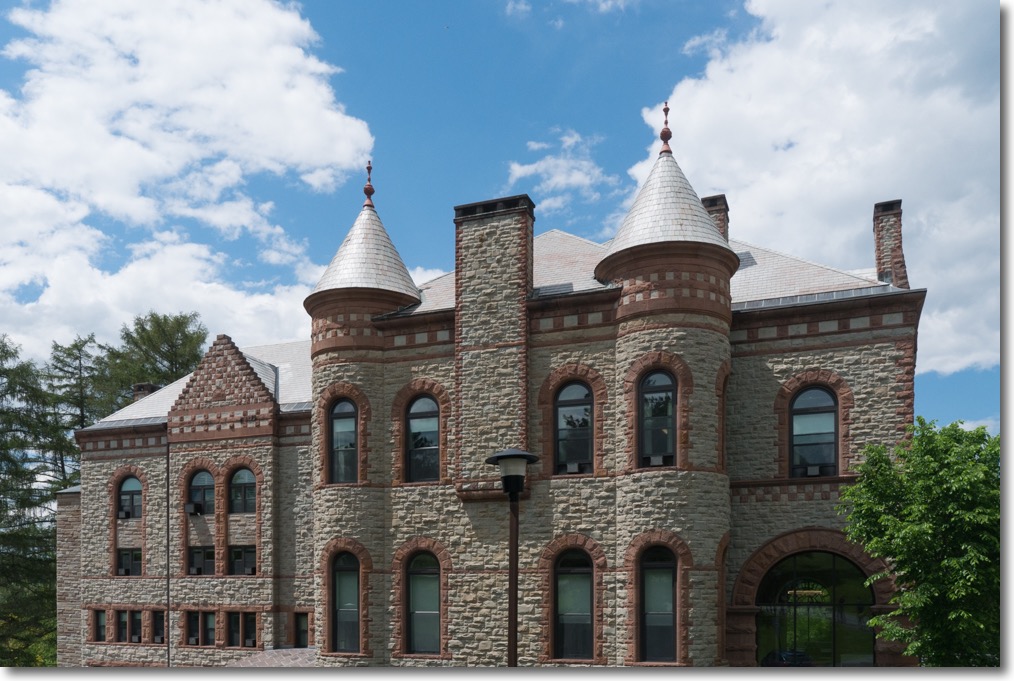
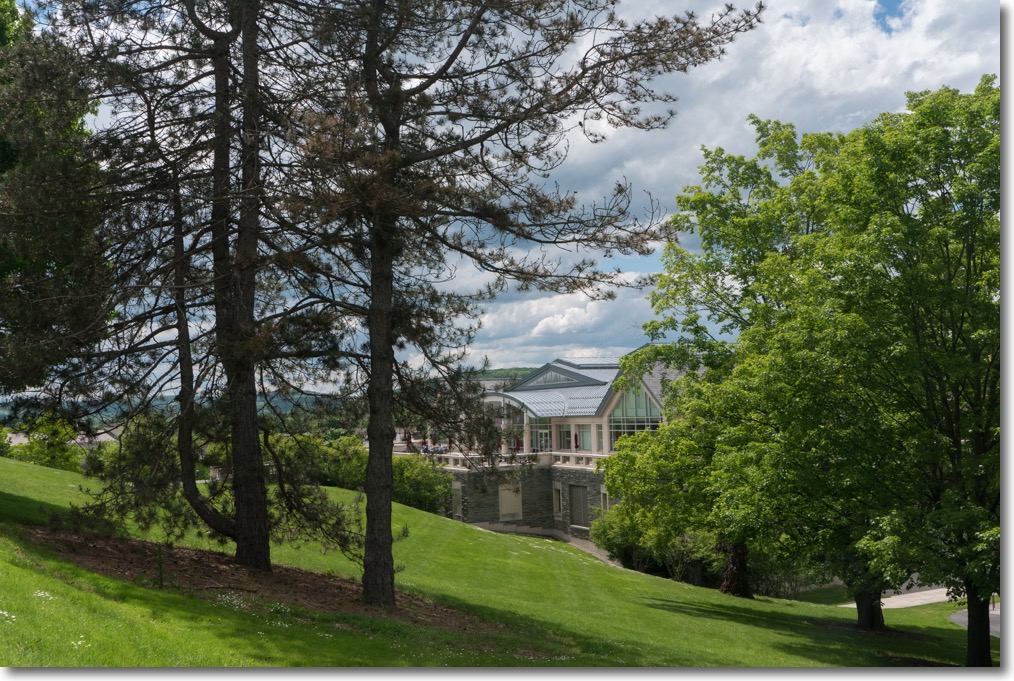
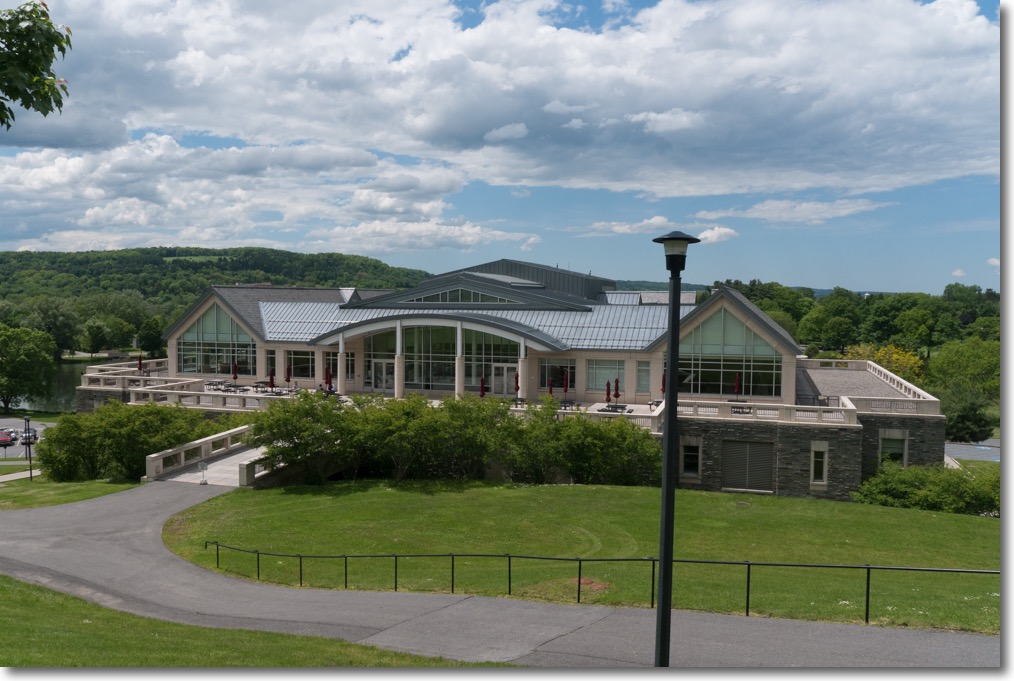
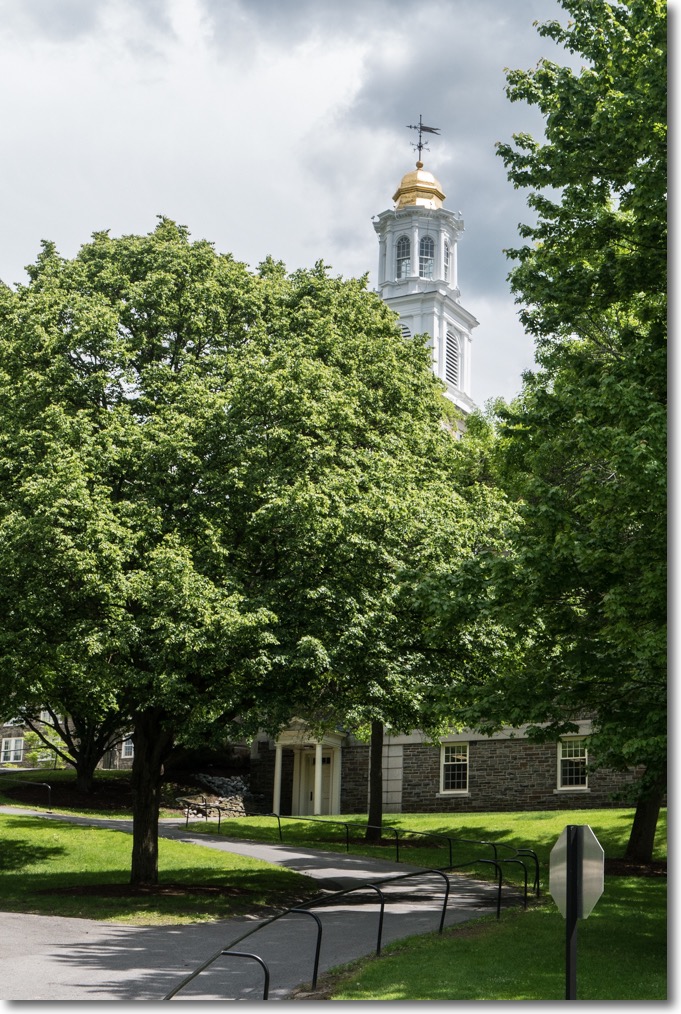
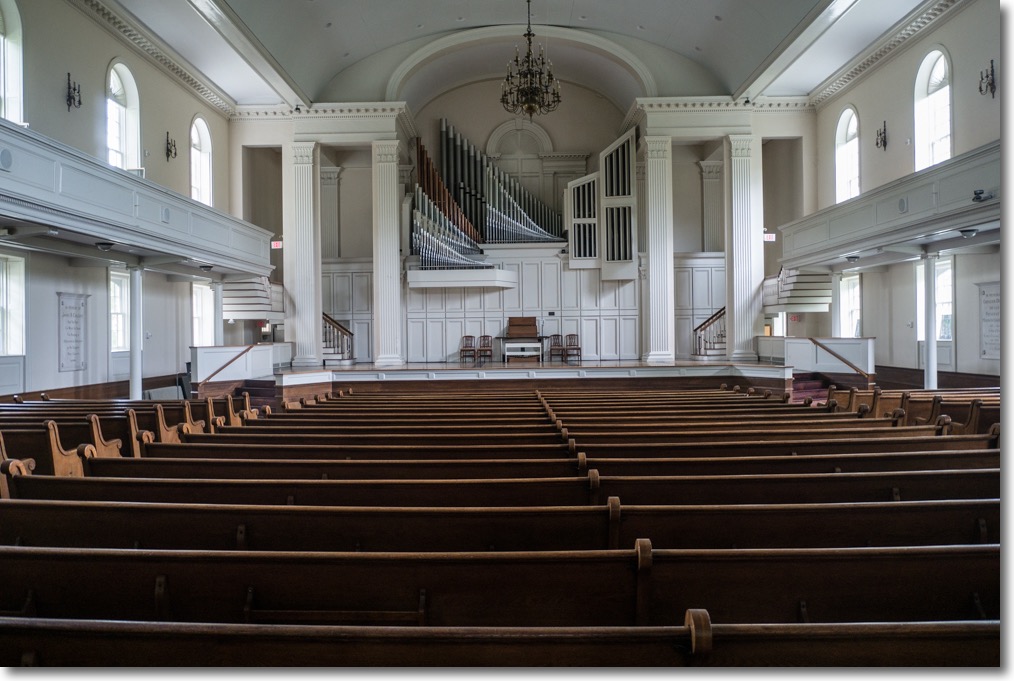
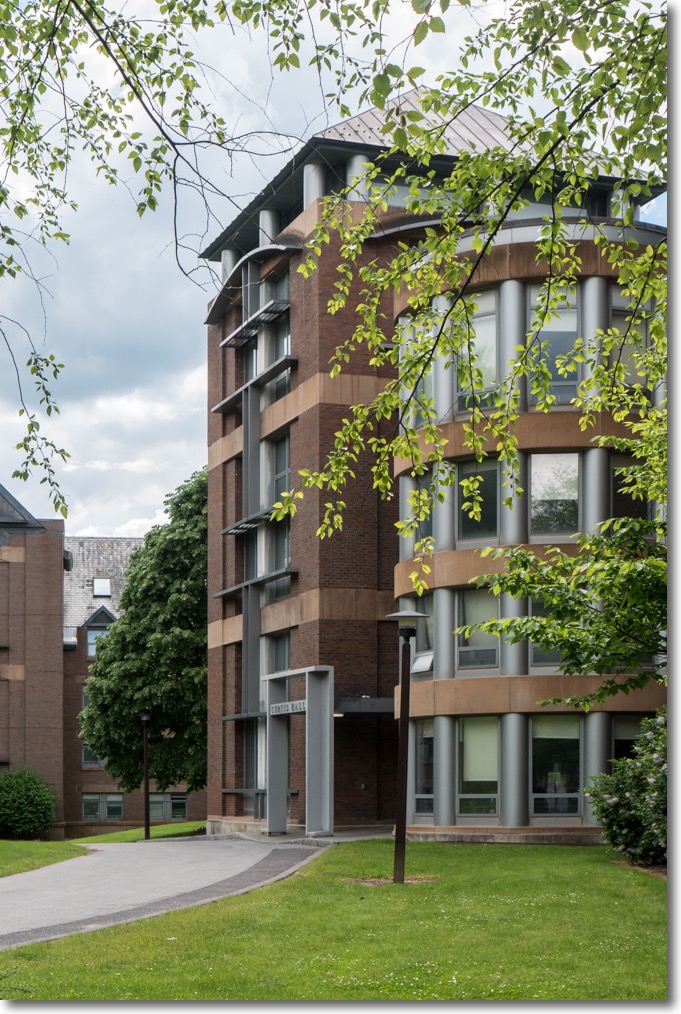
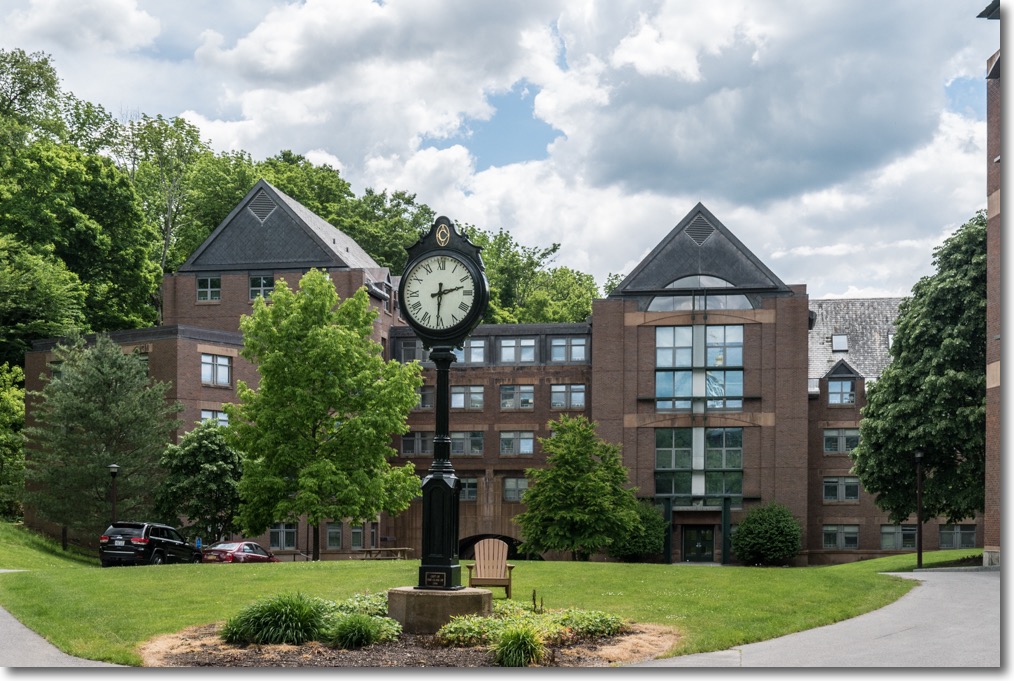
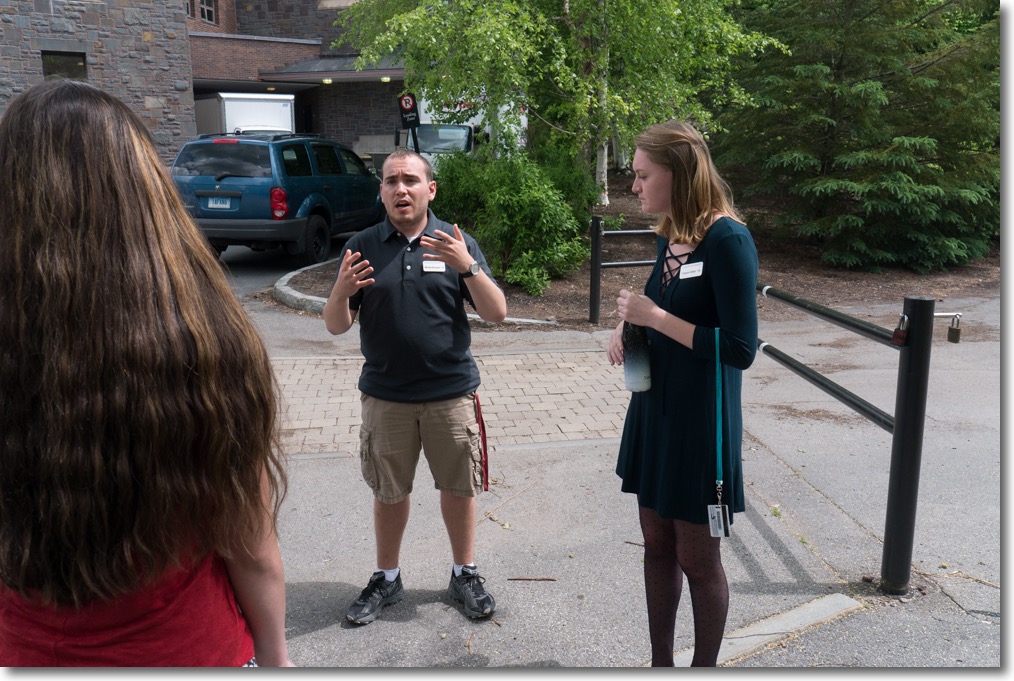
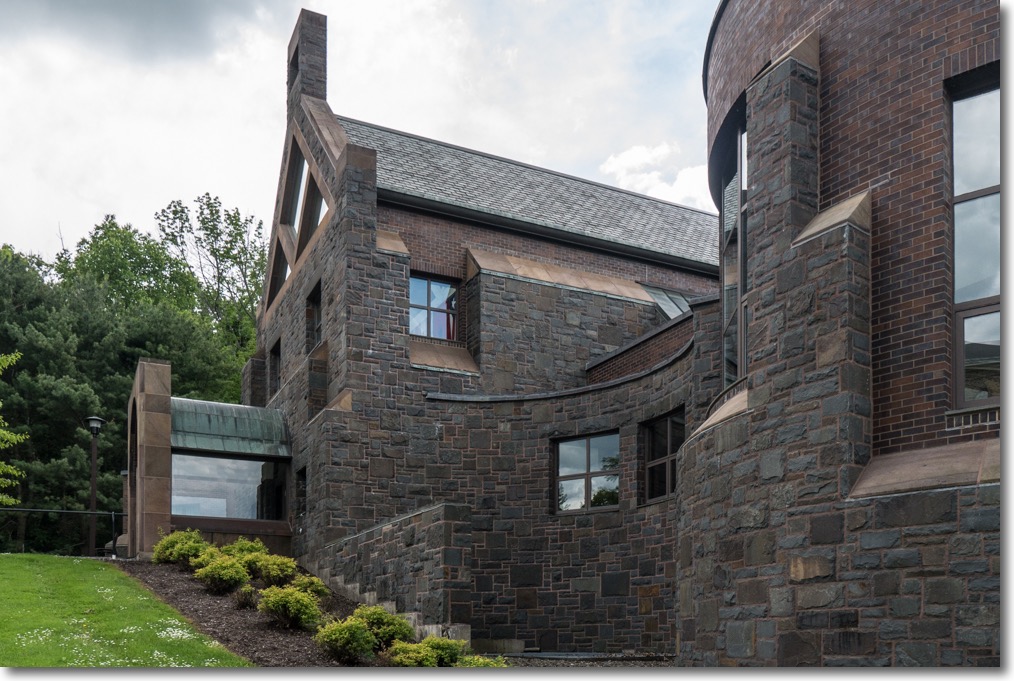
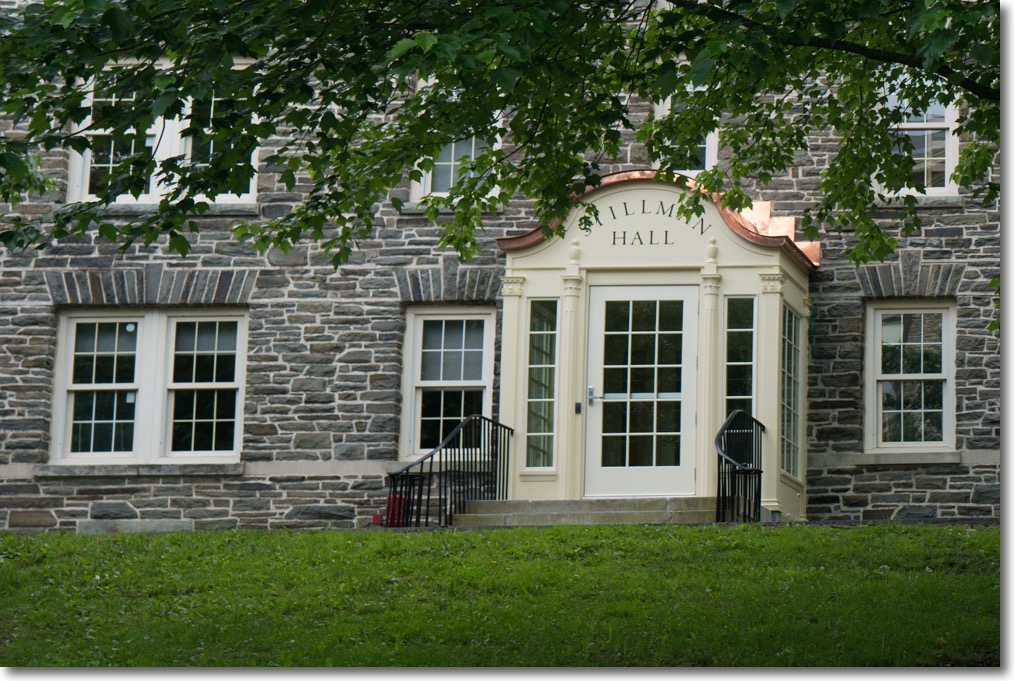
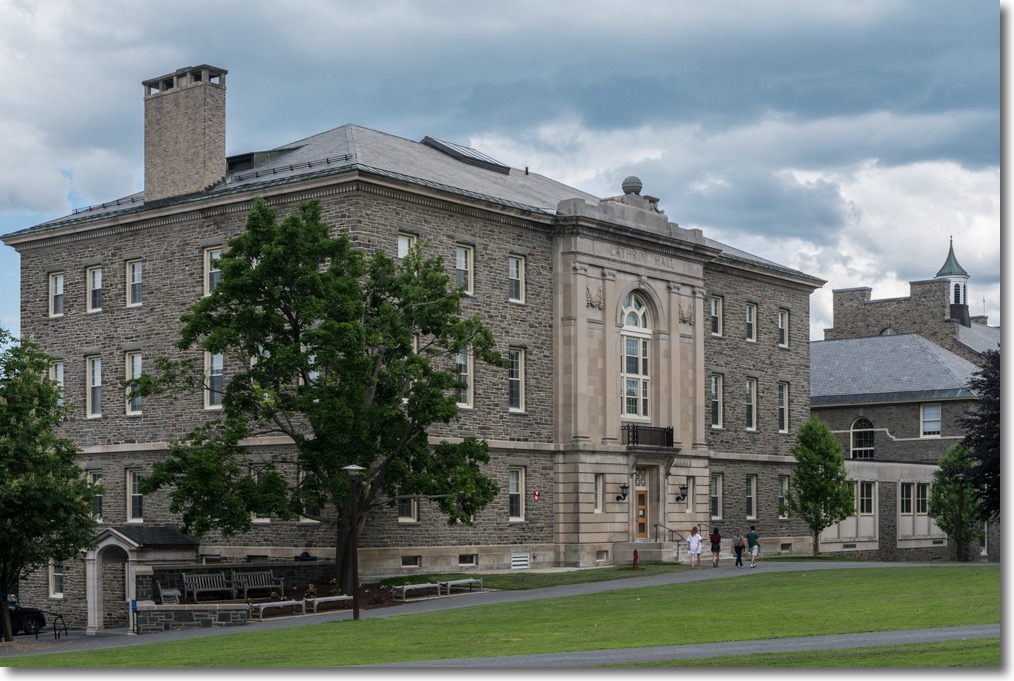
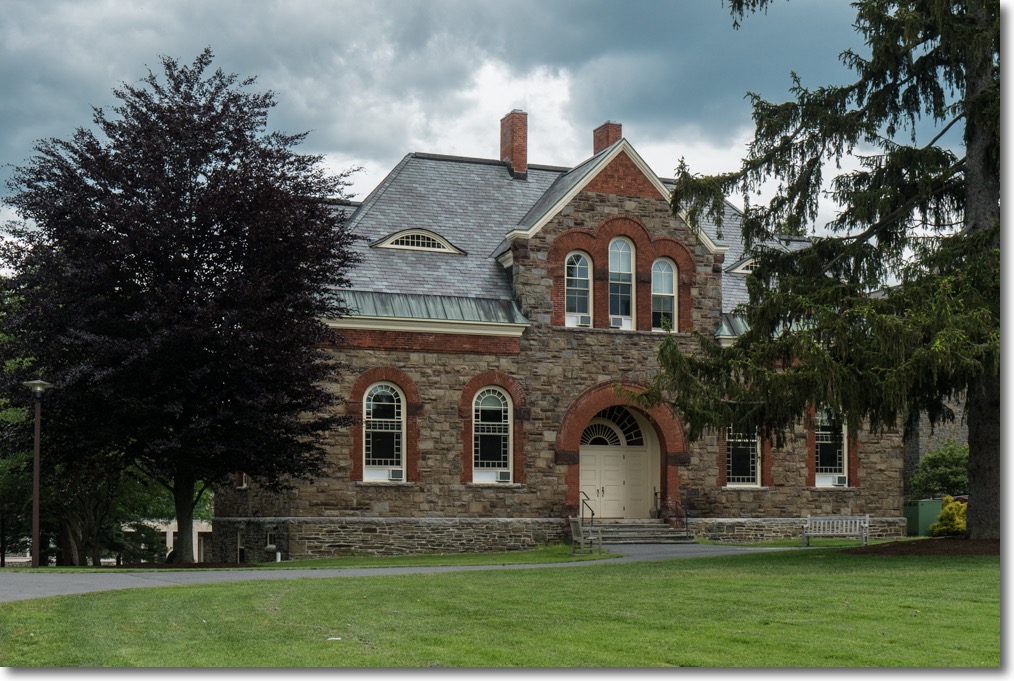
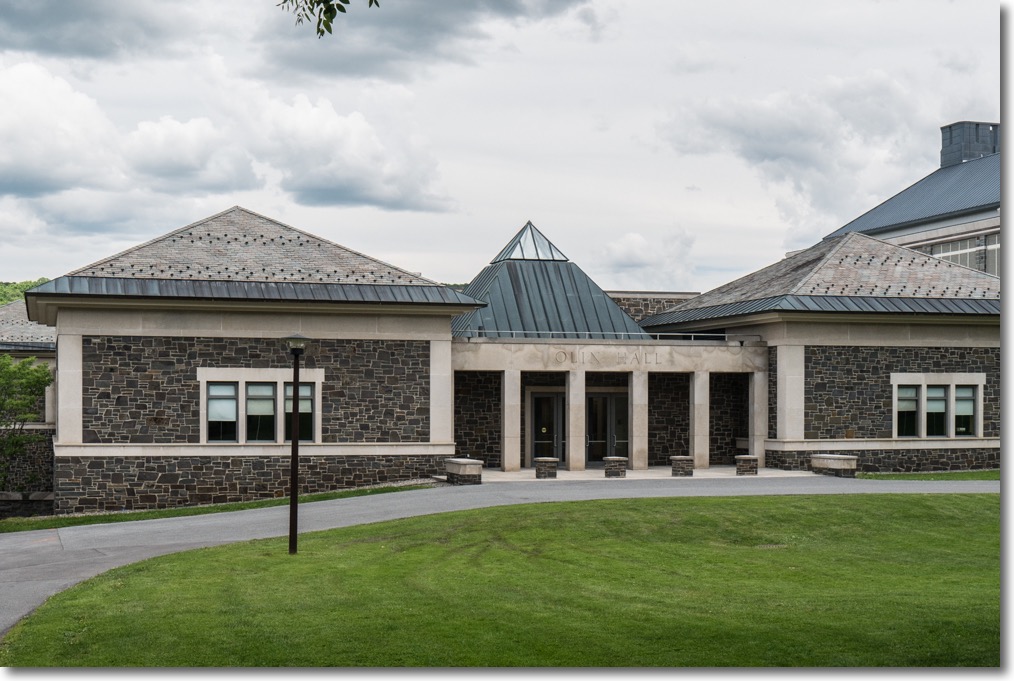
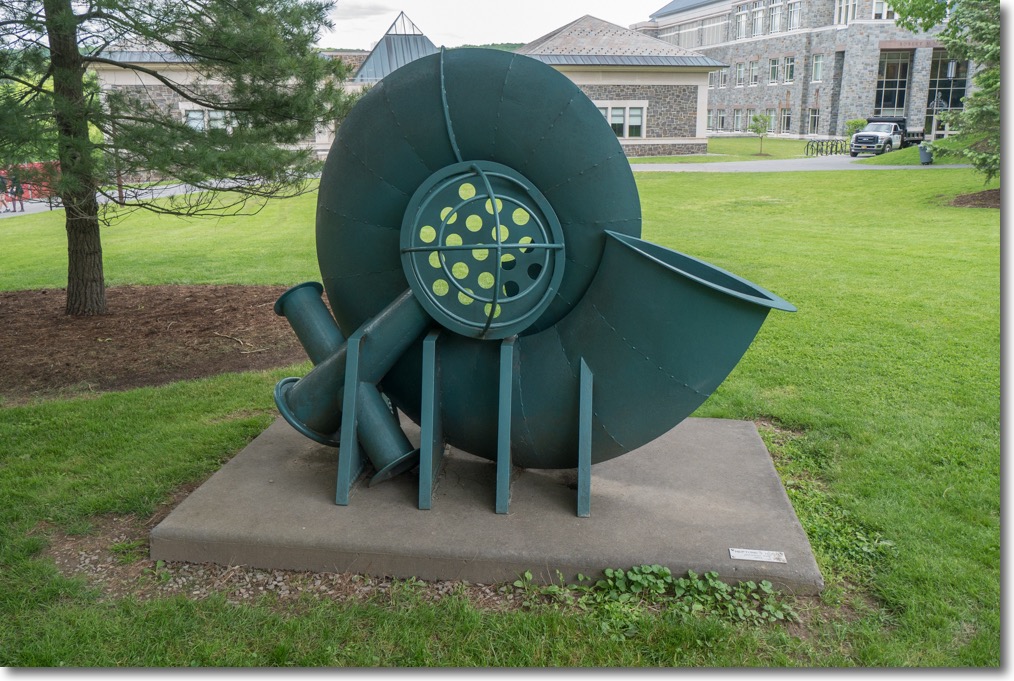

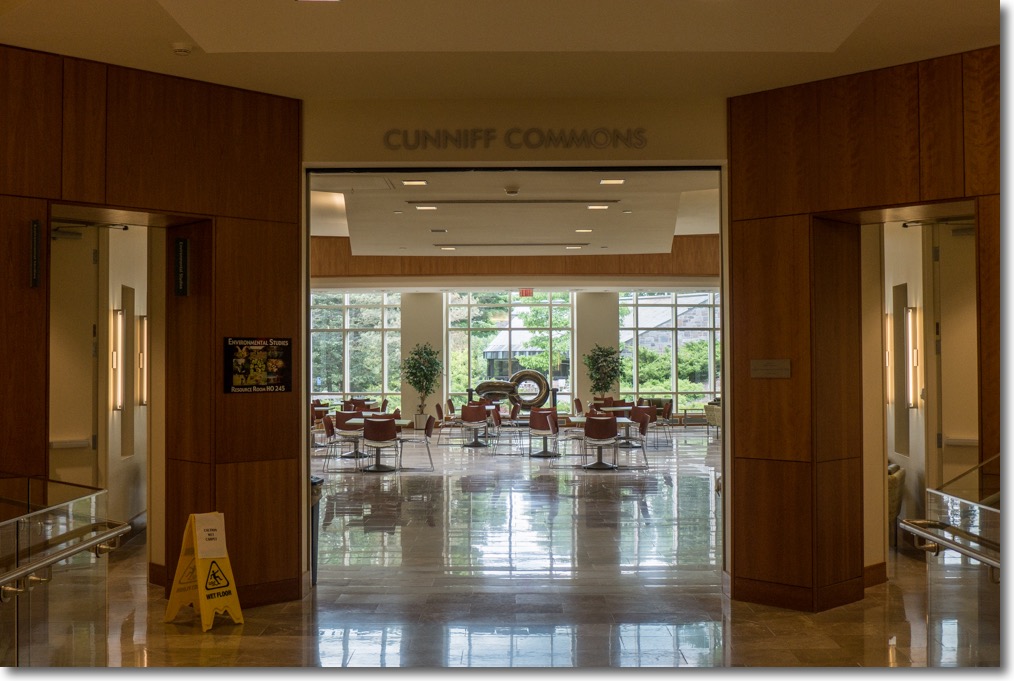
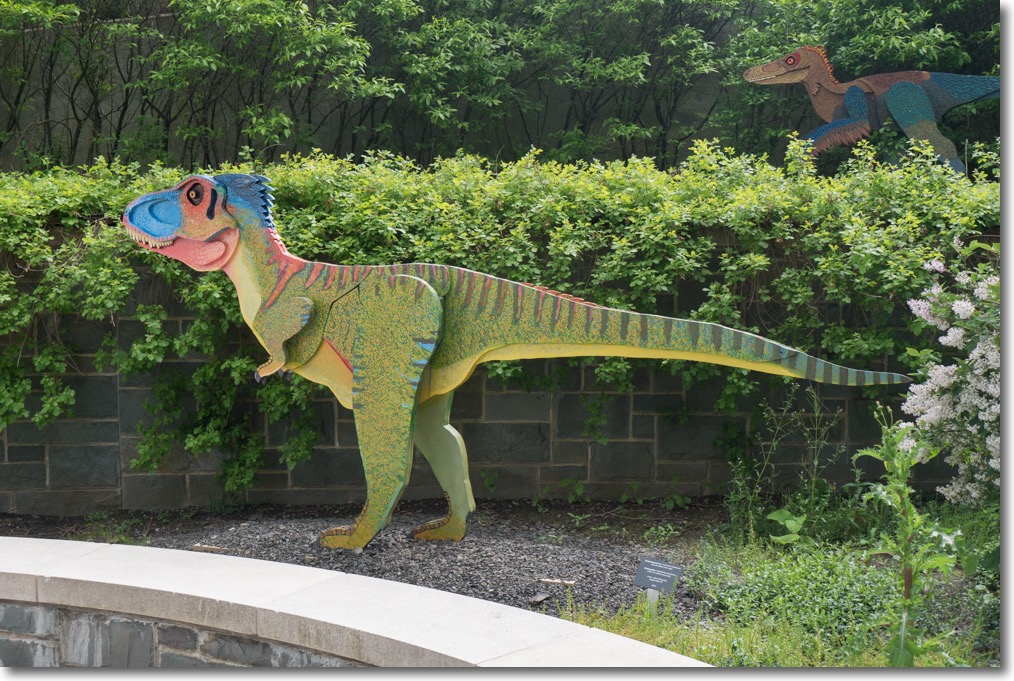
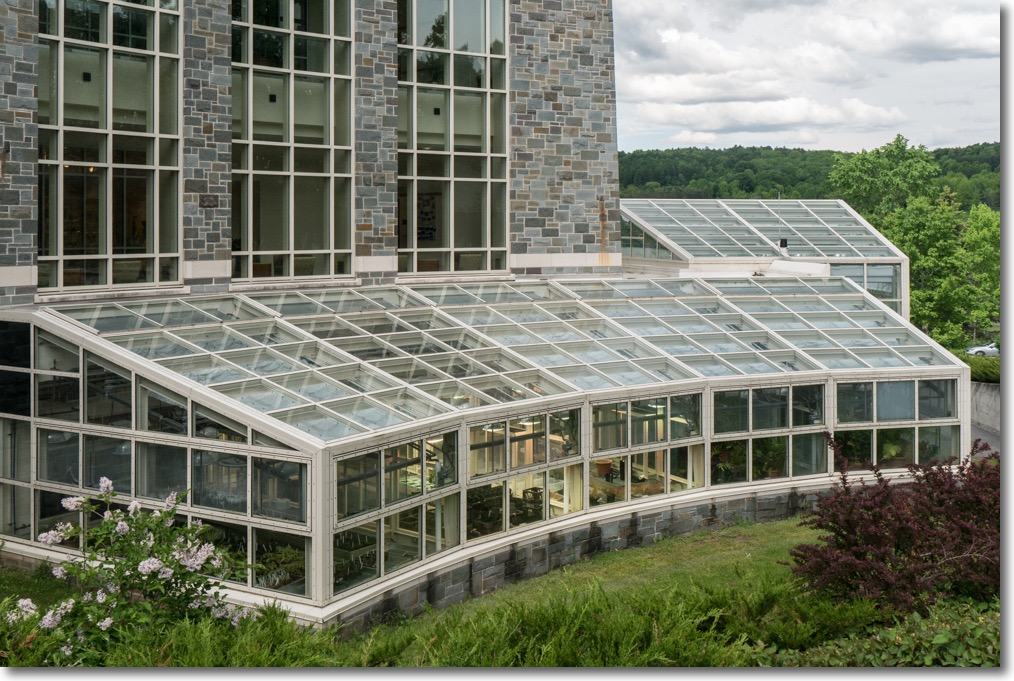
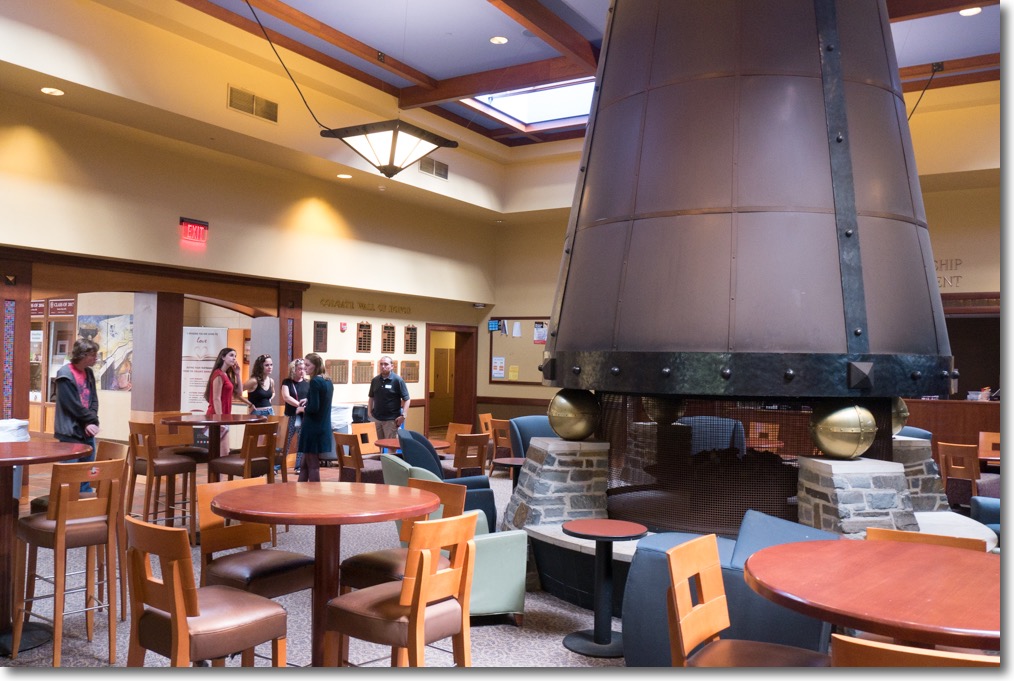
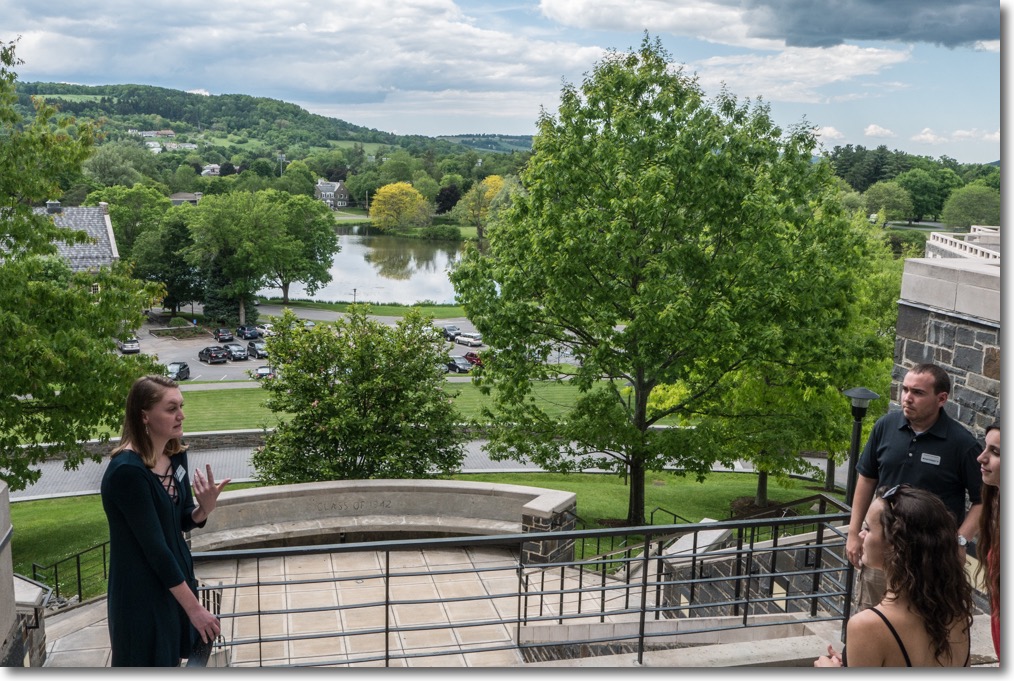
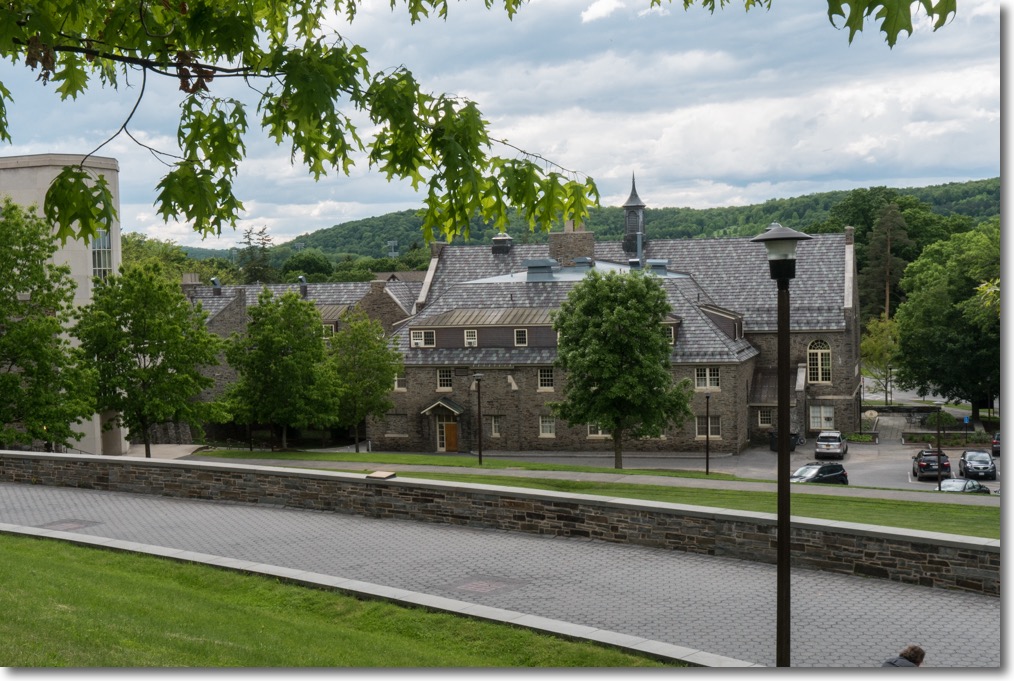
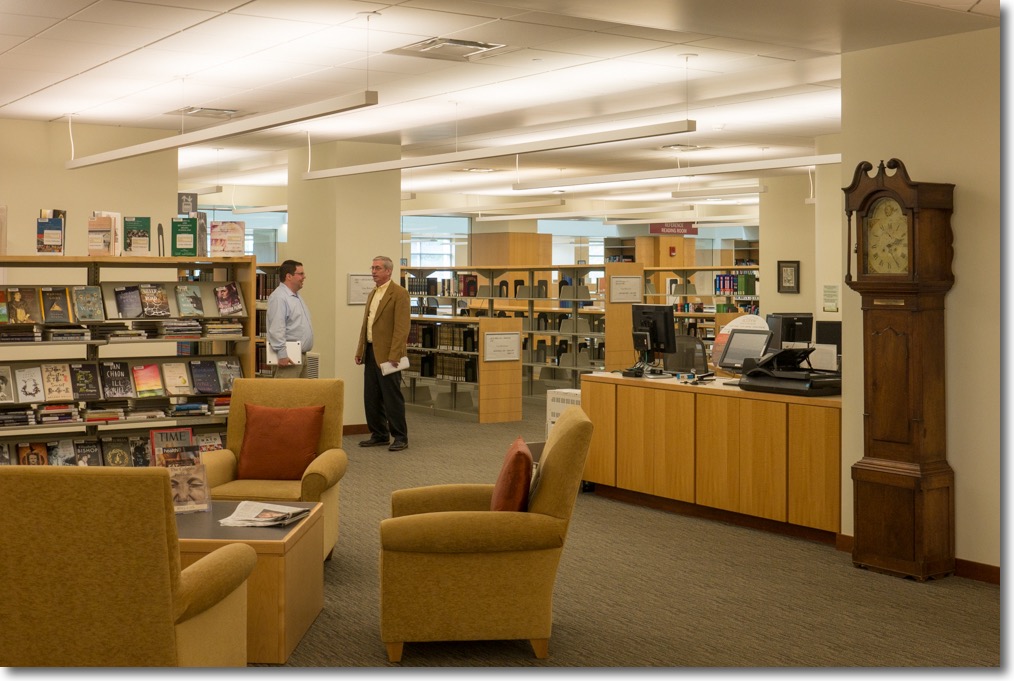
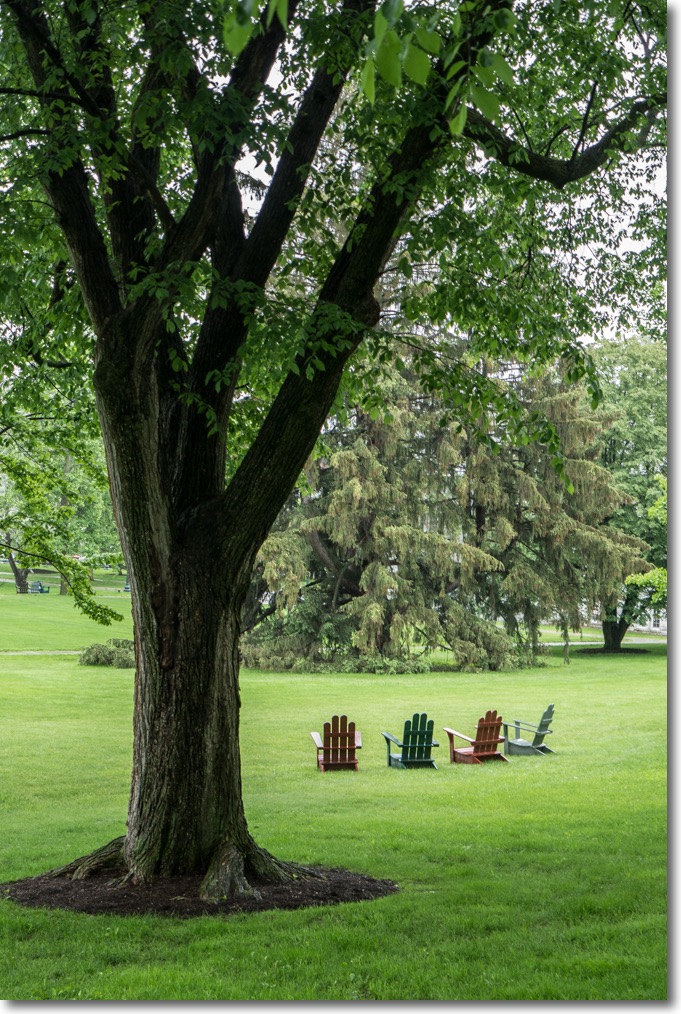
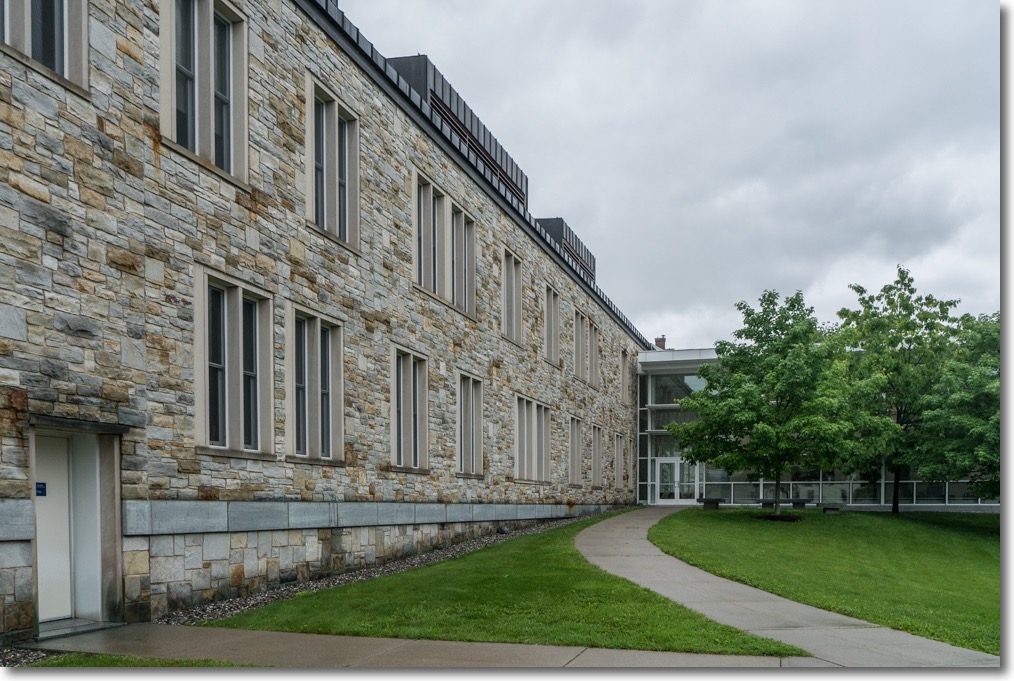
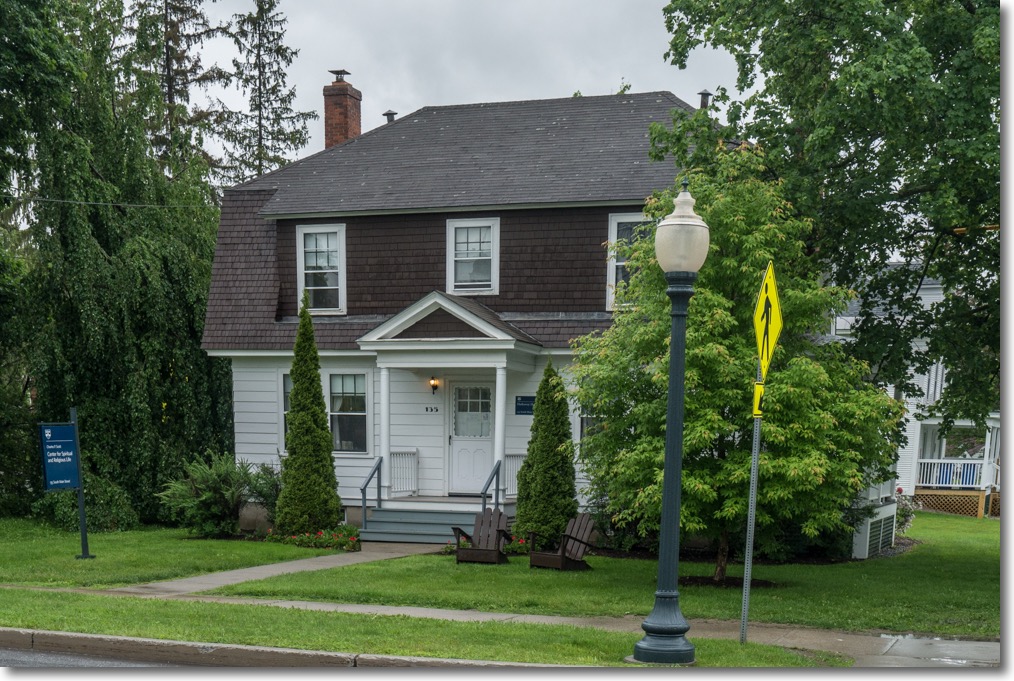
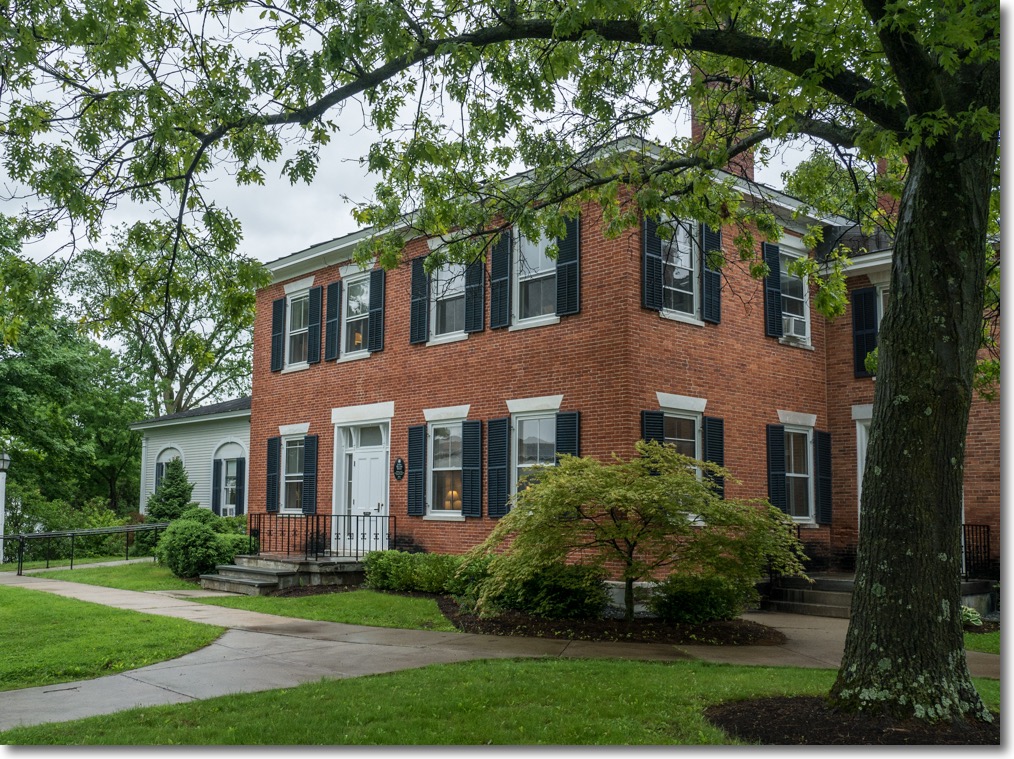 Centeno House, the Parton Center for Health and Wellness.
Centeno House, the Parton Center for Health and Wellness.